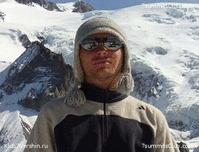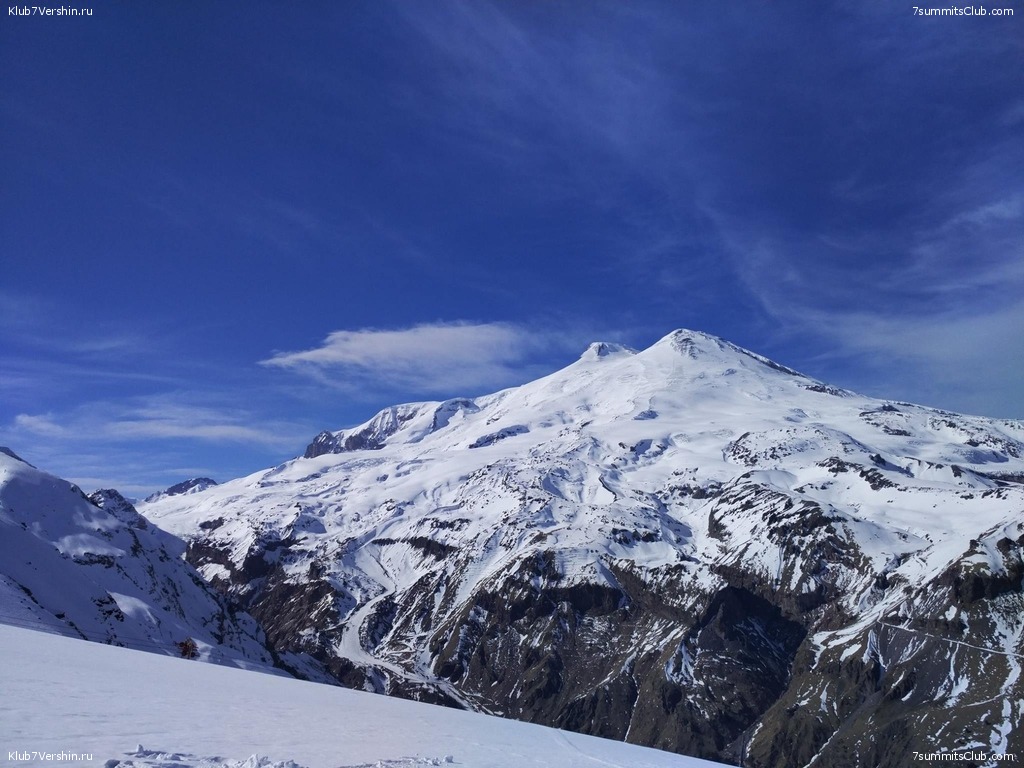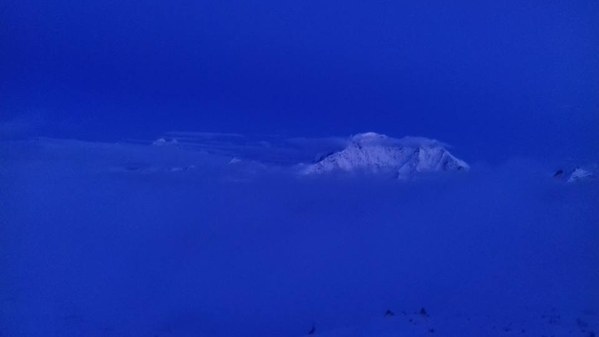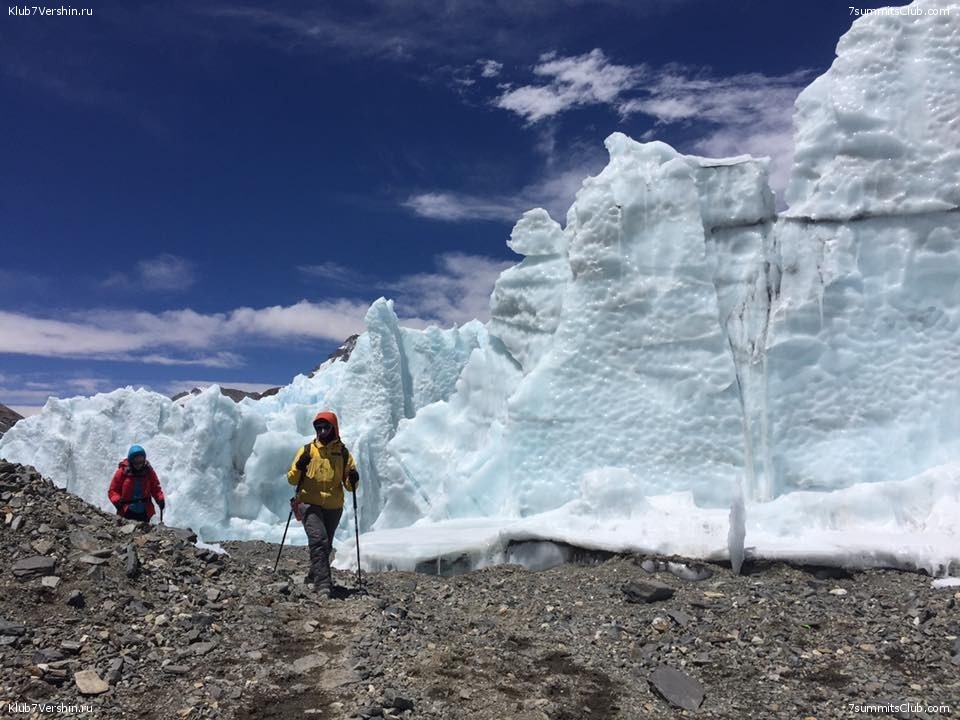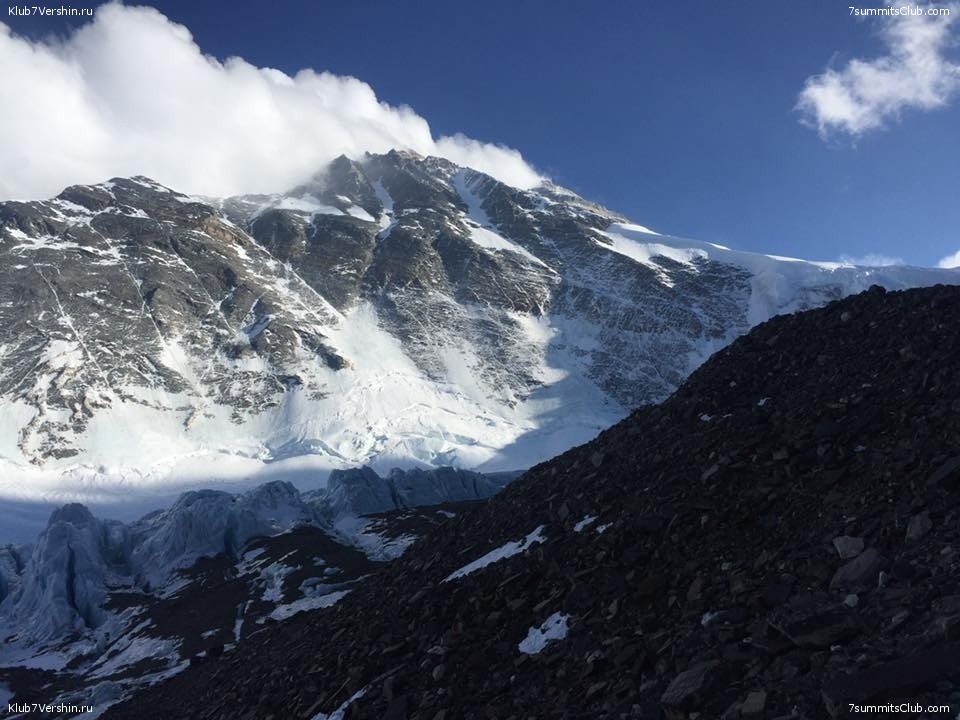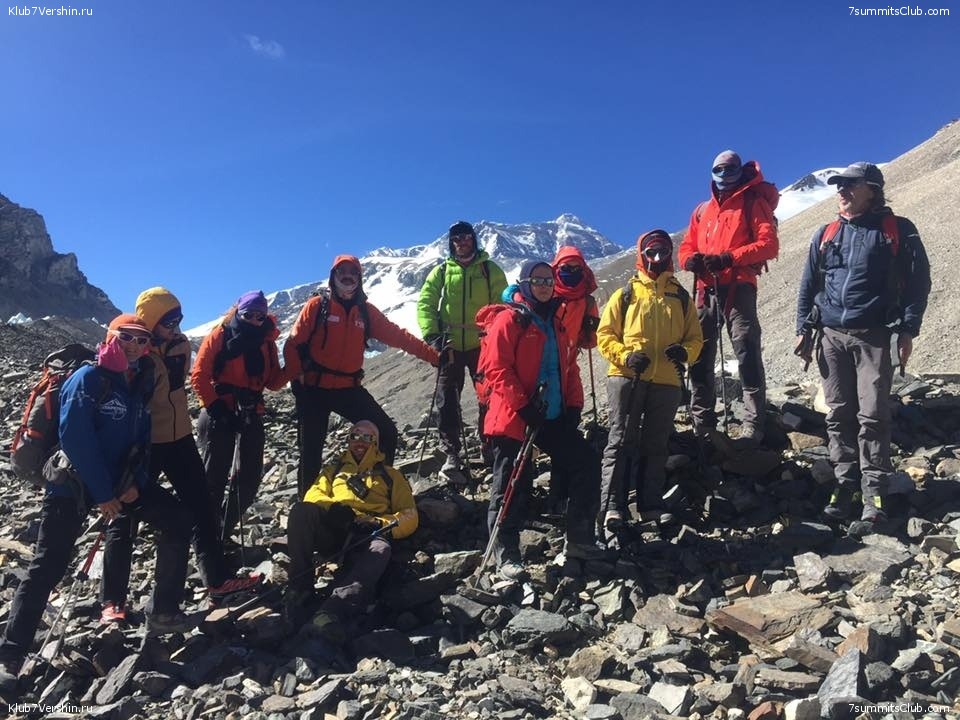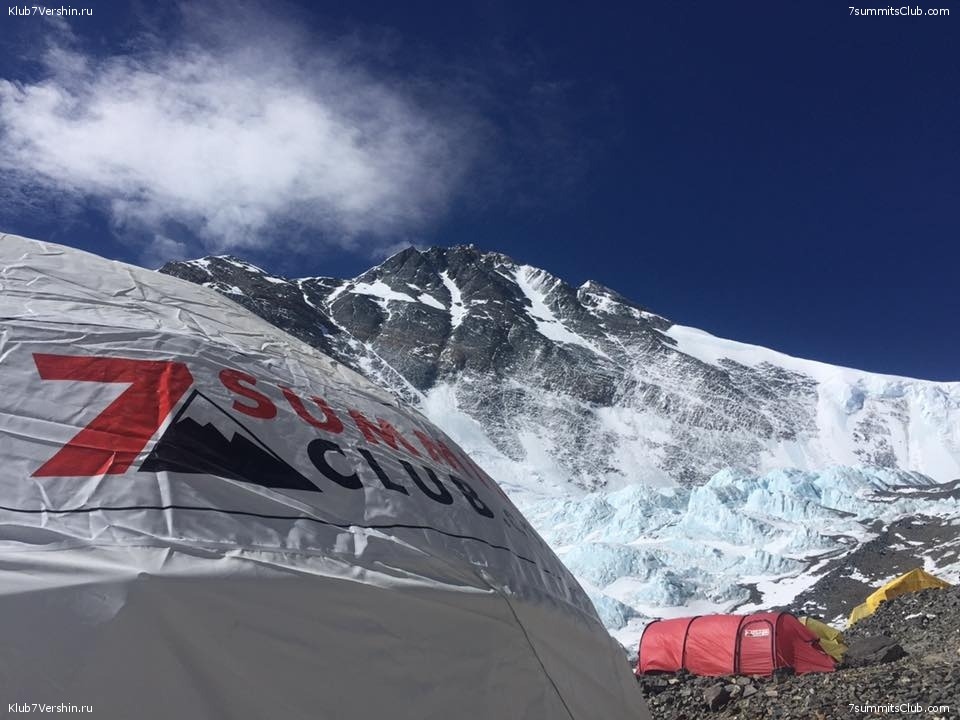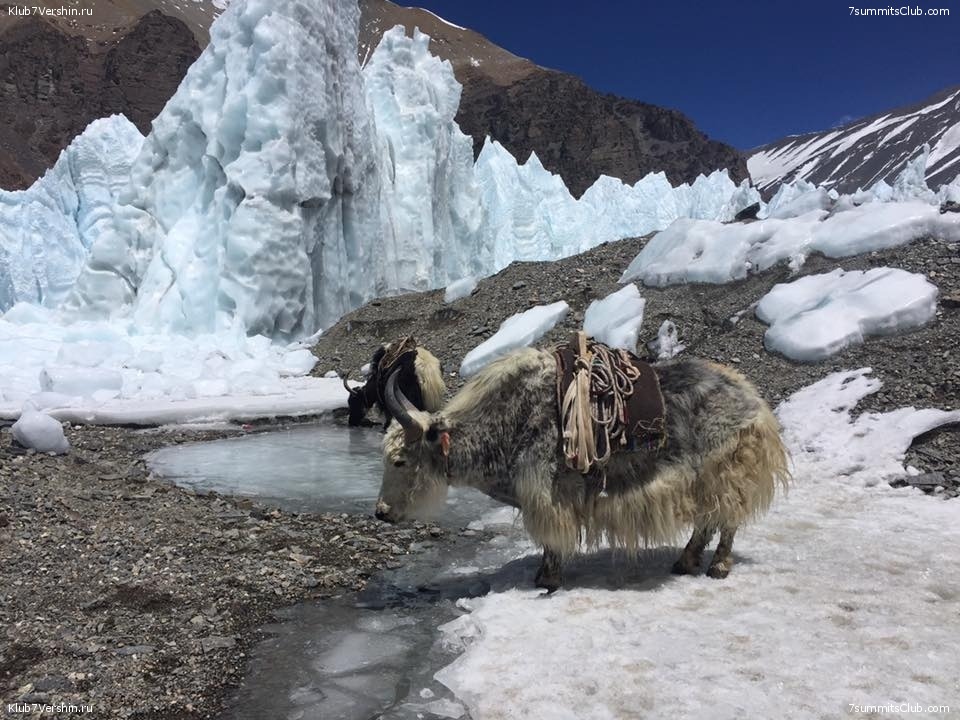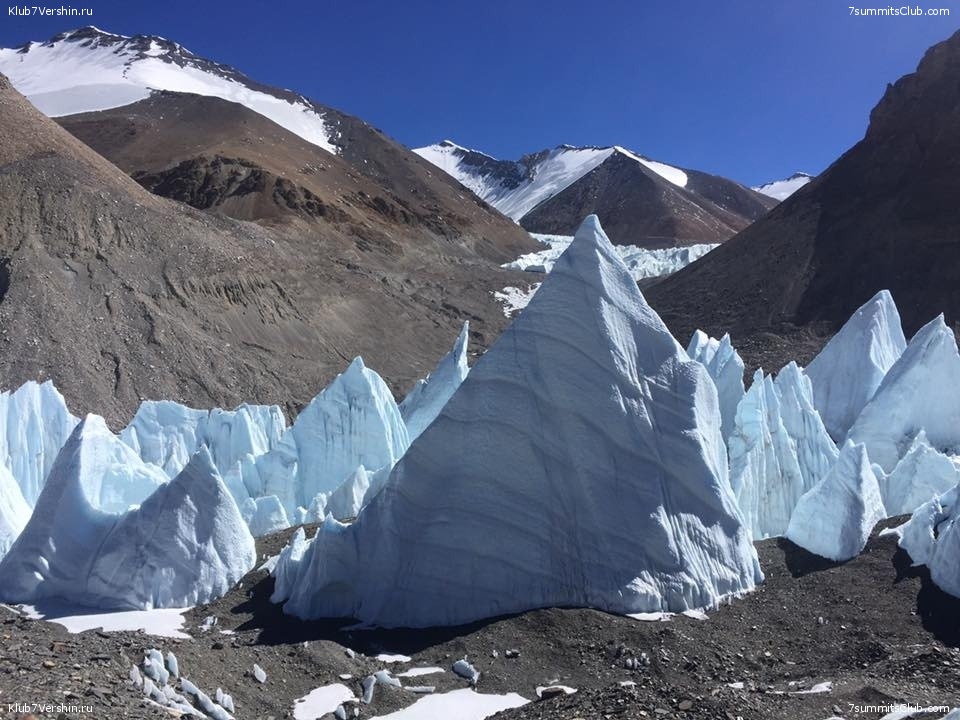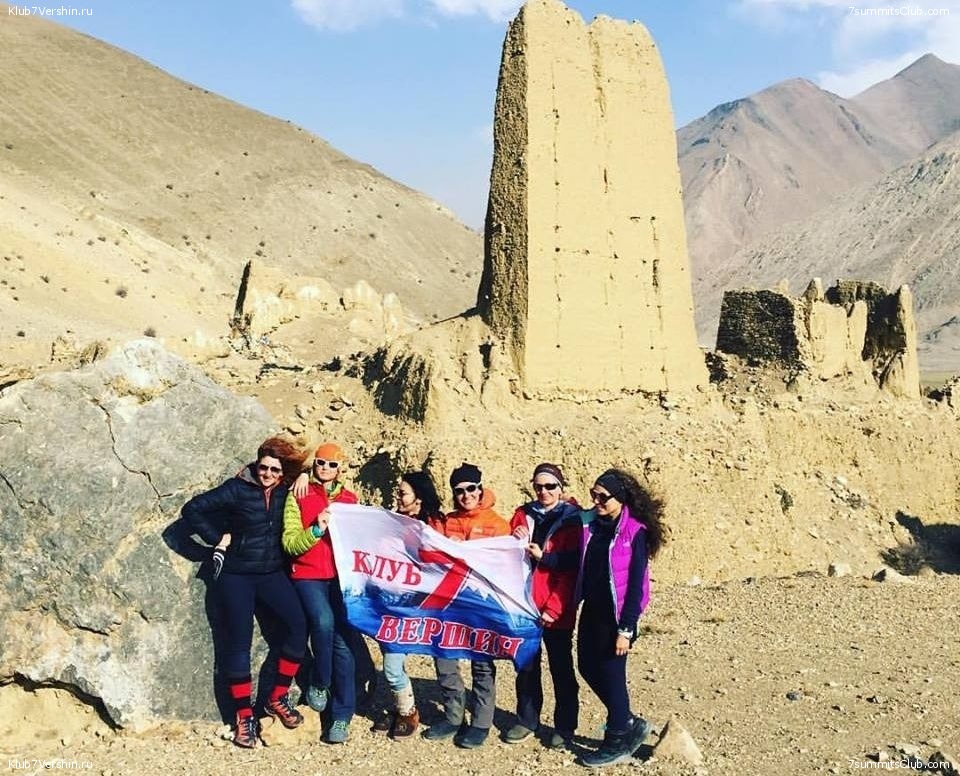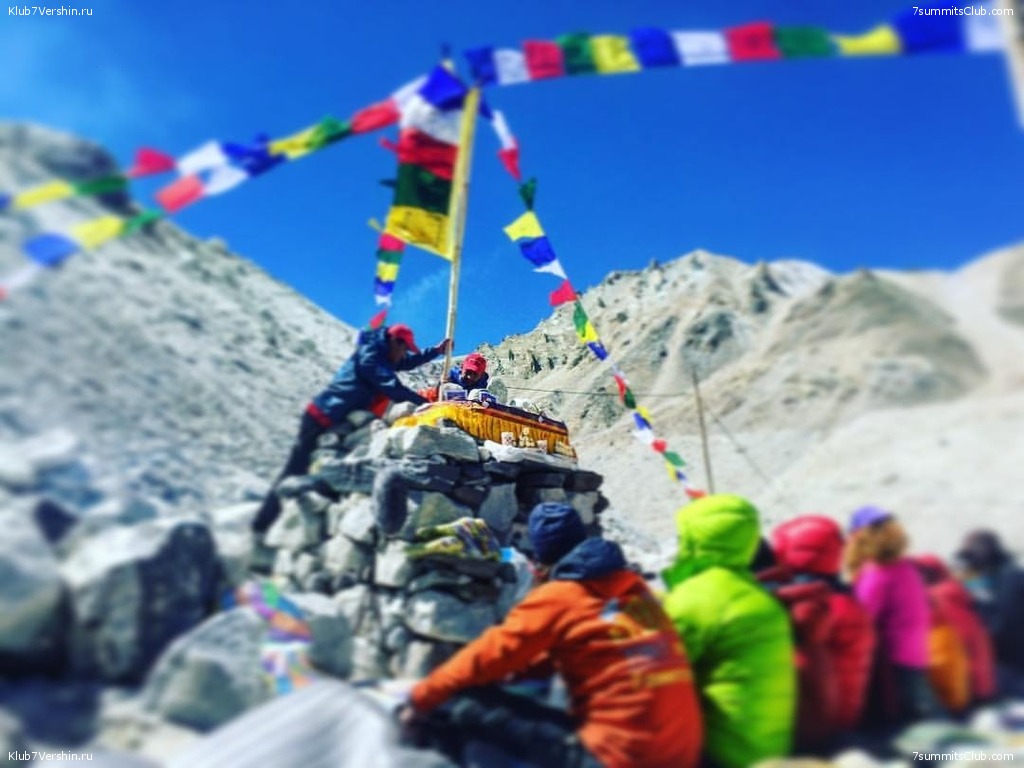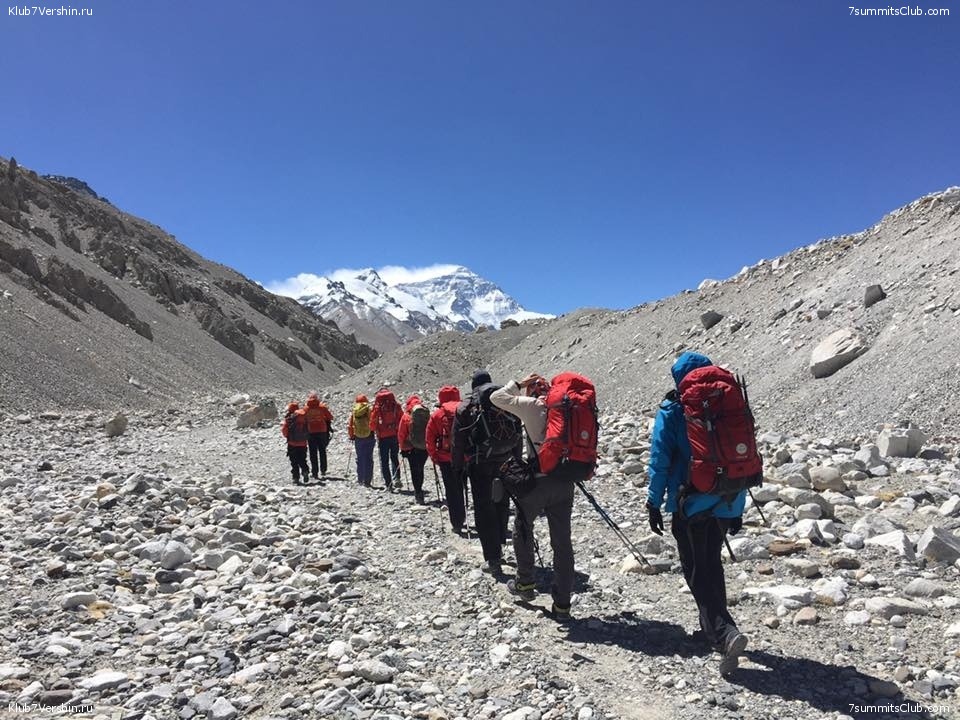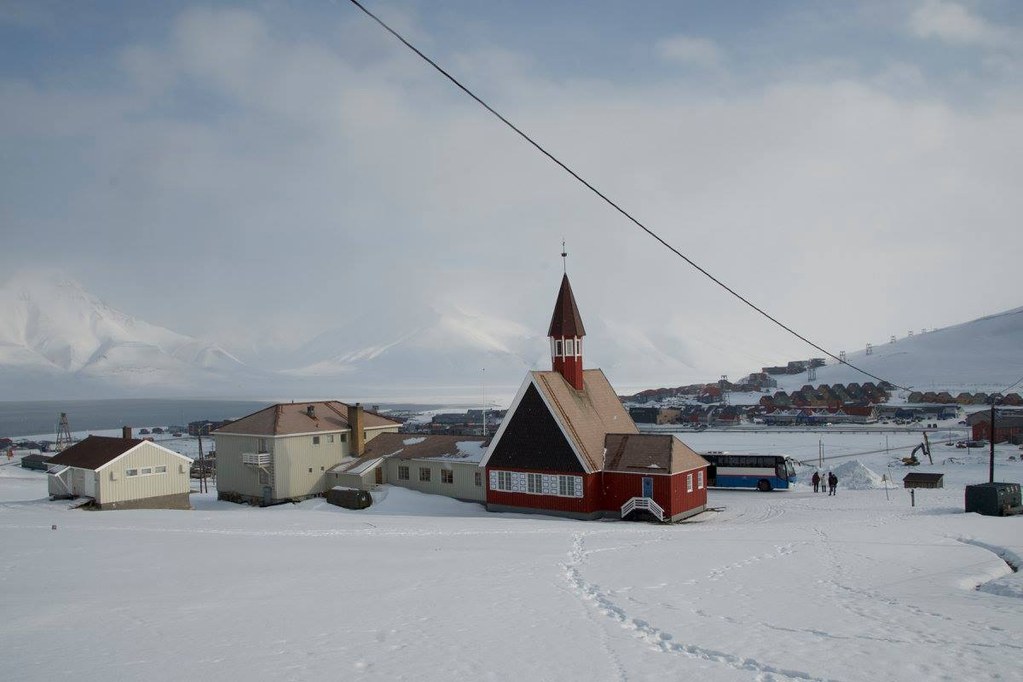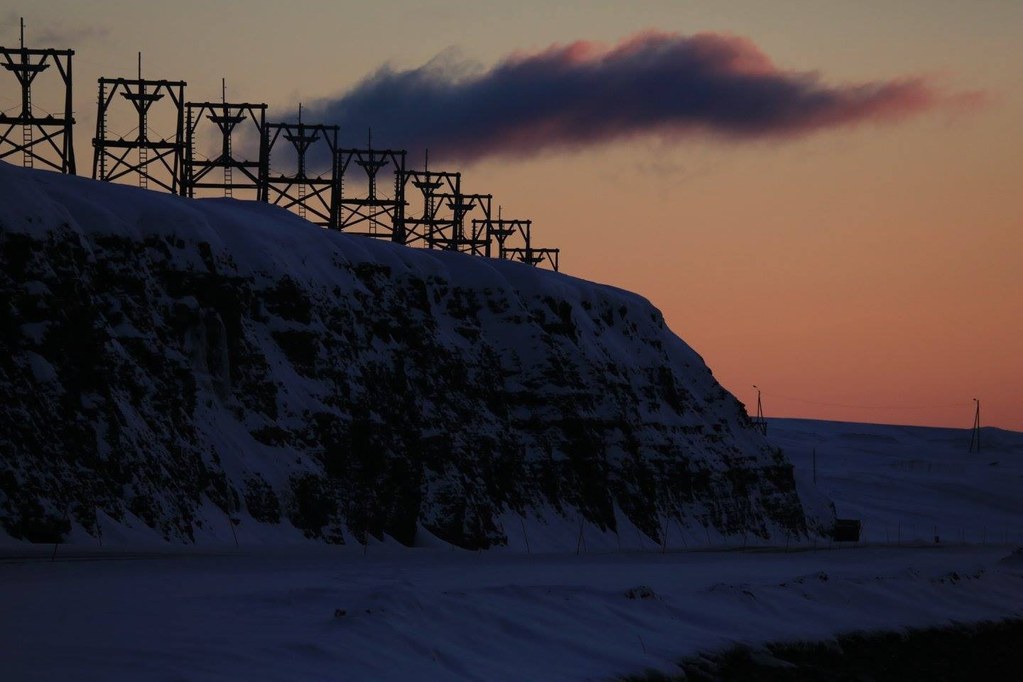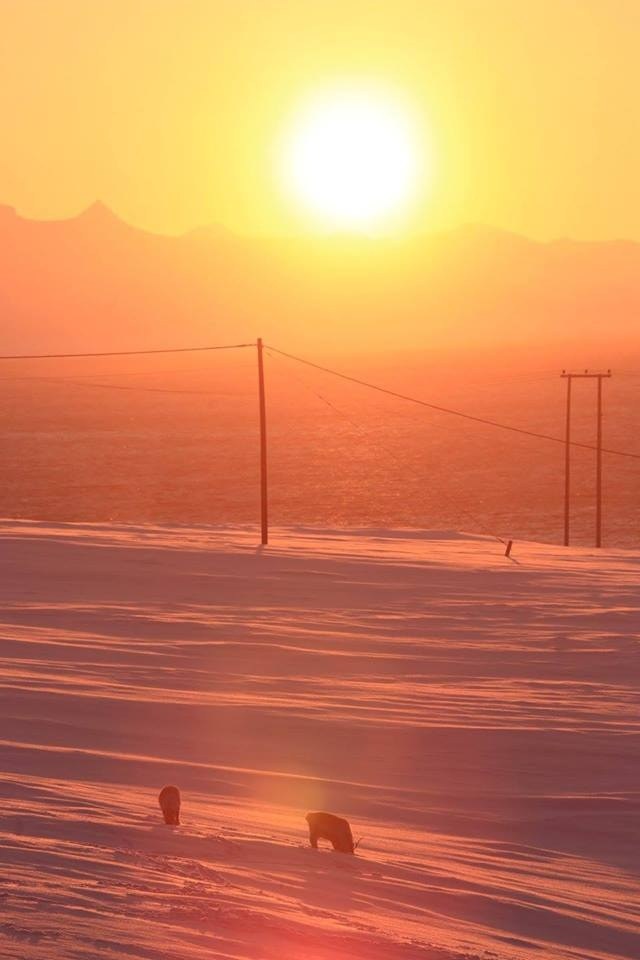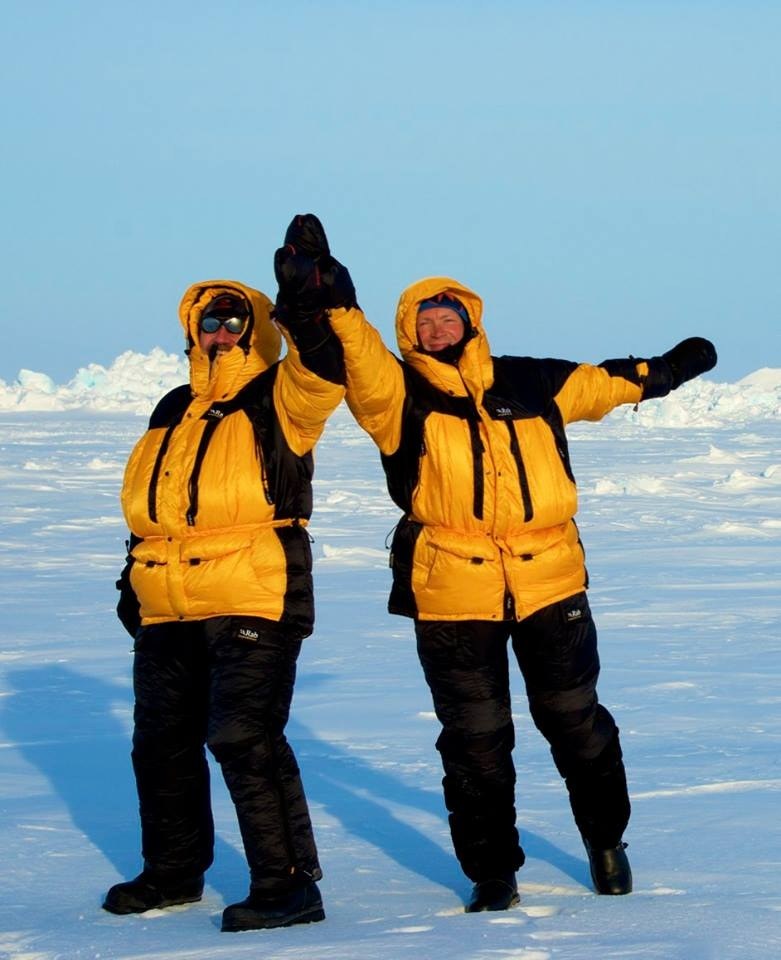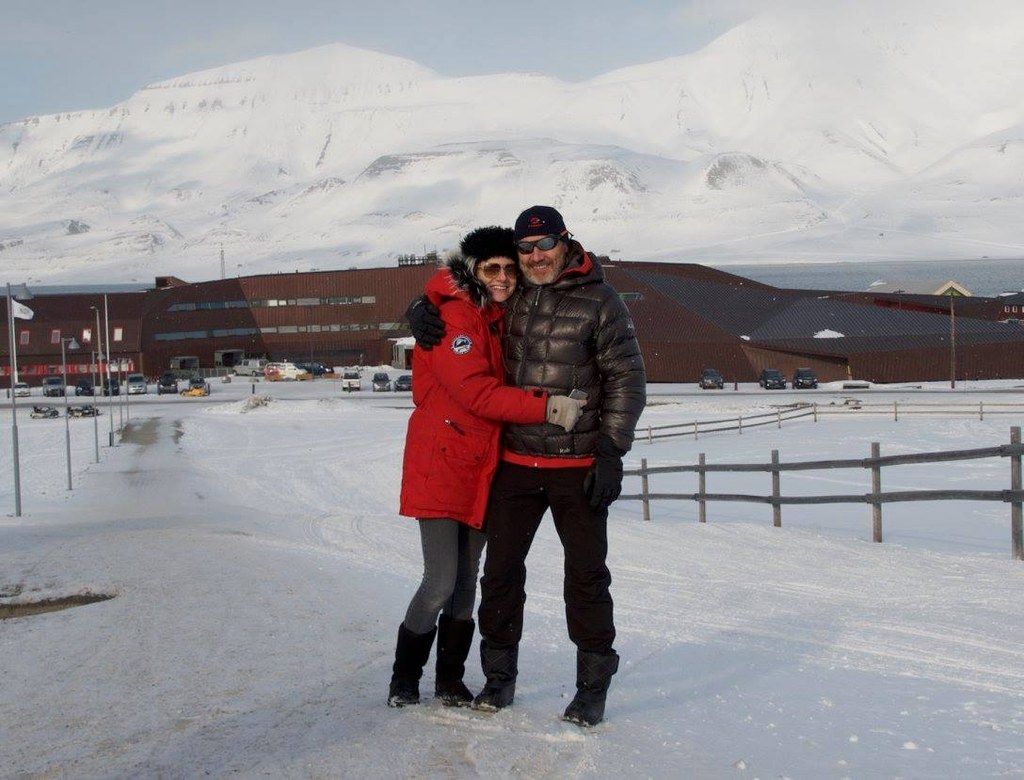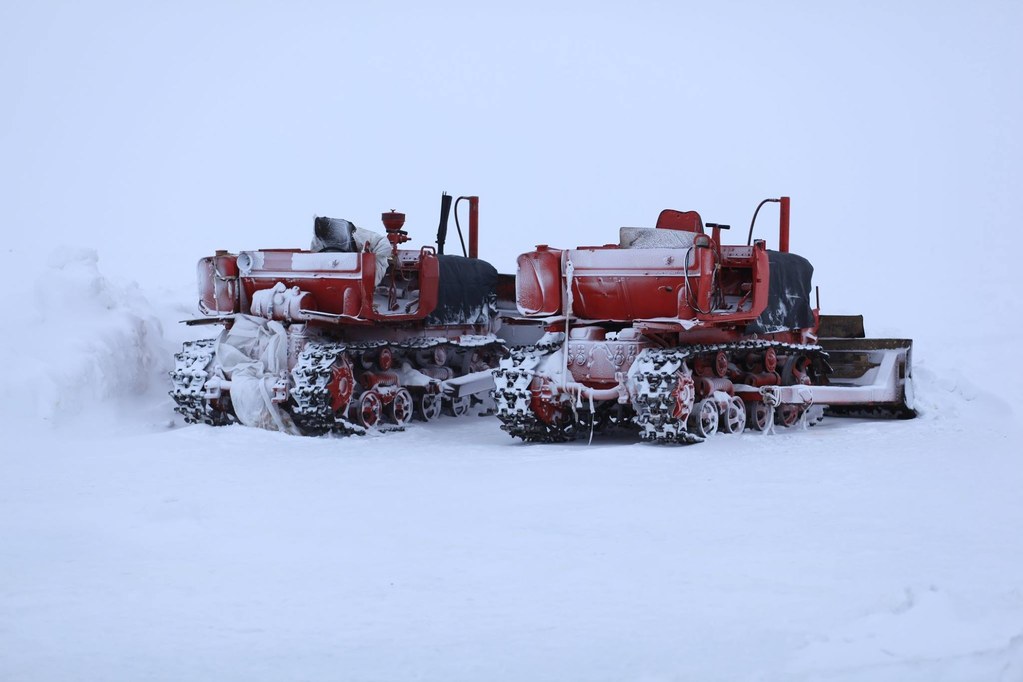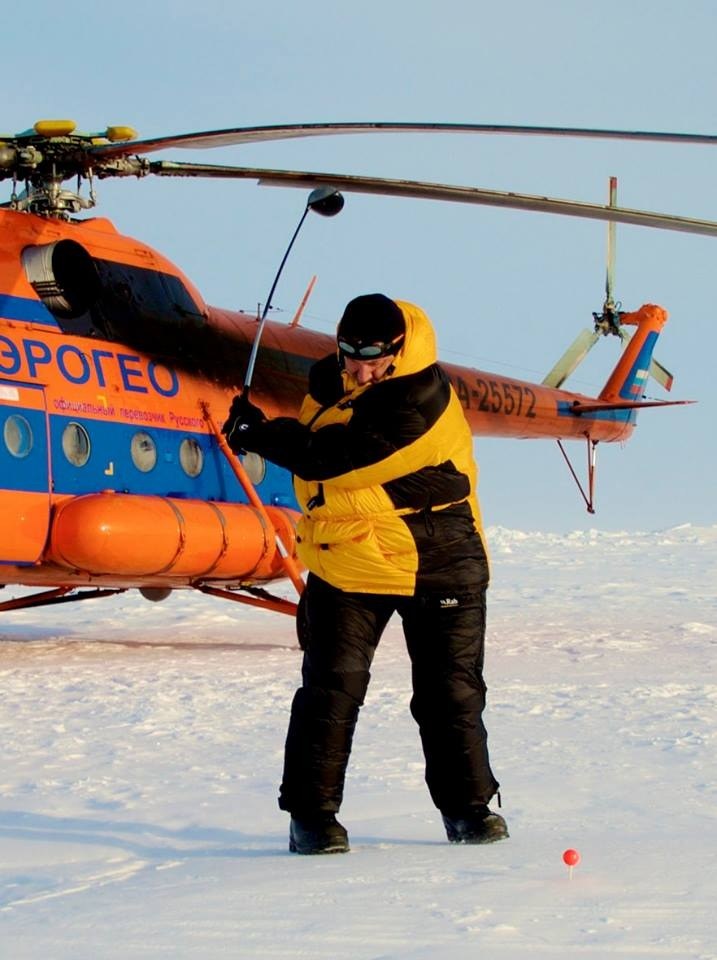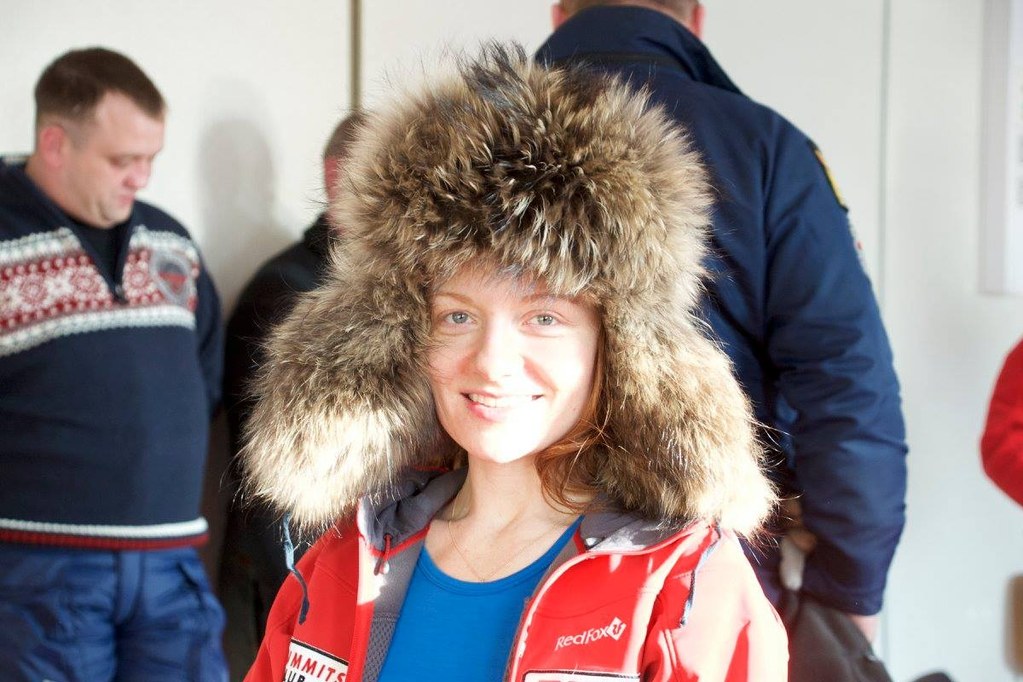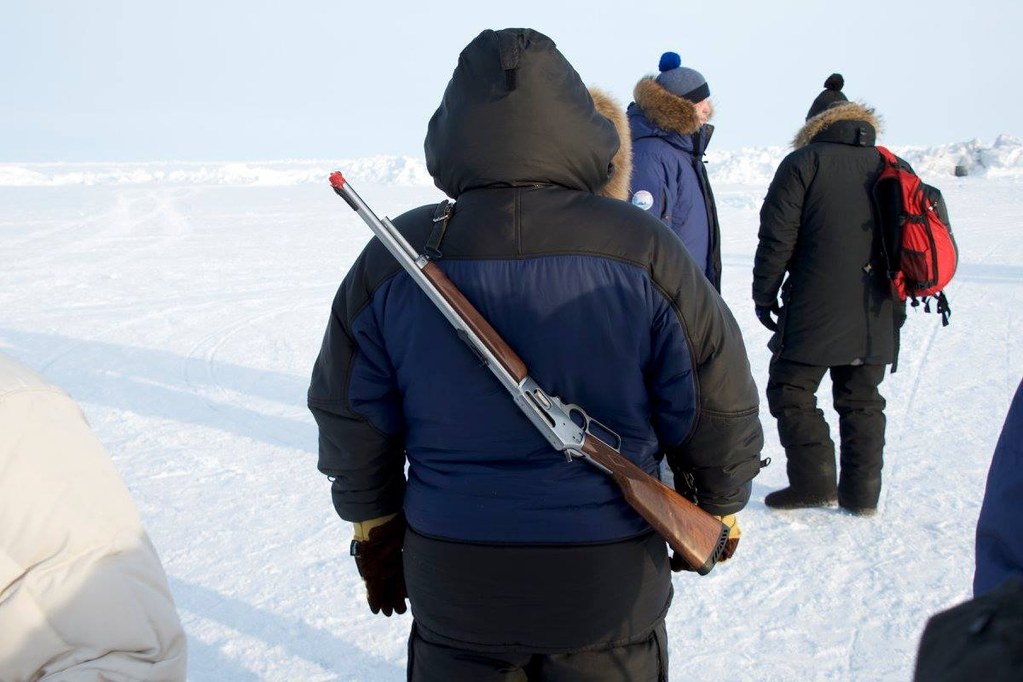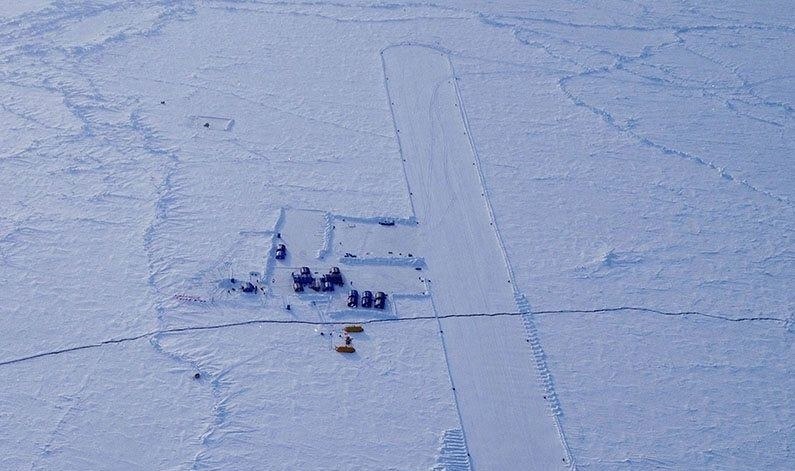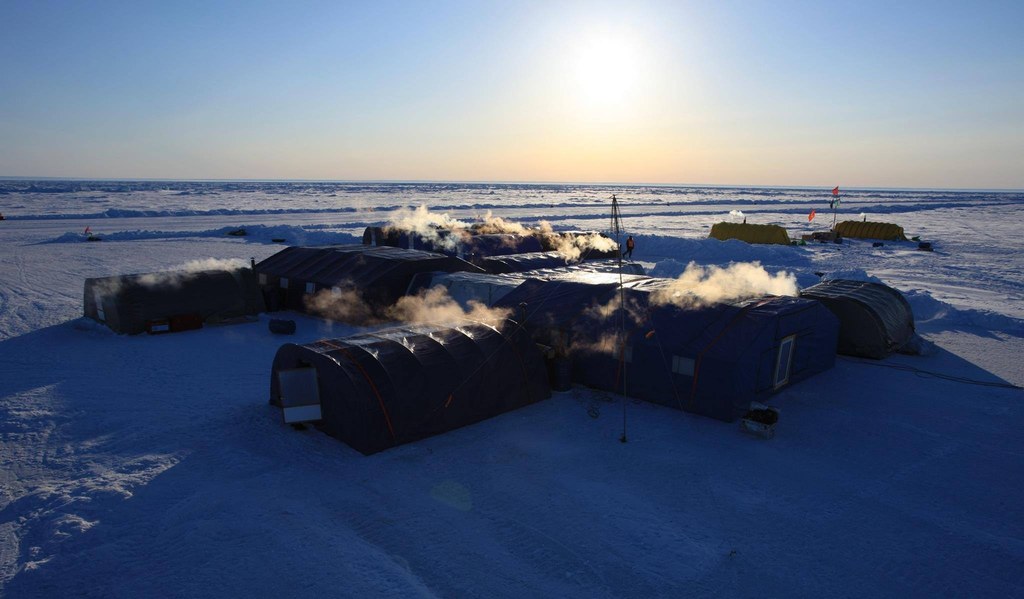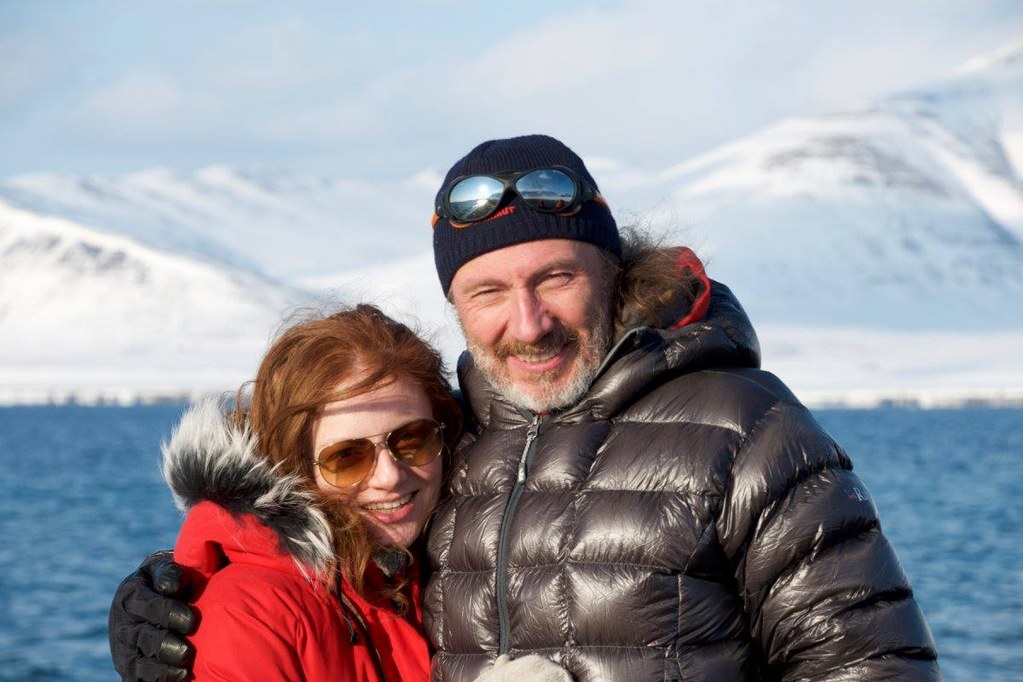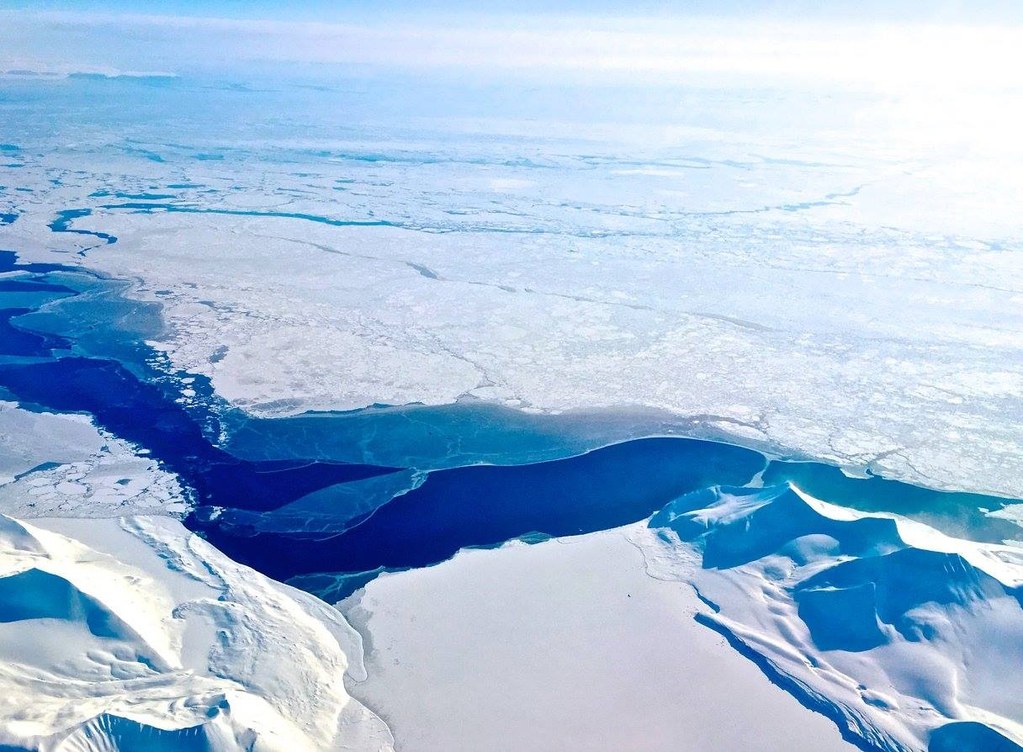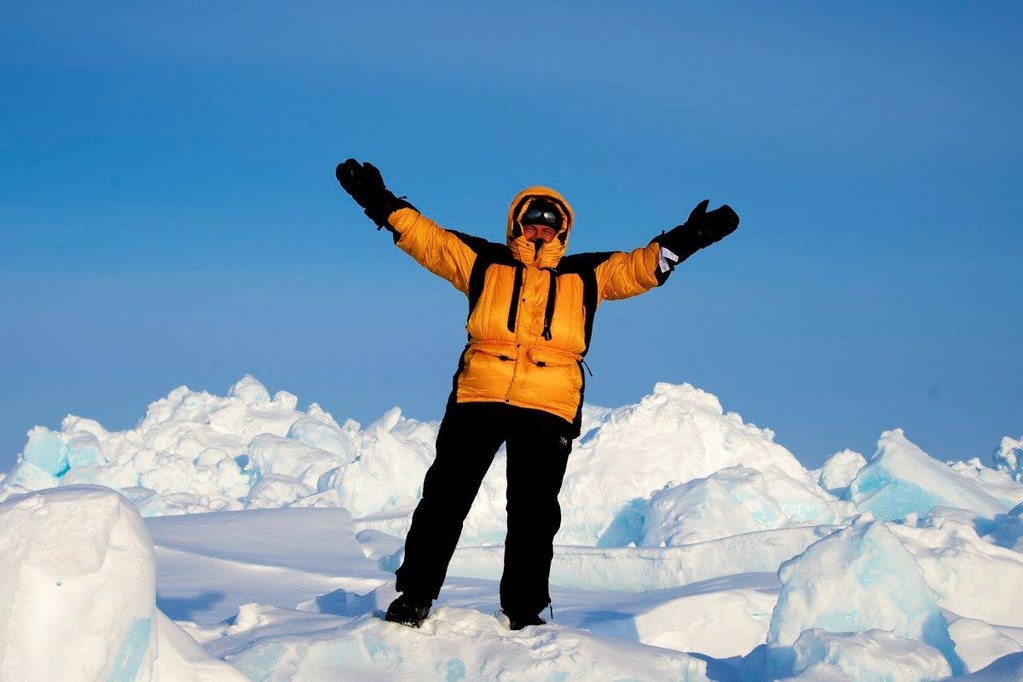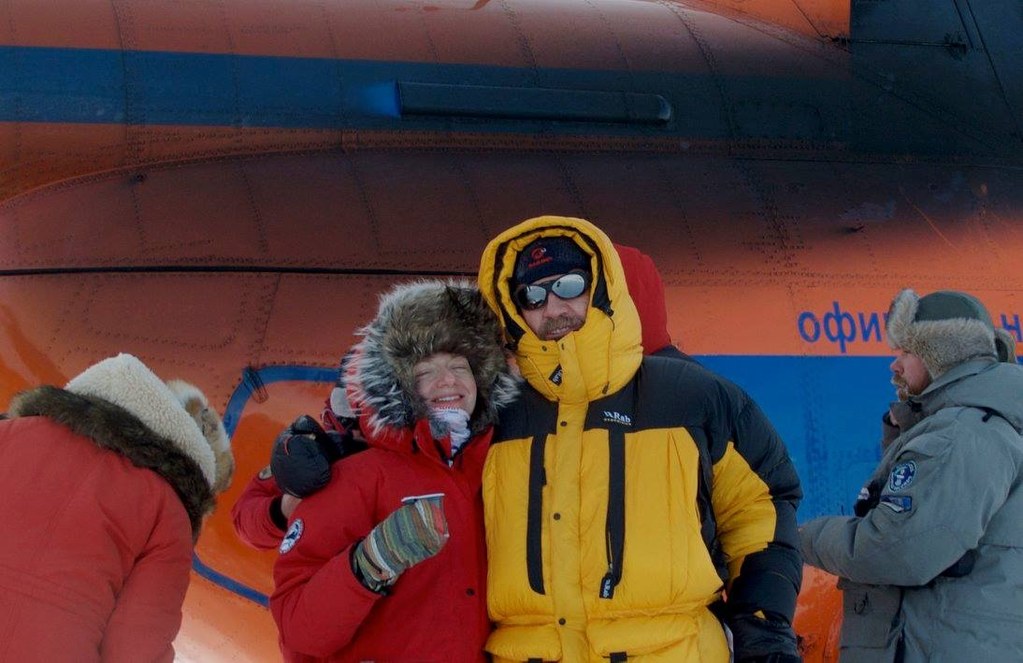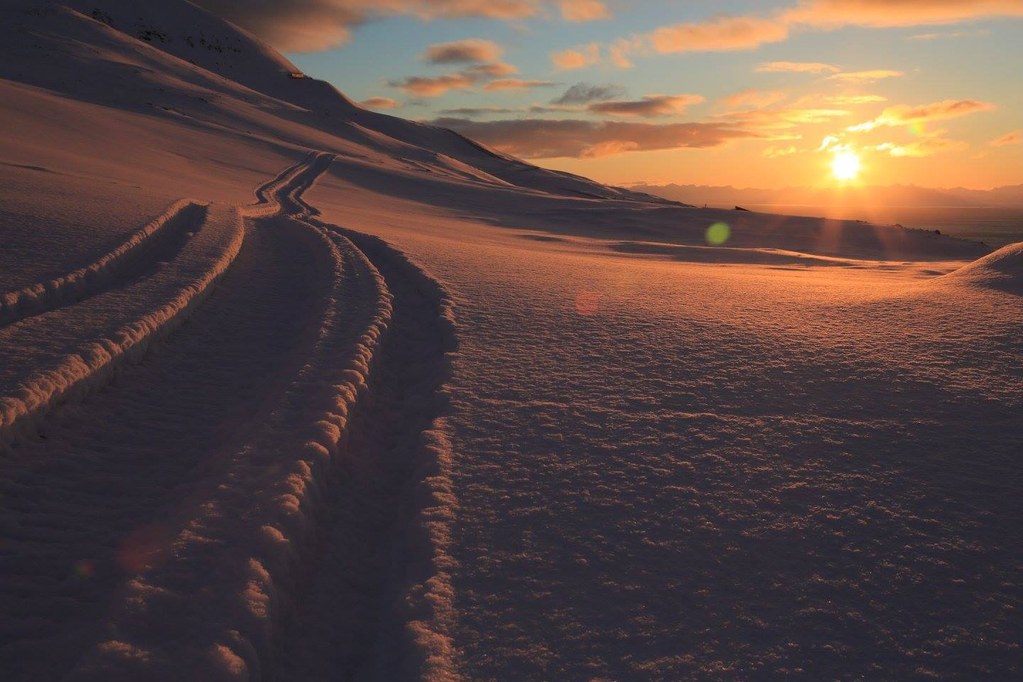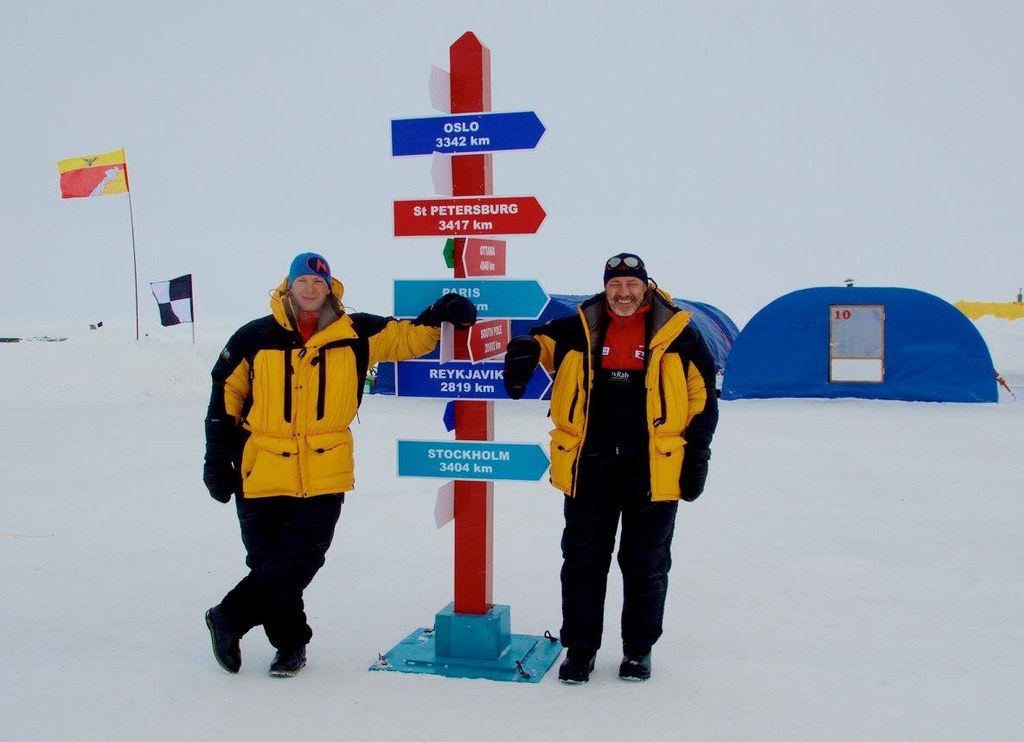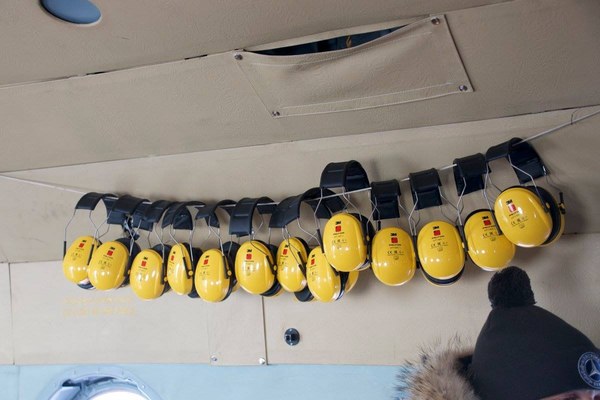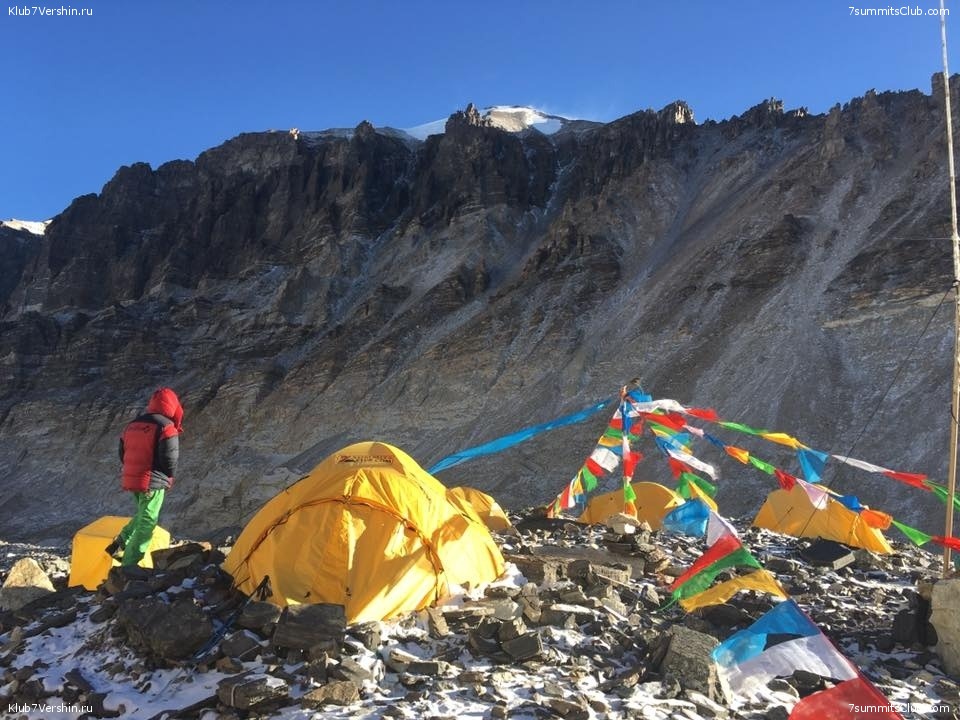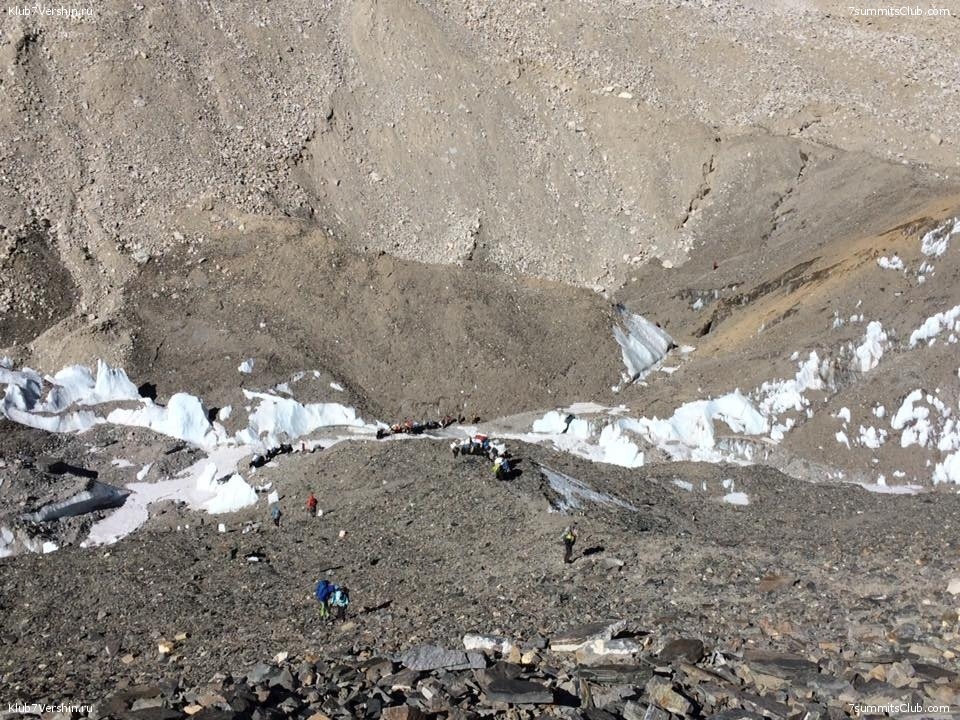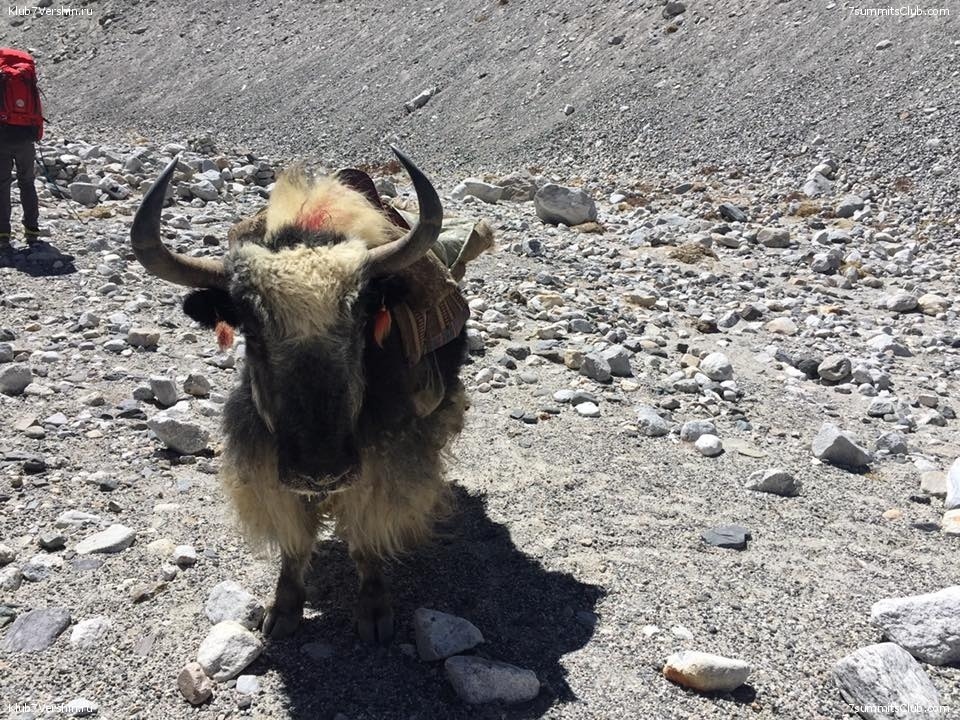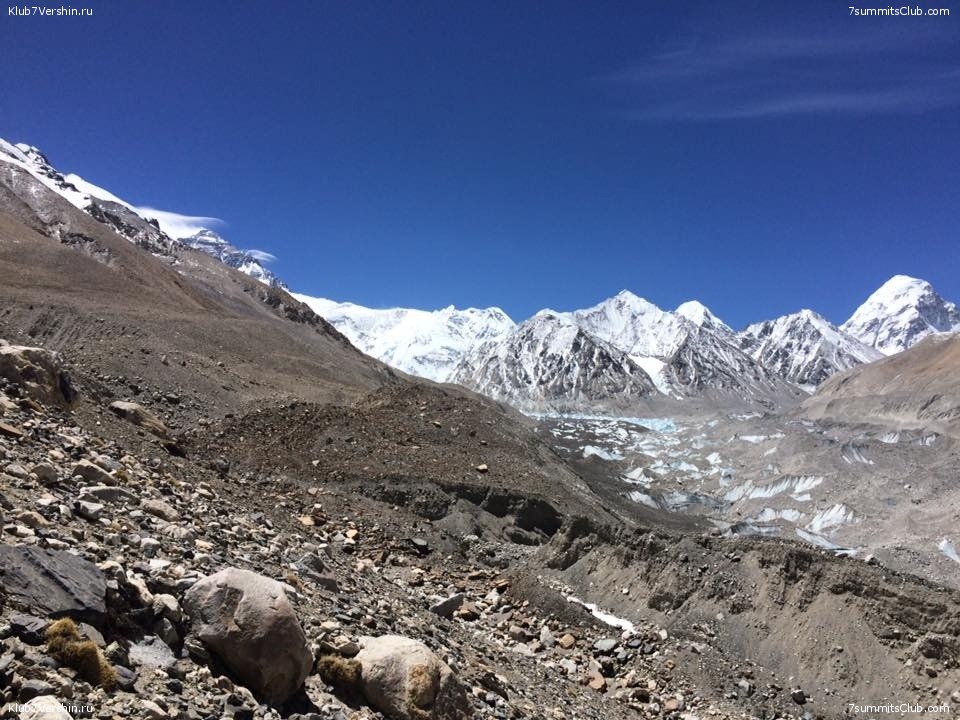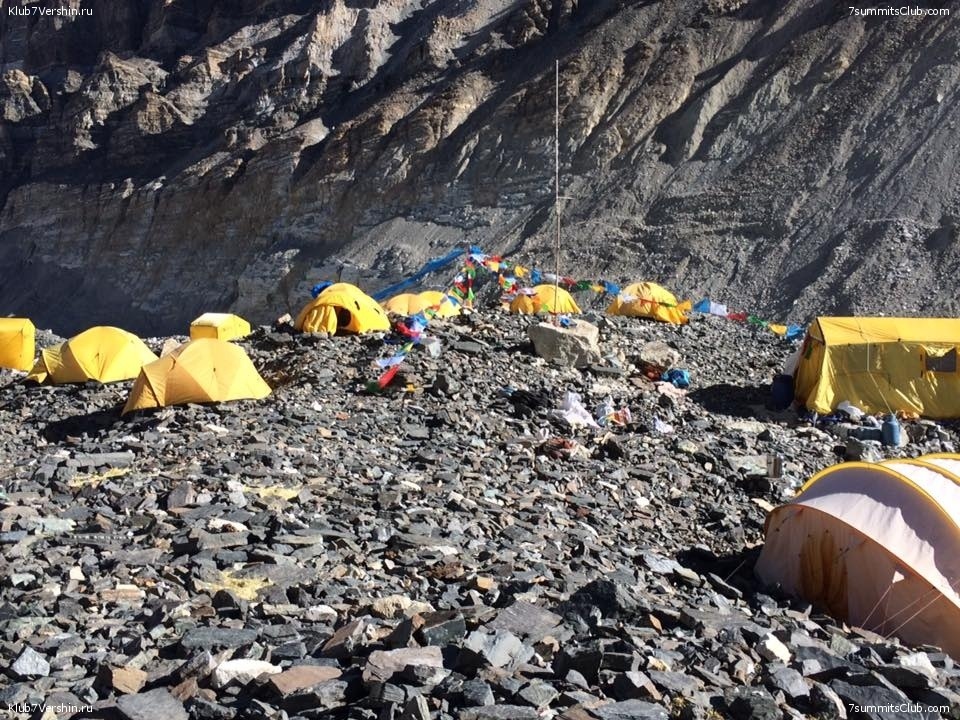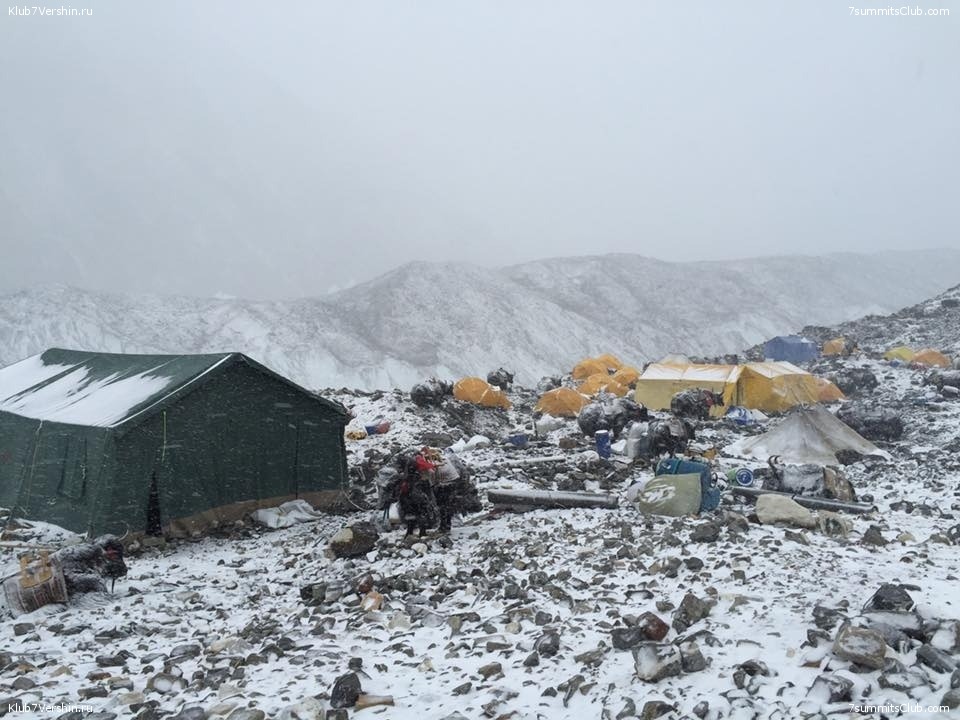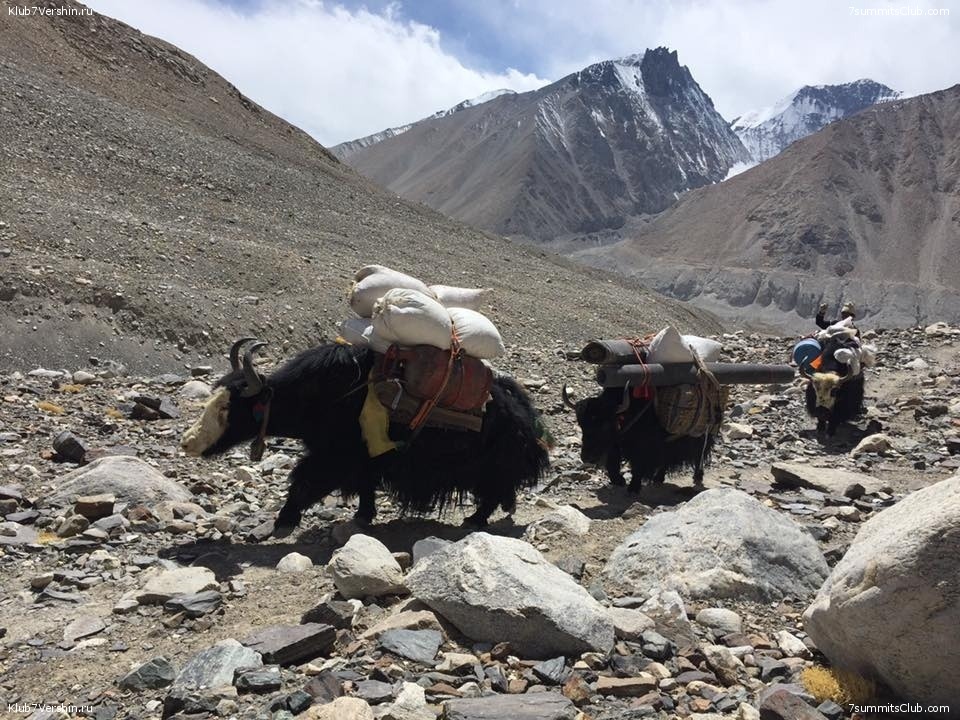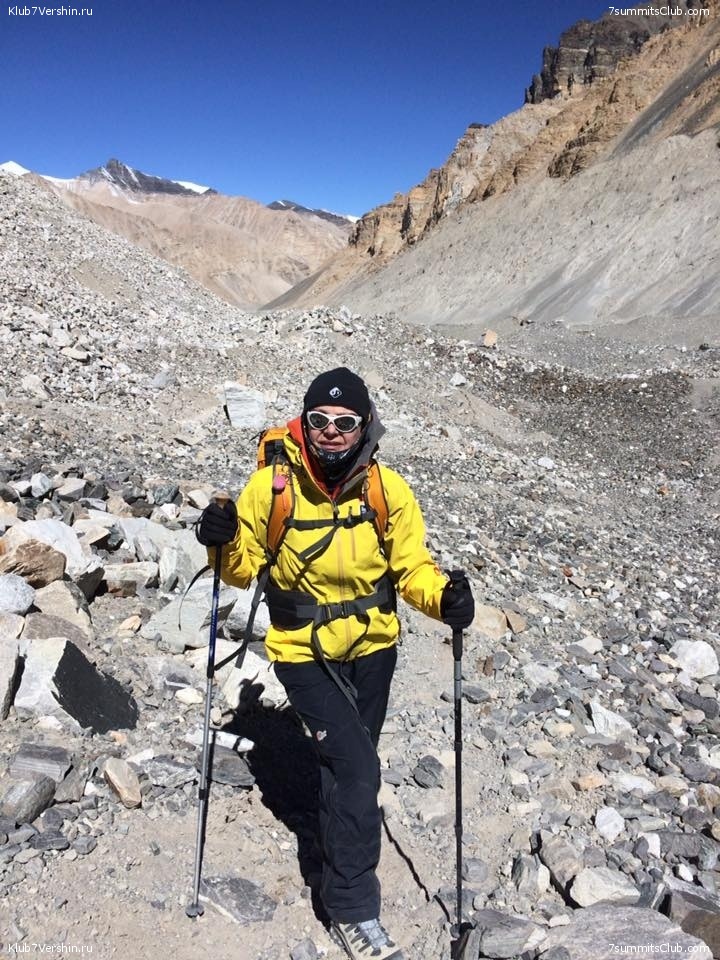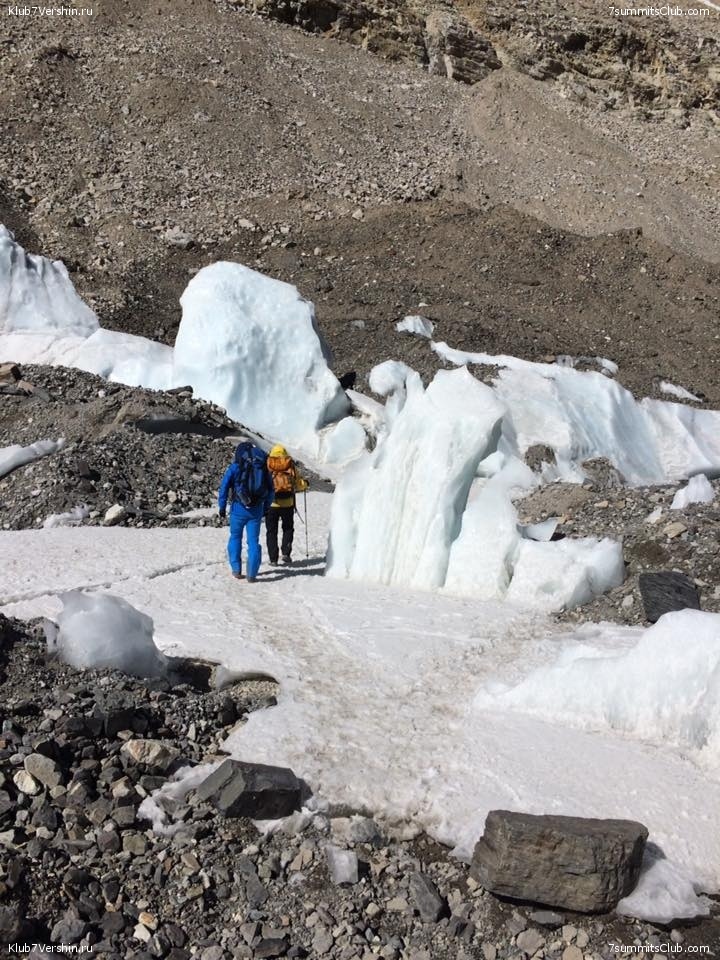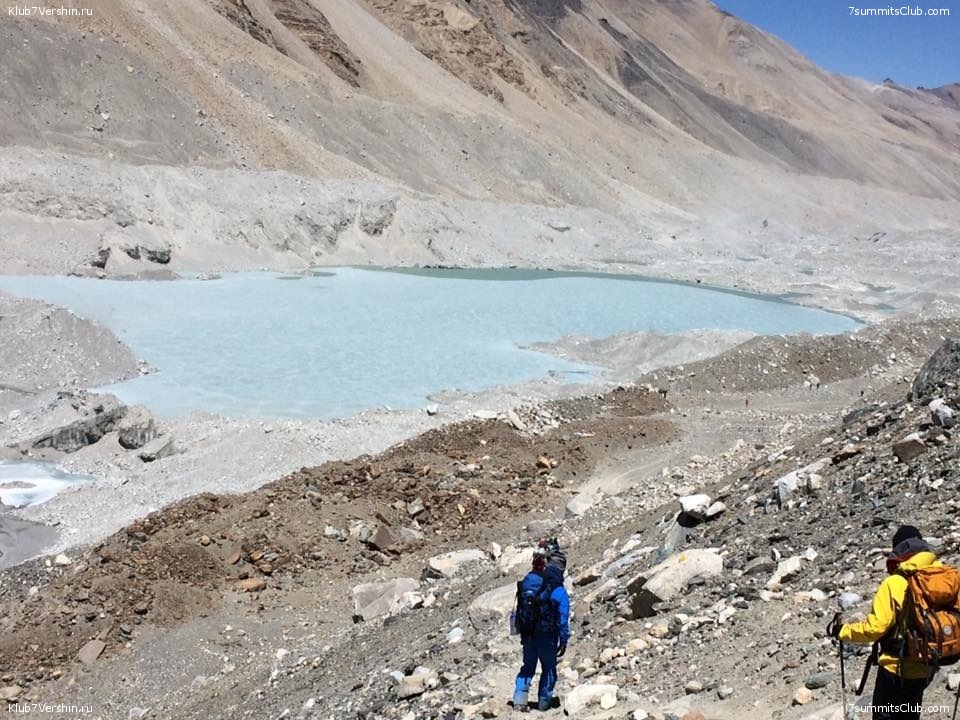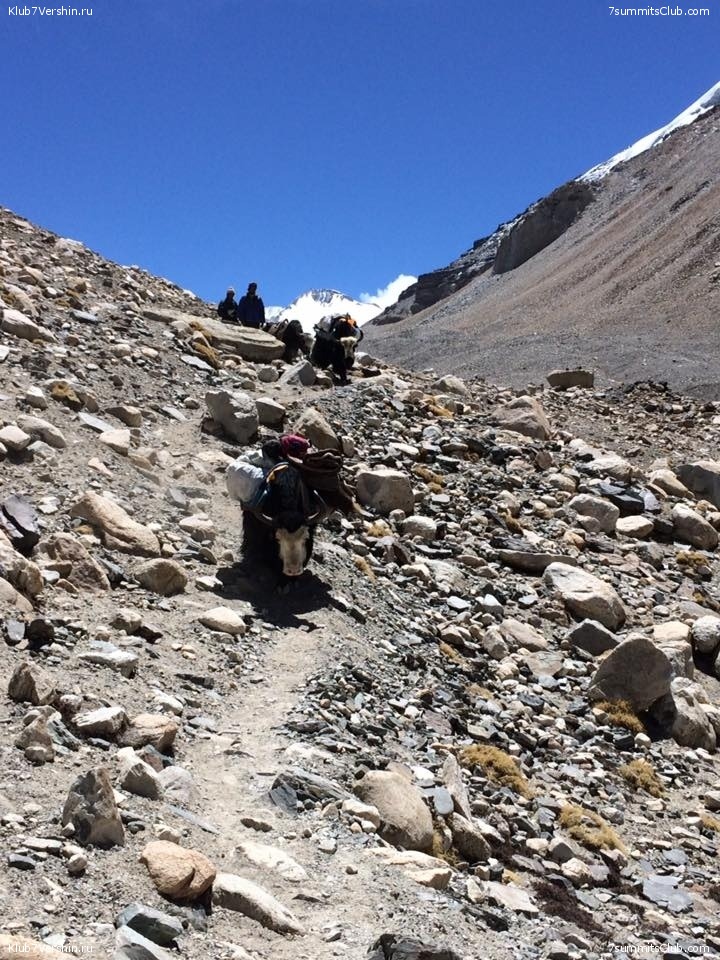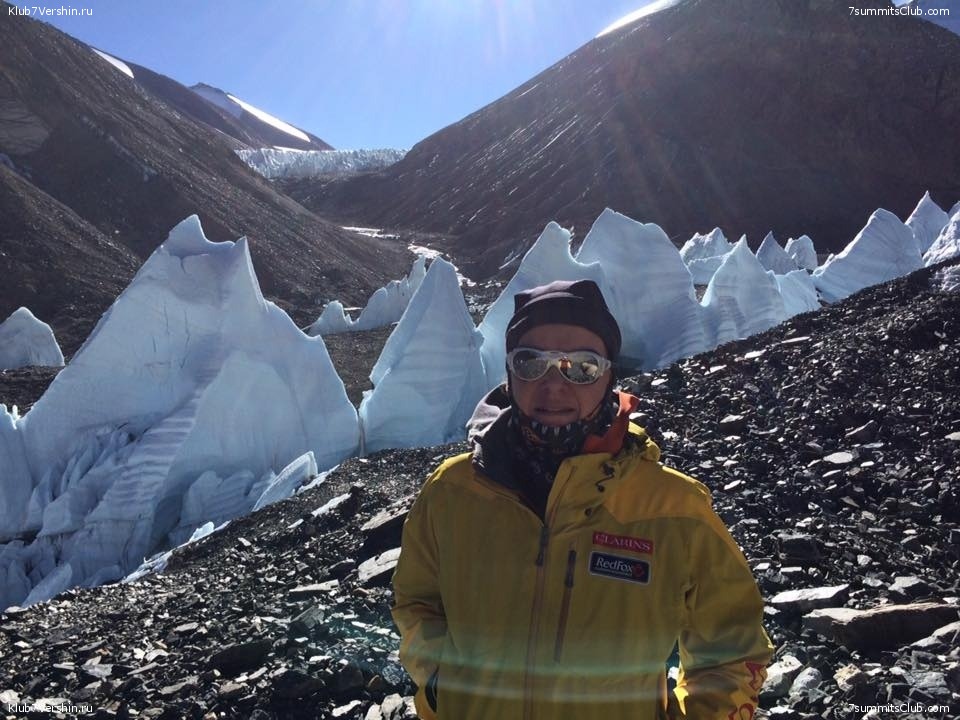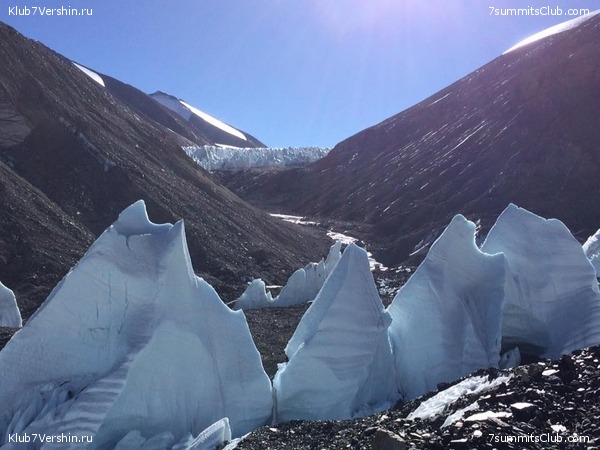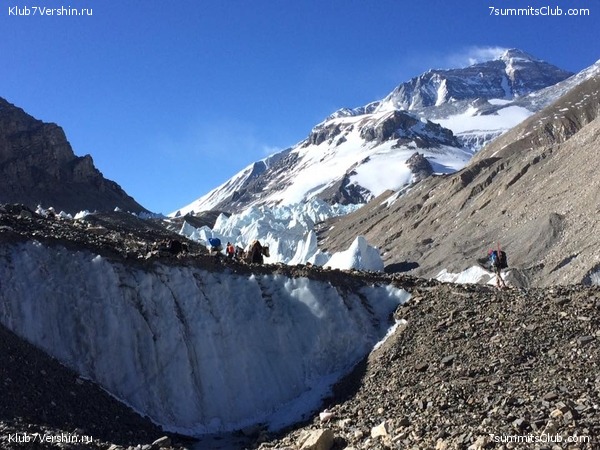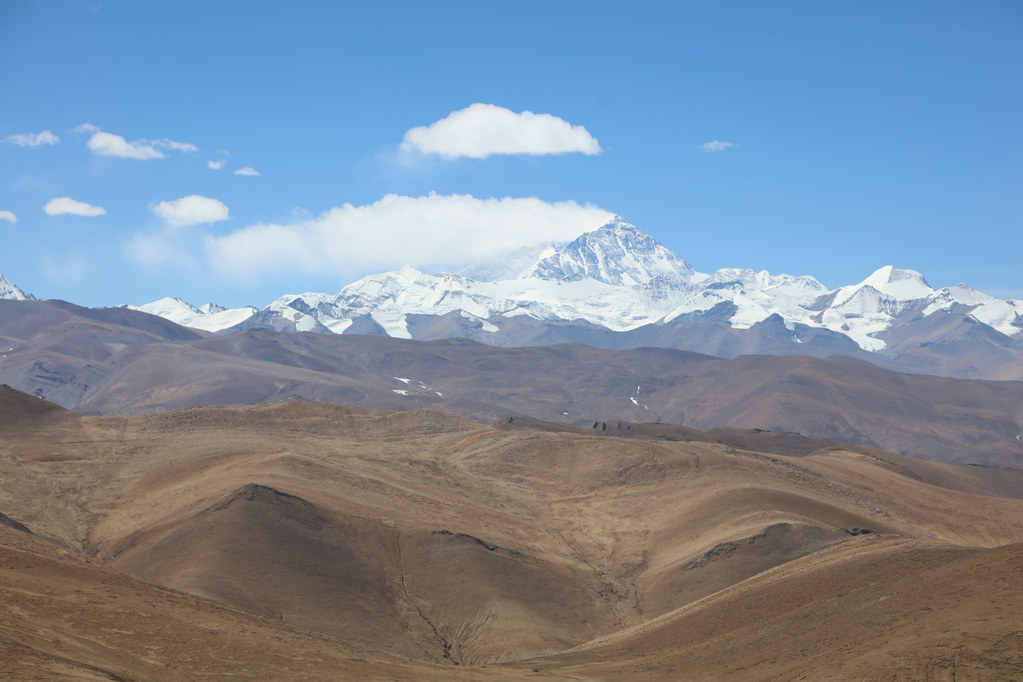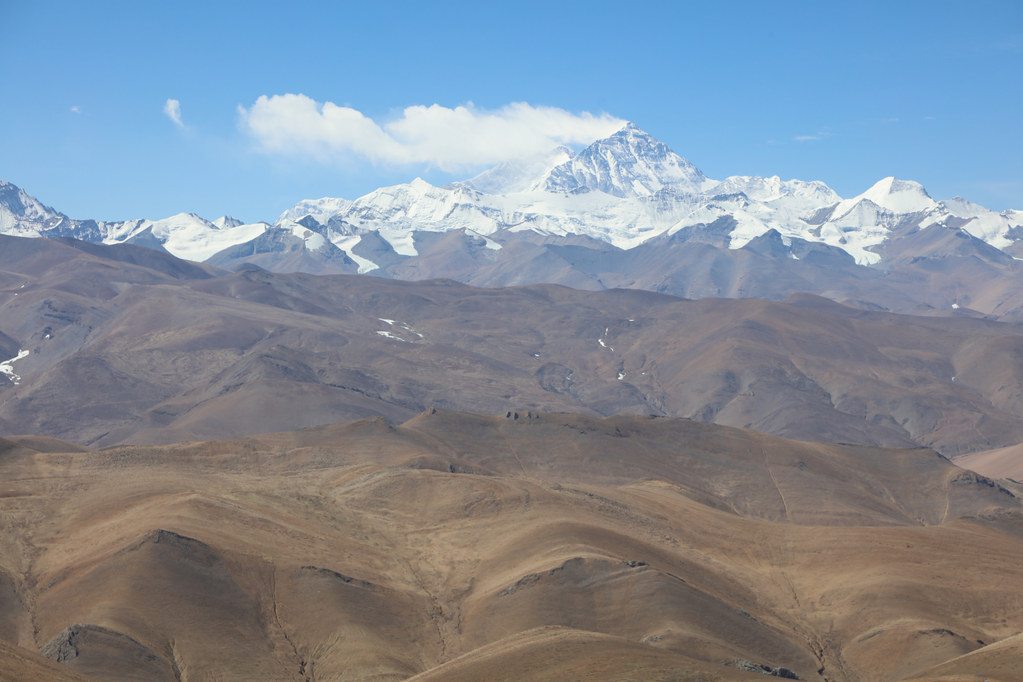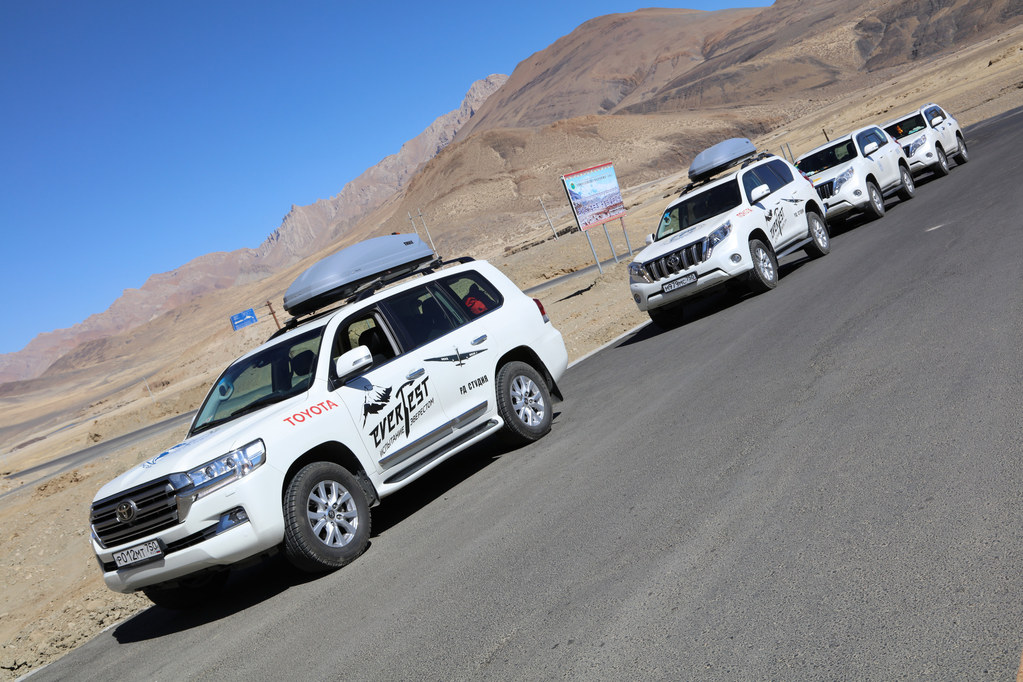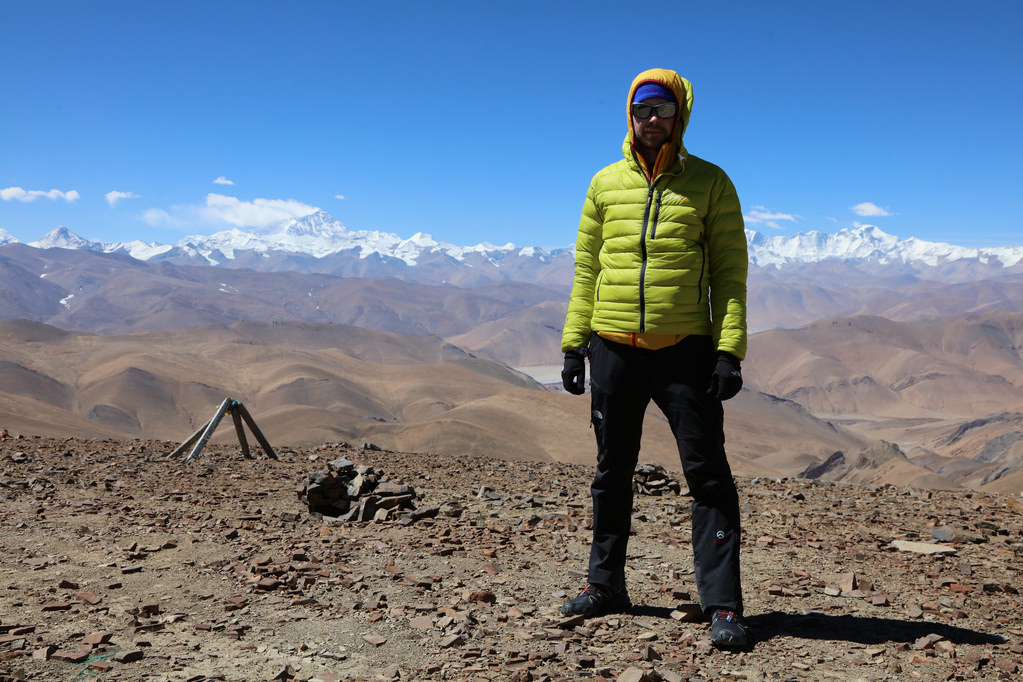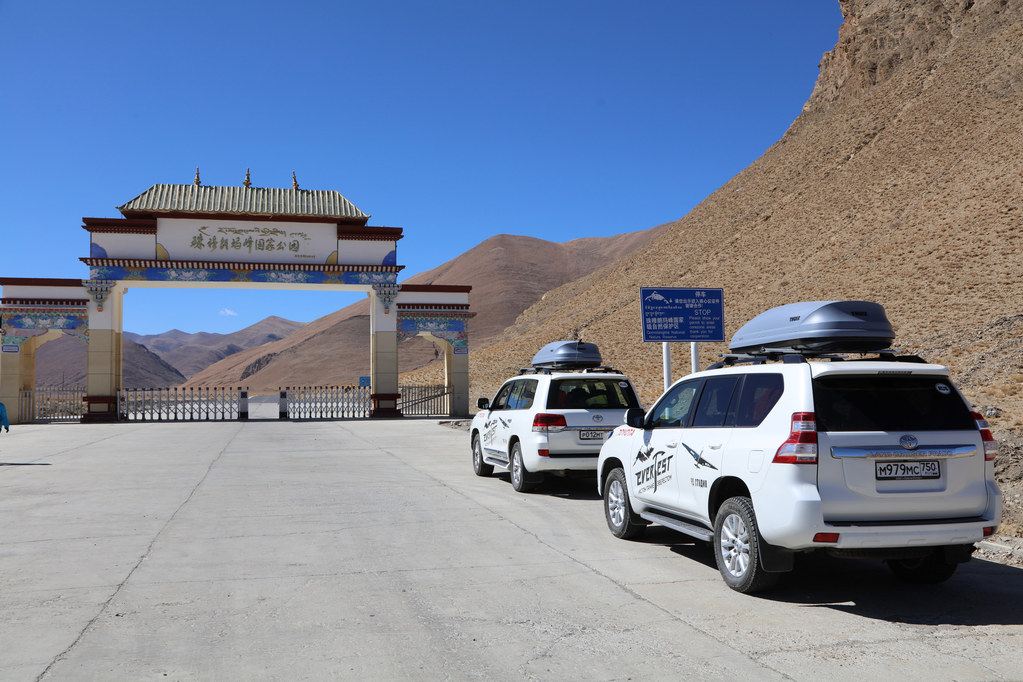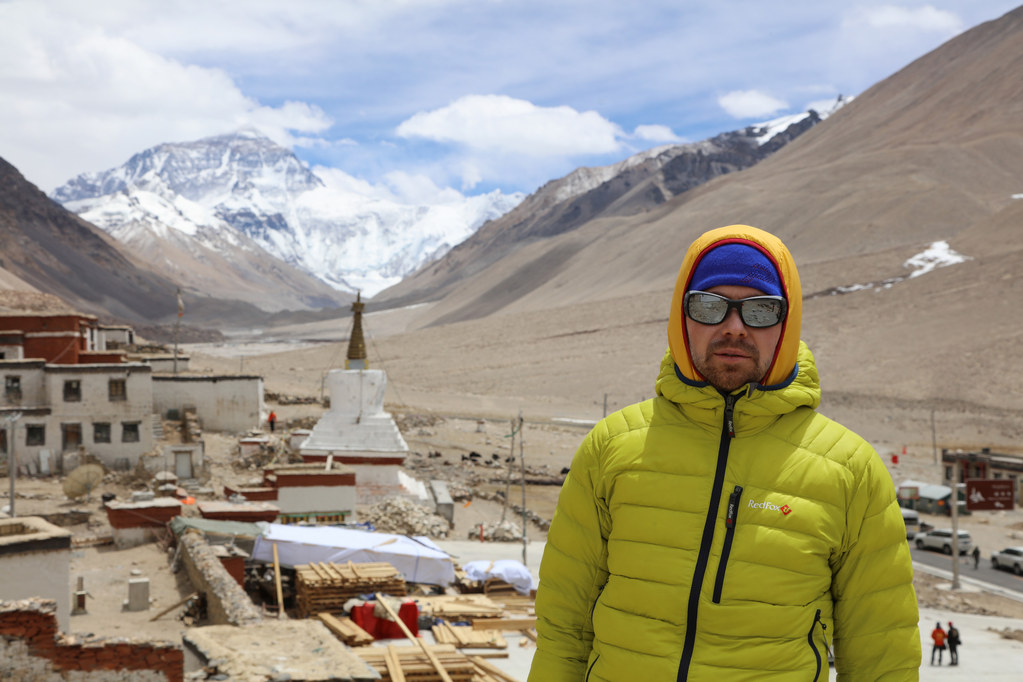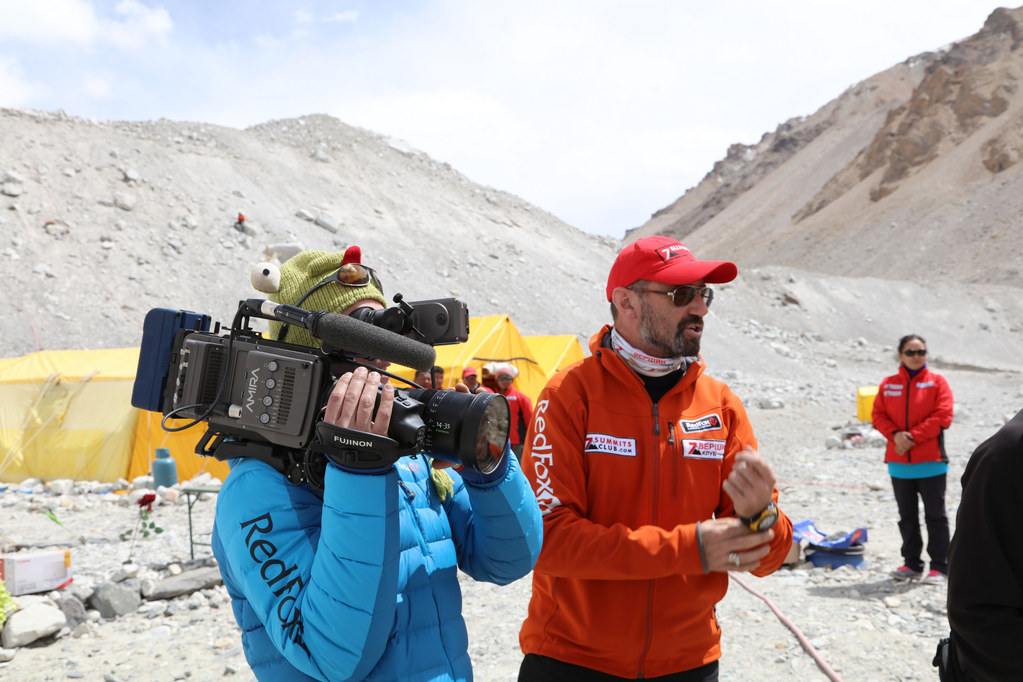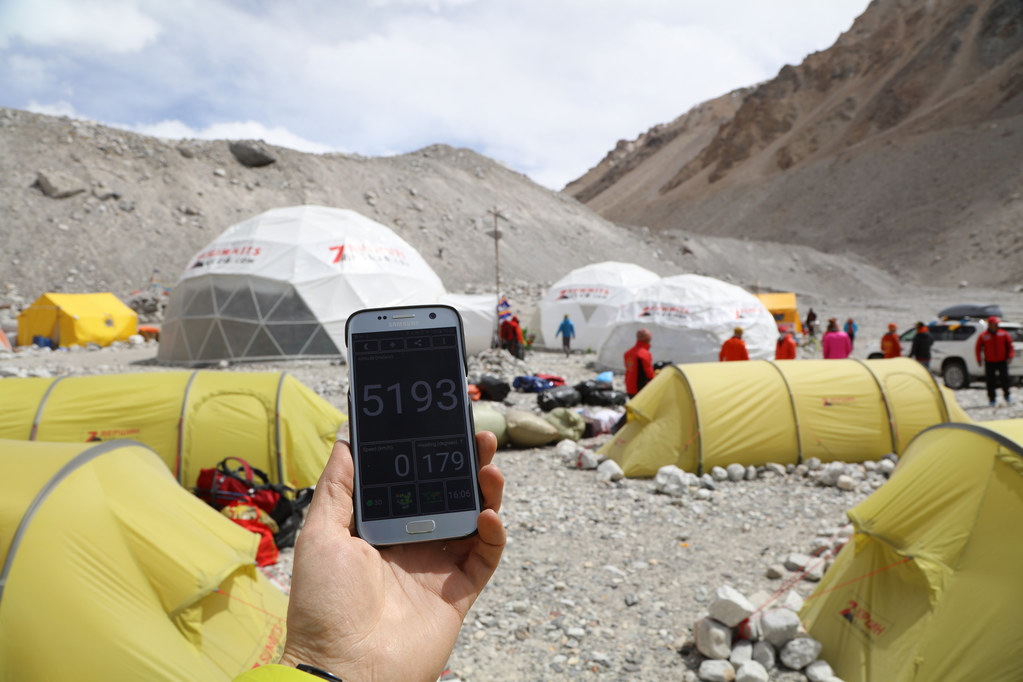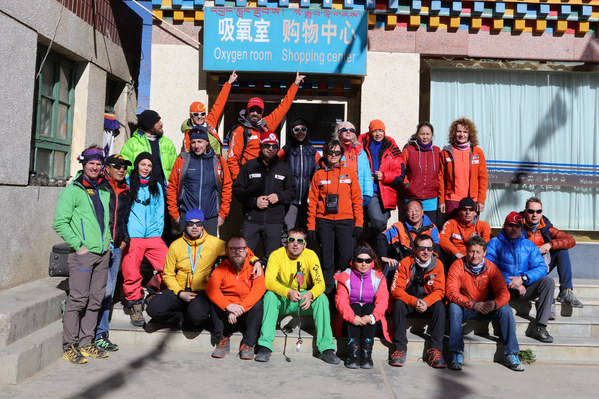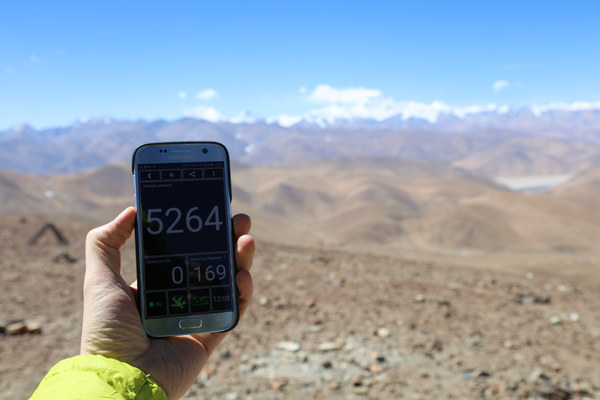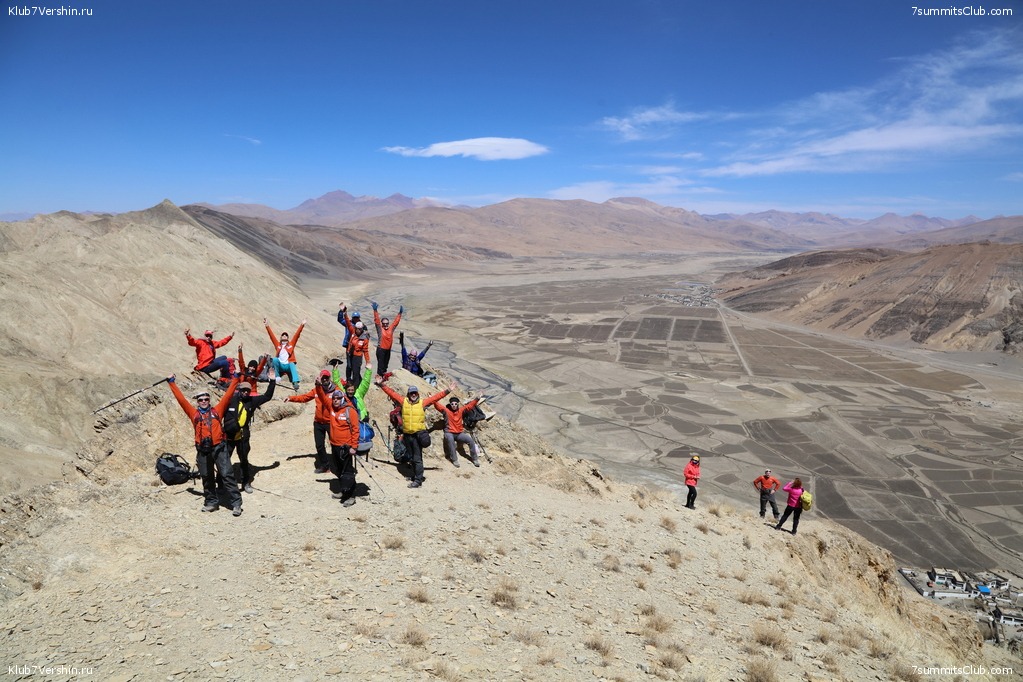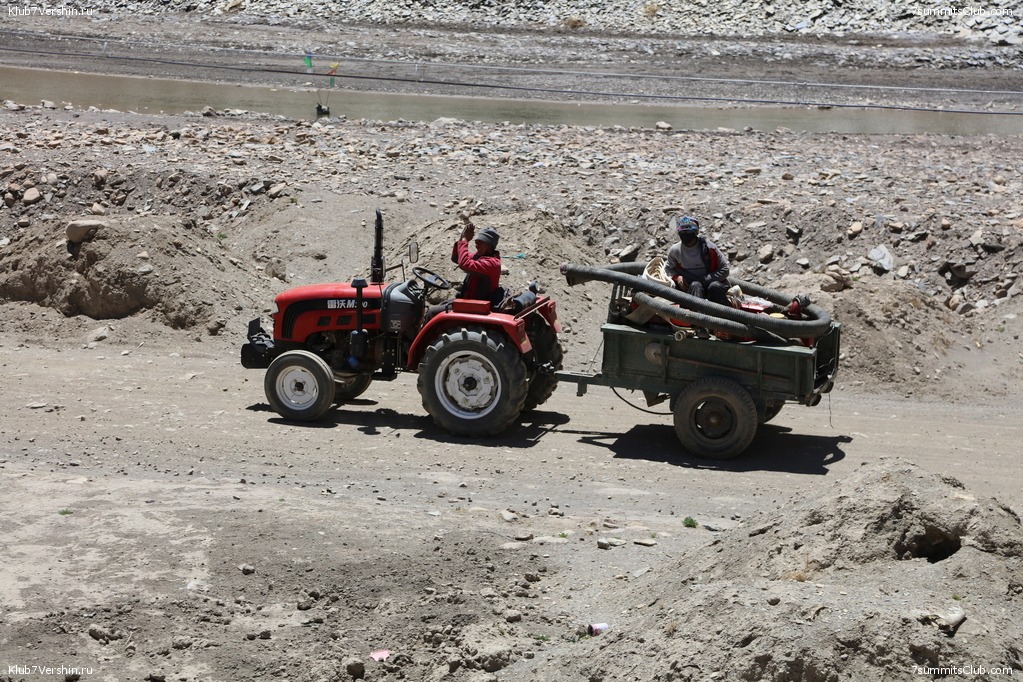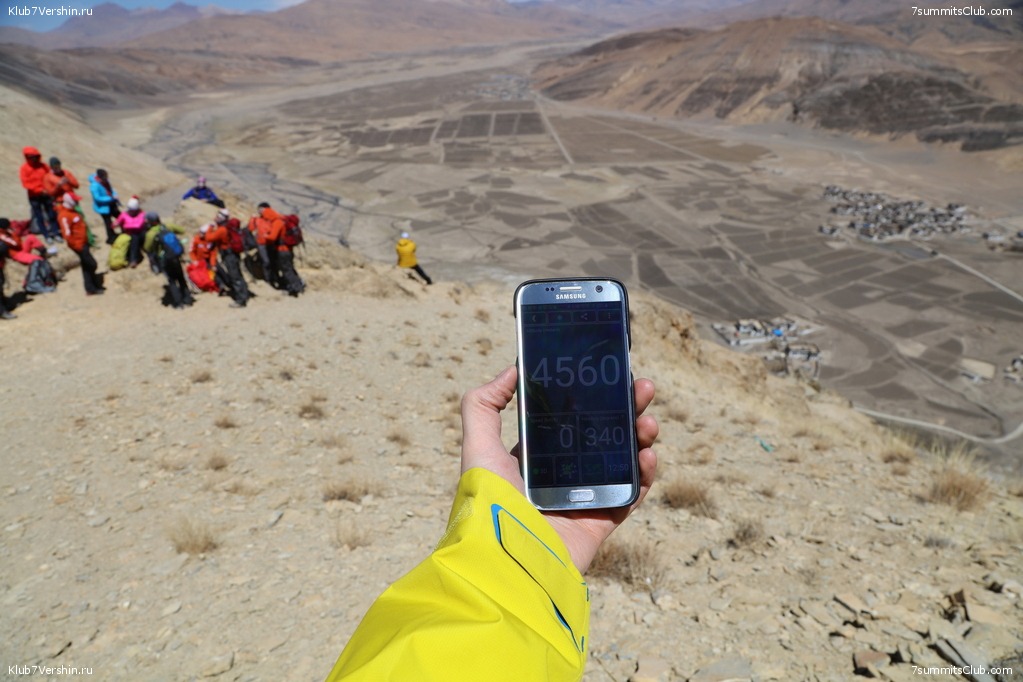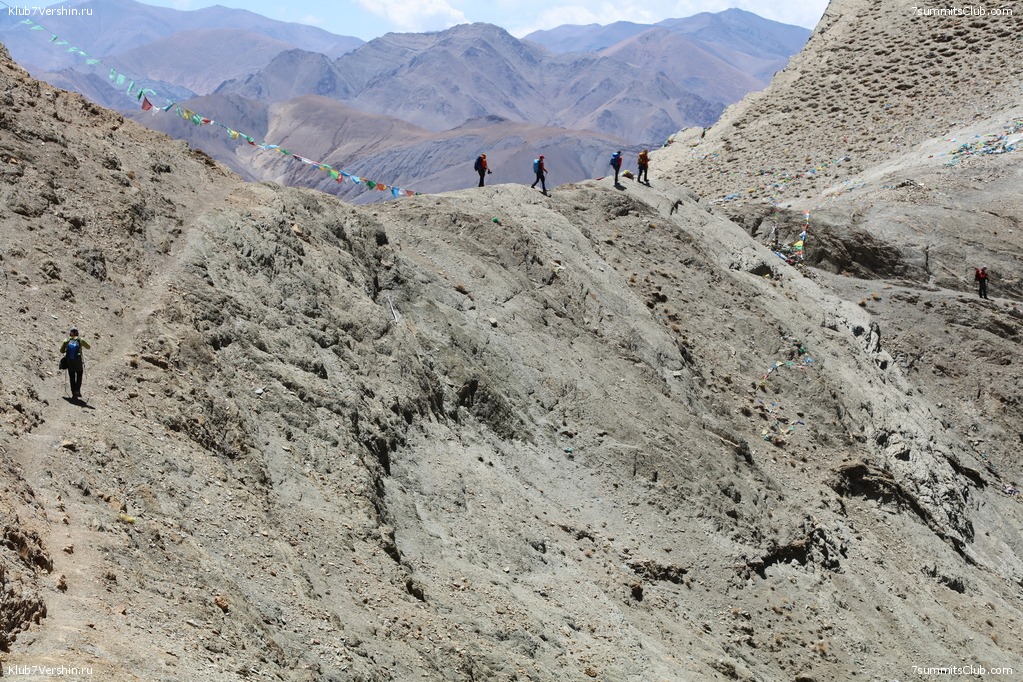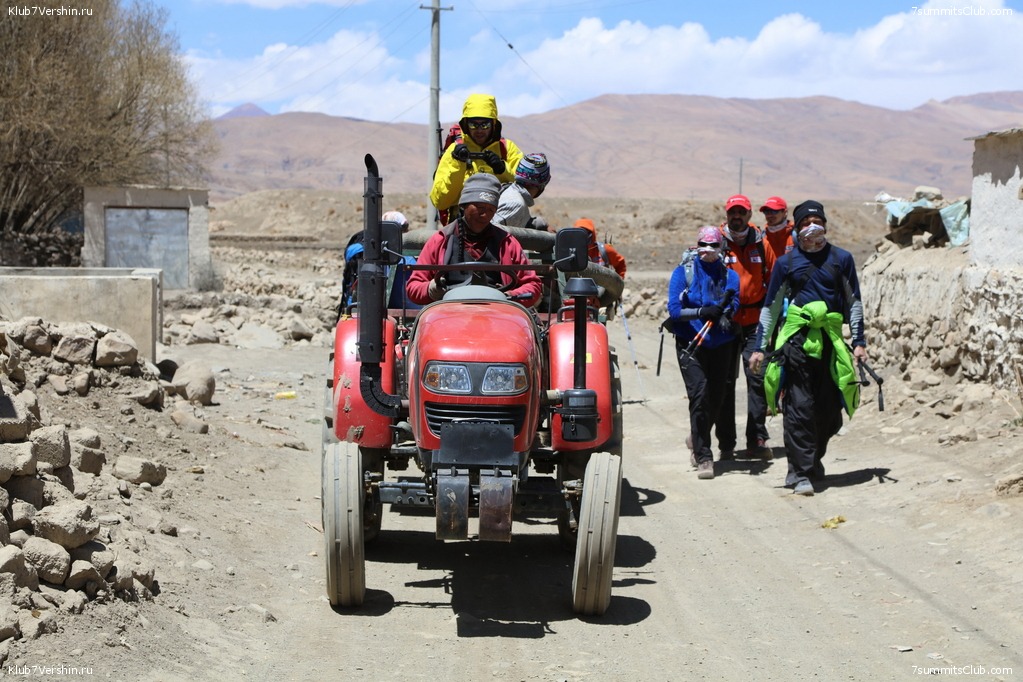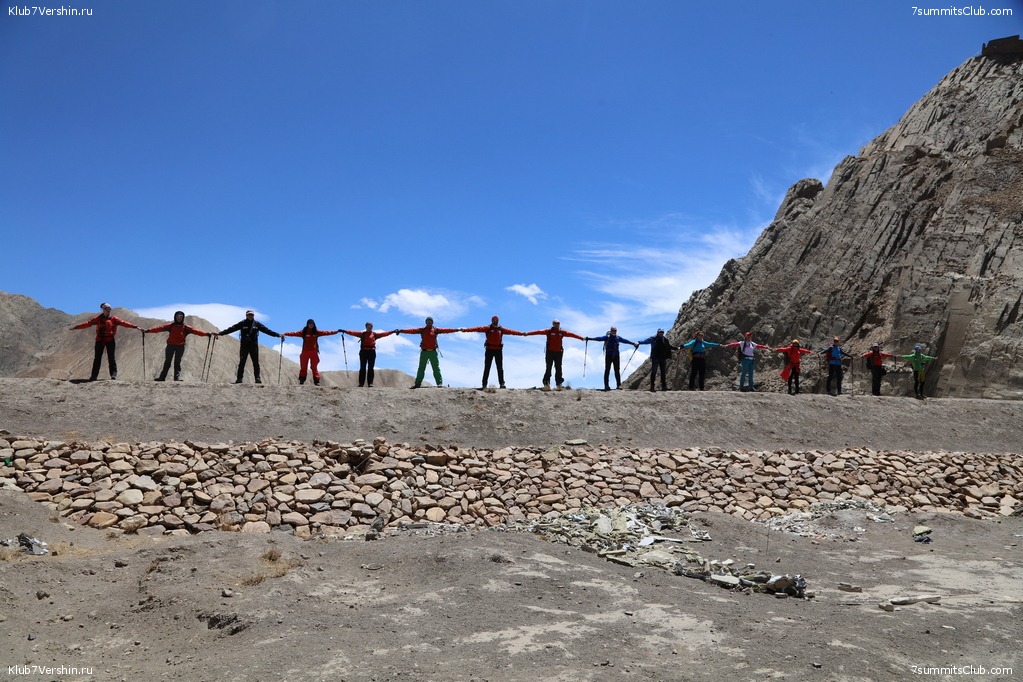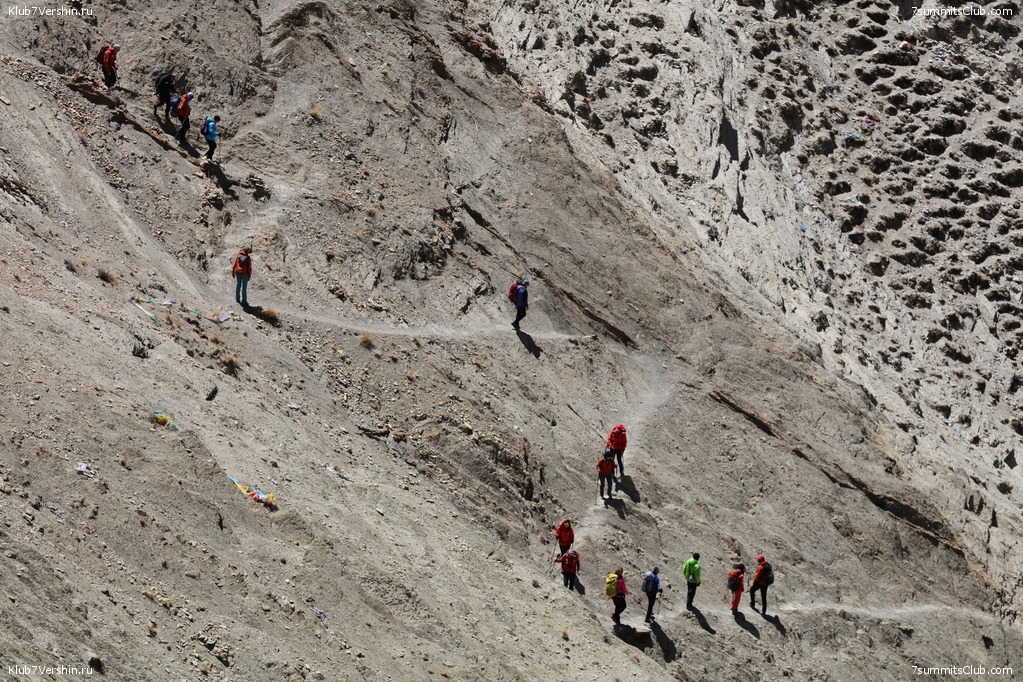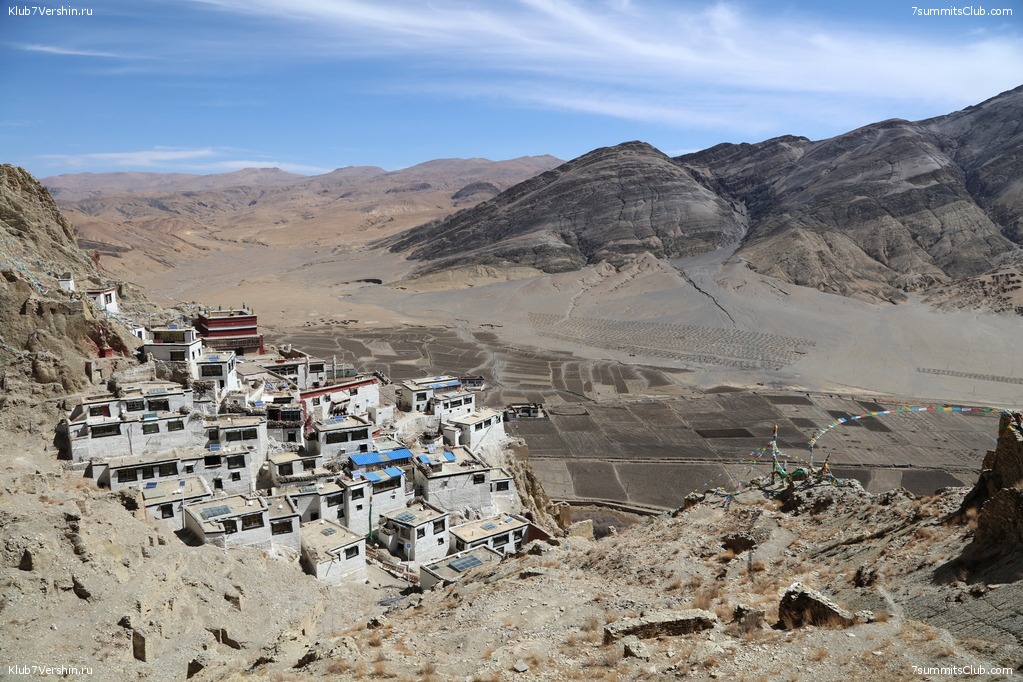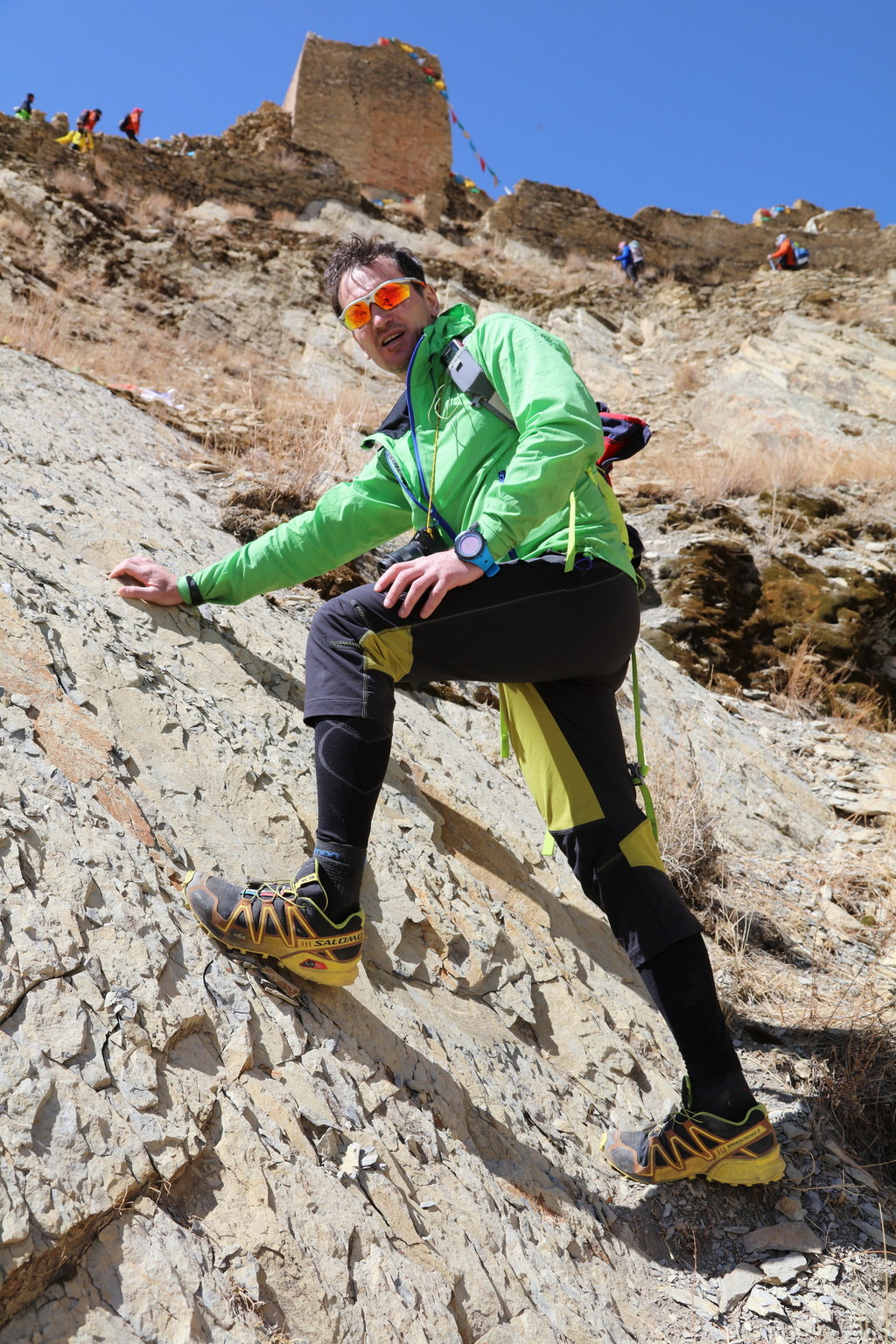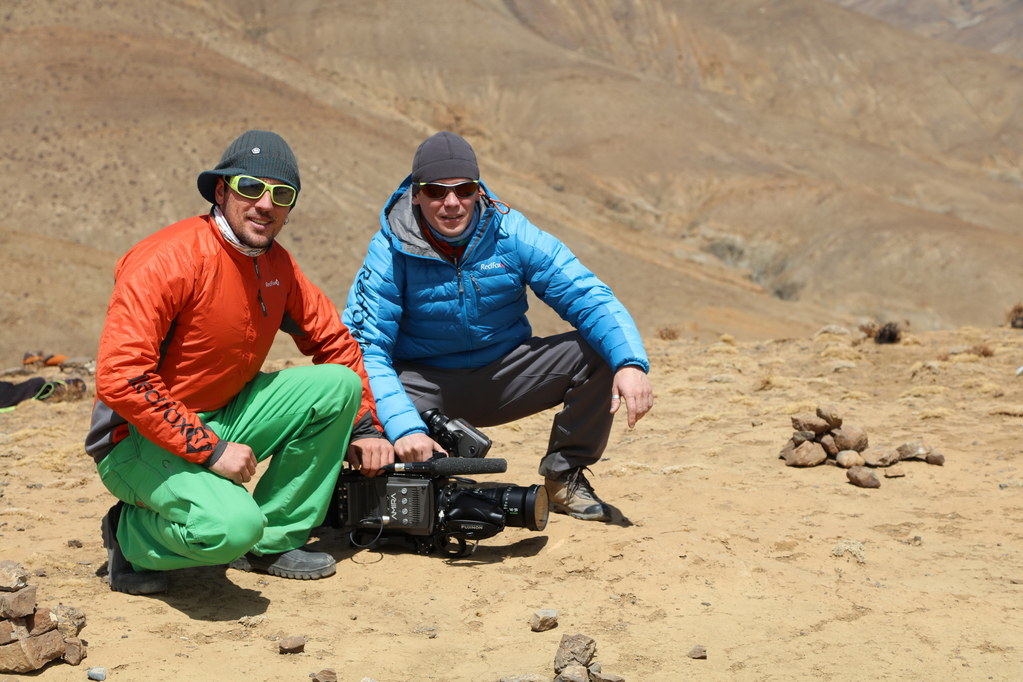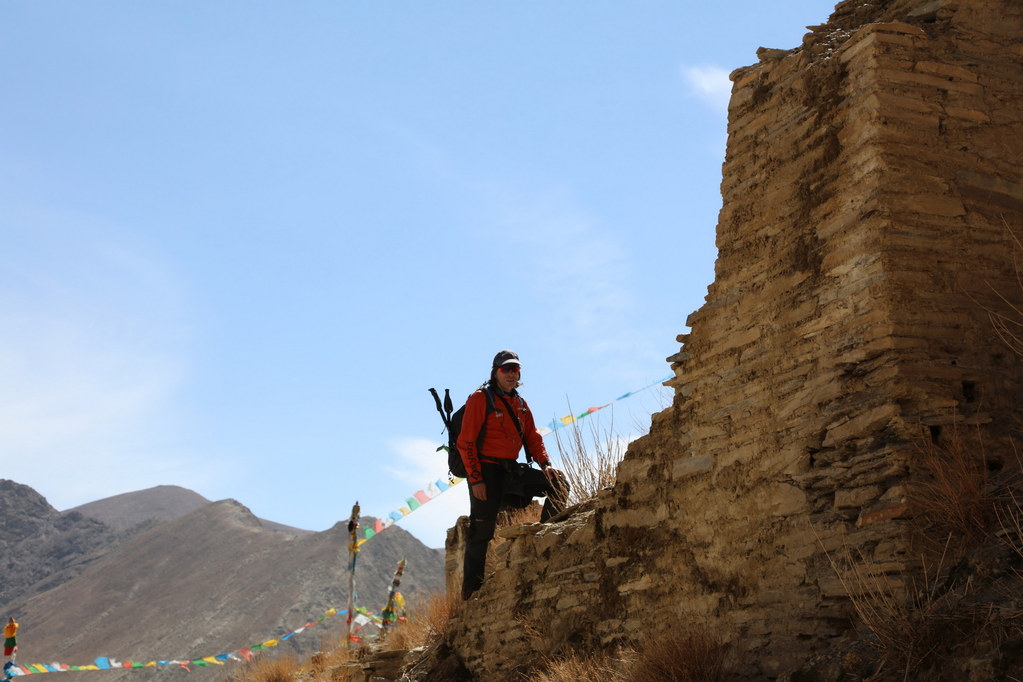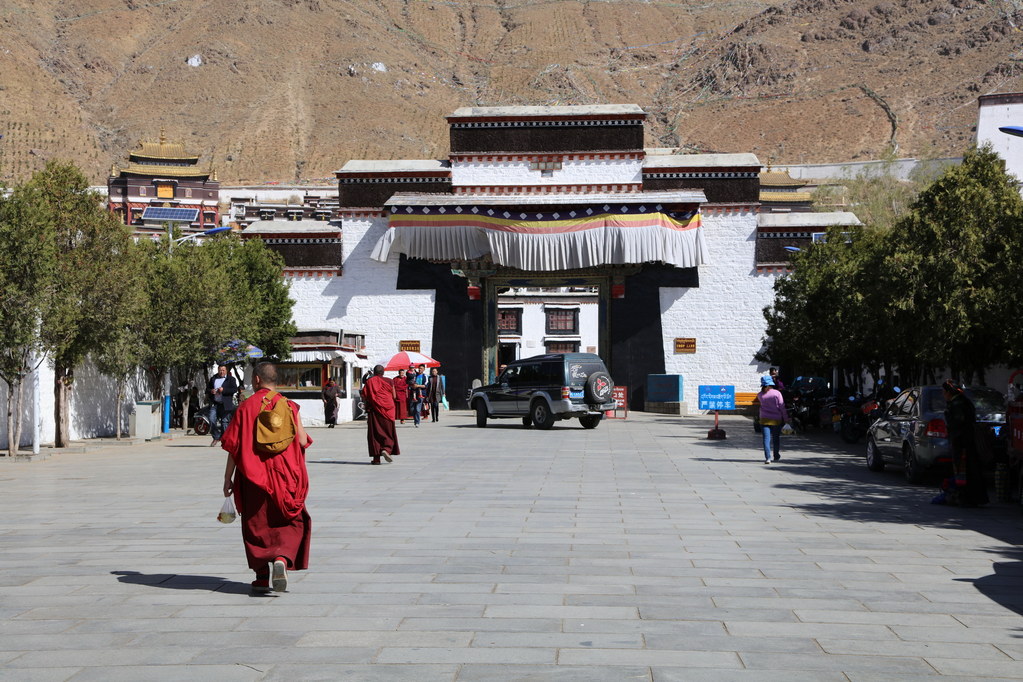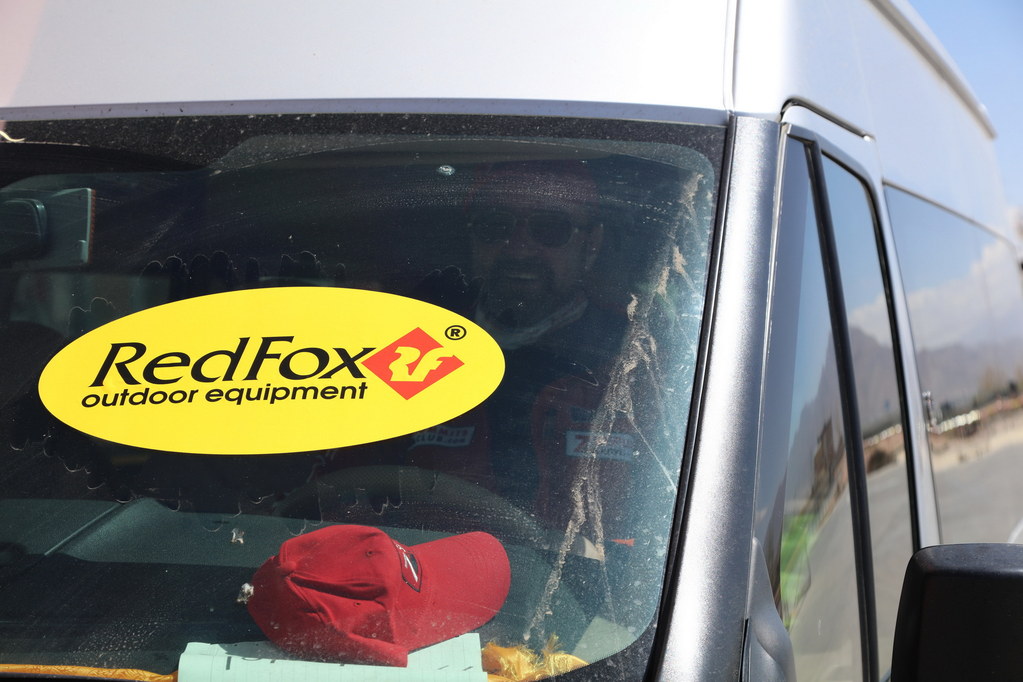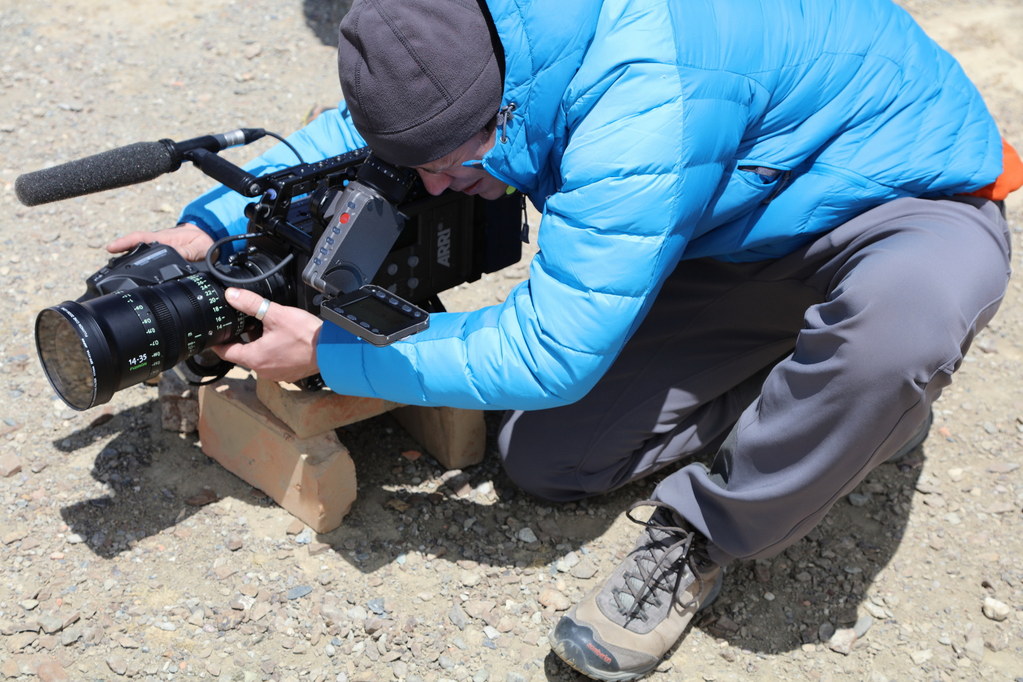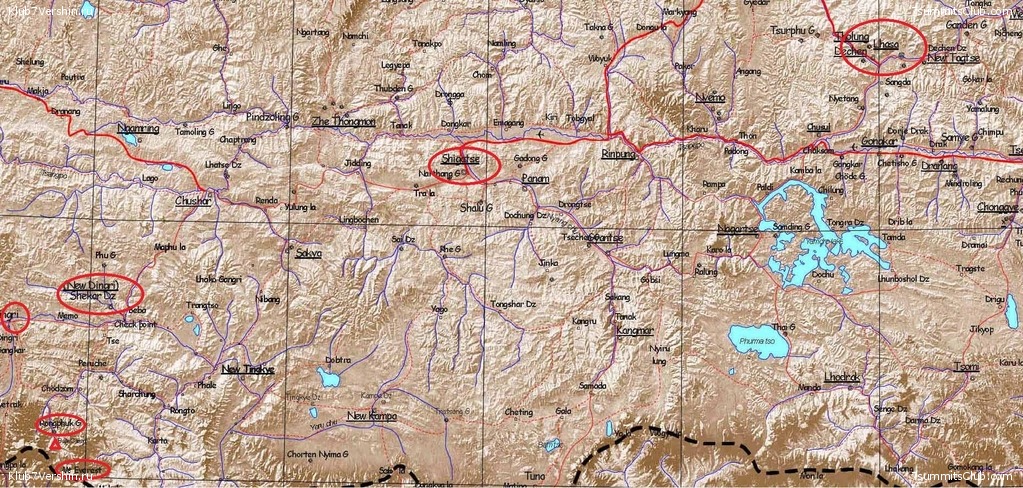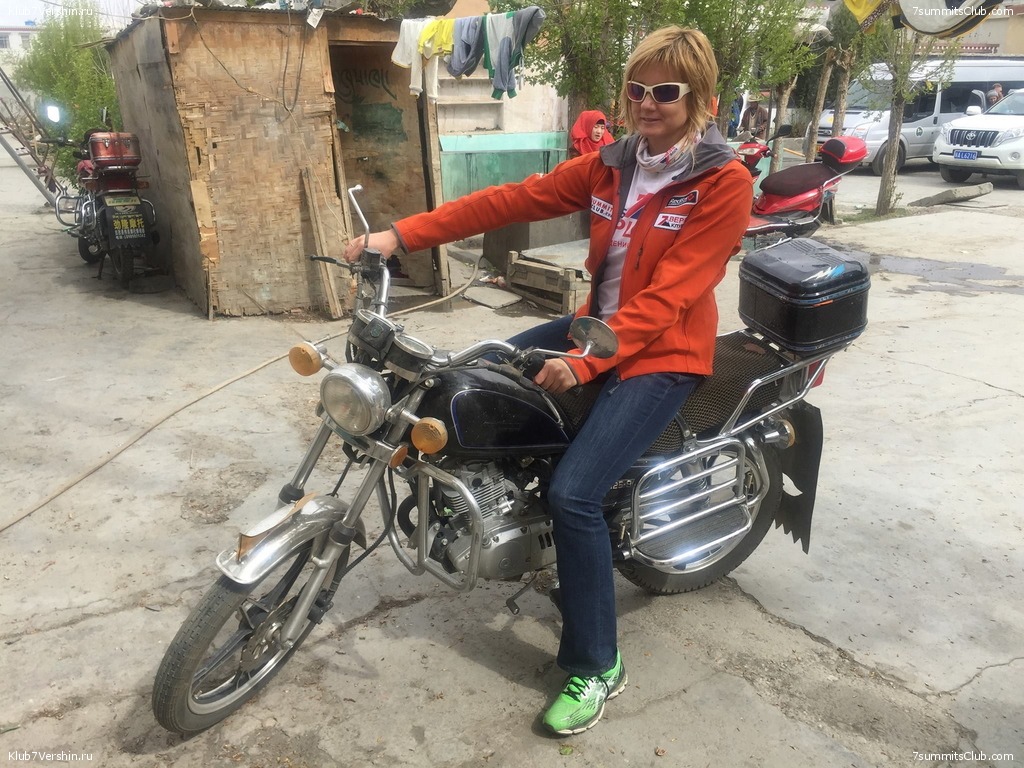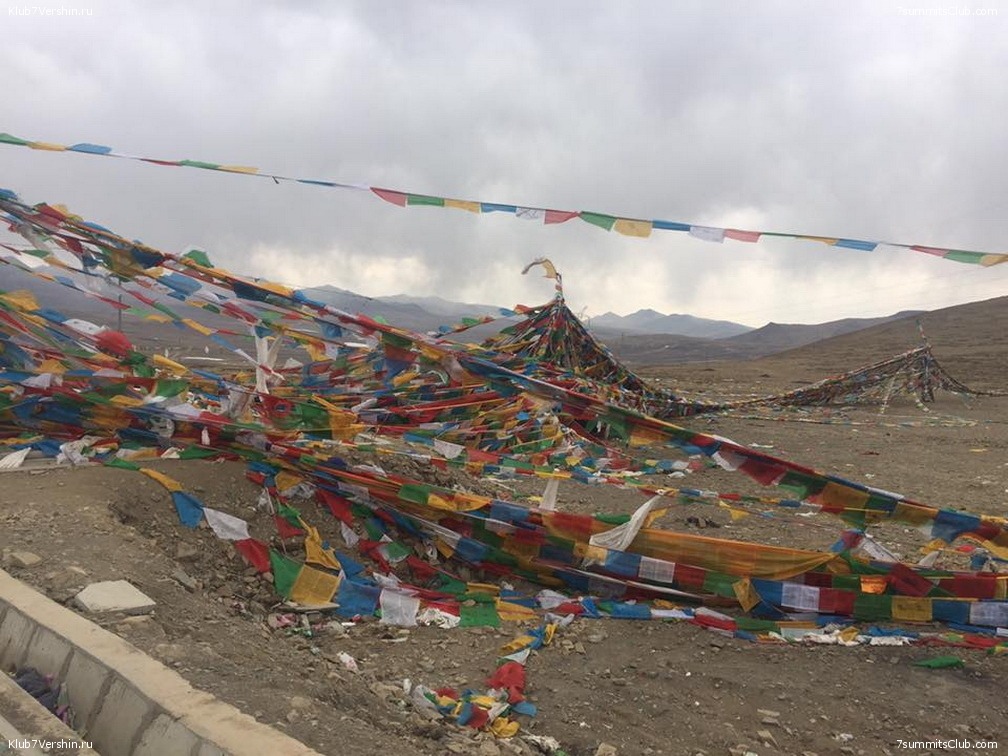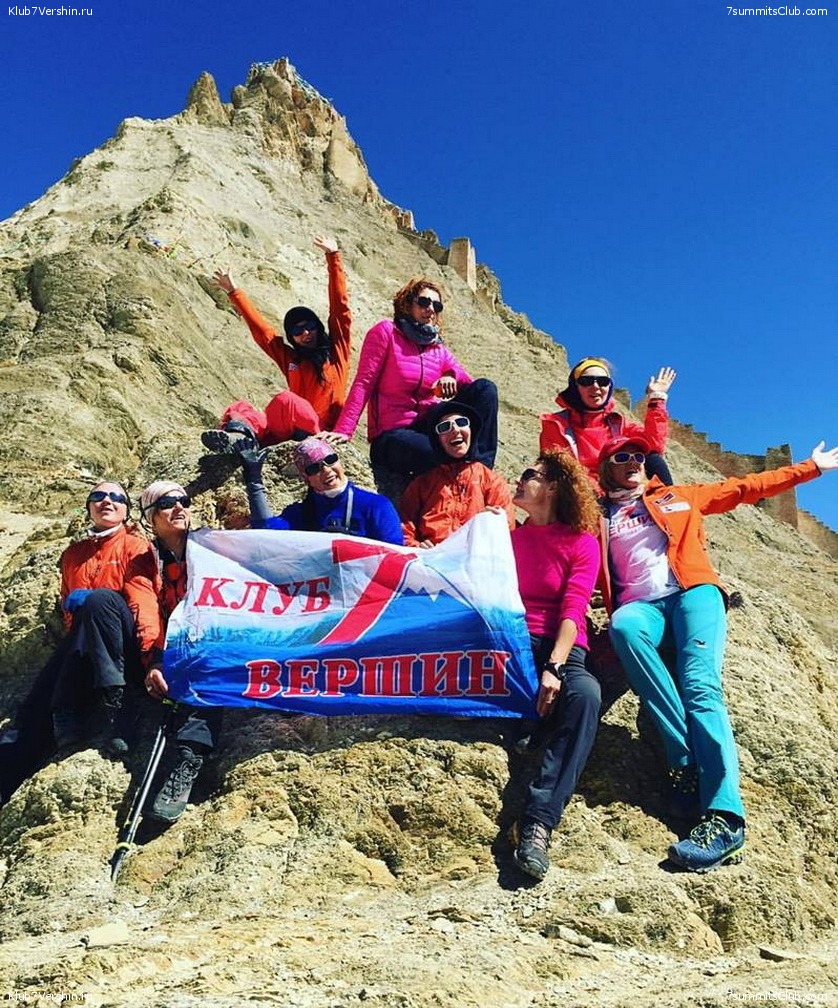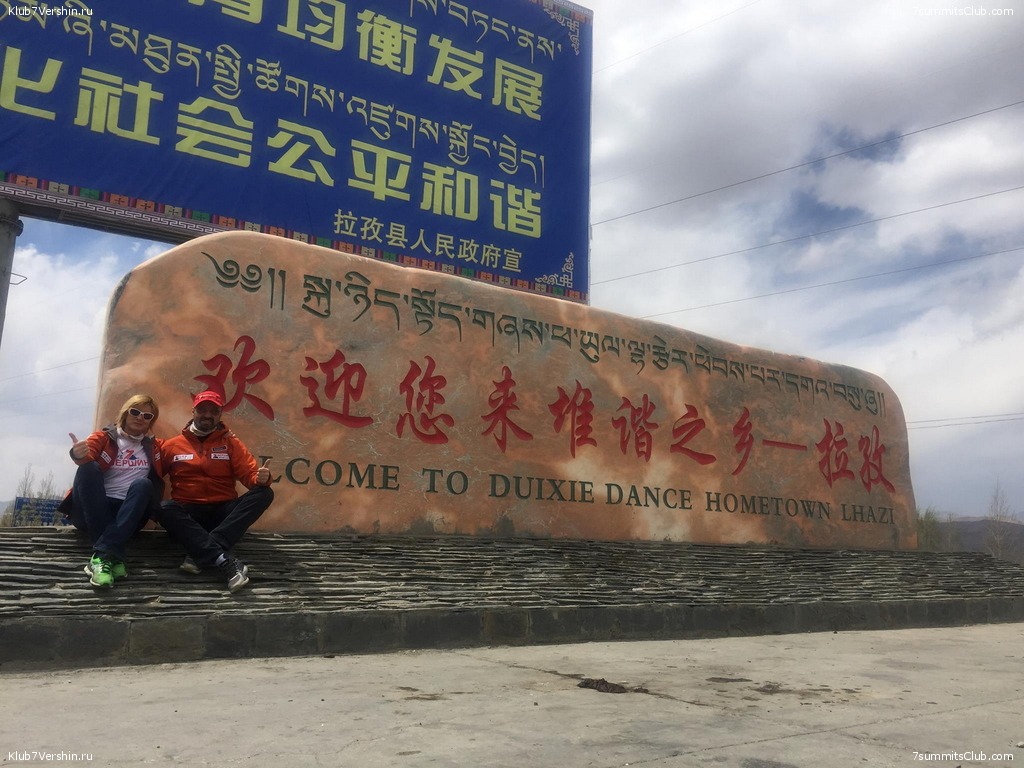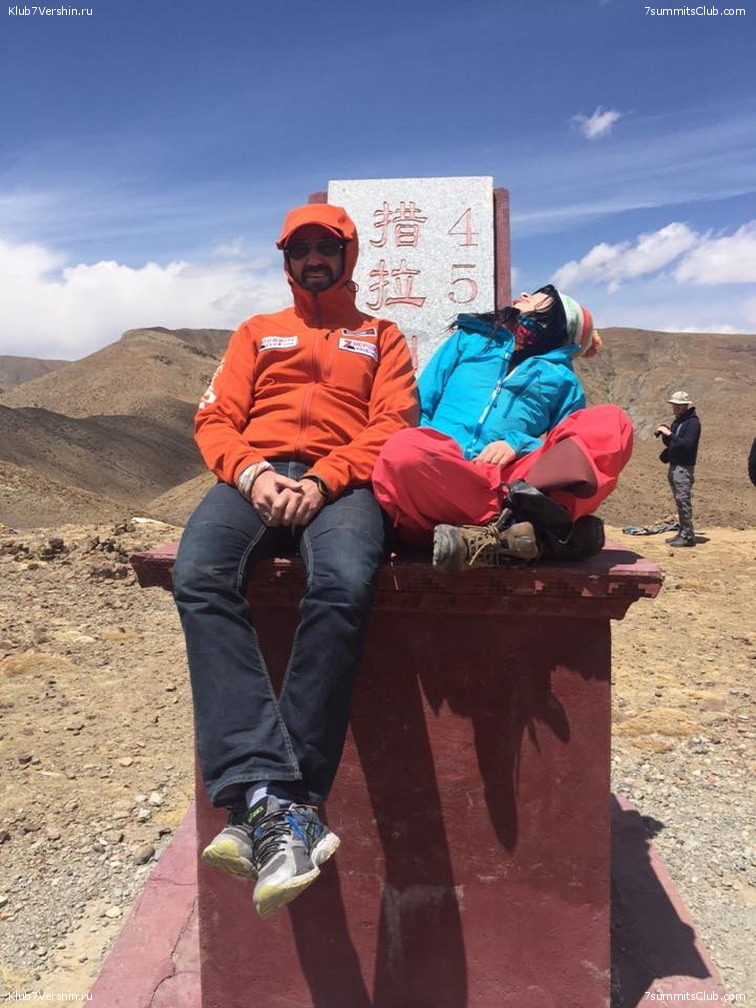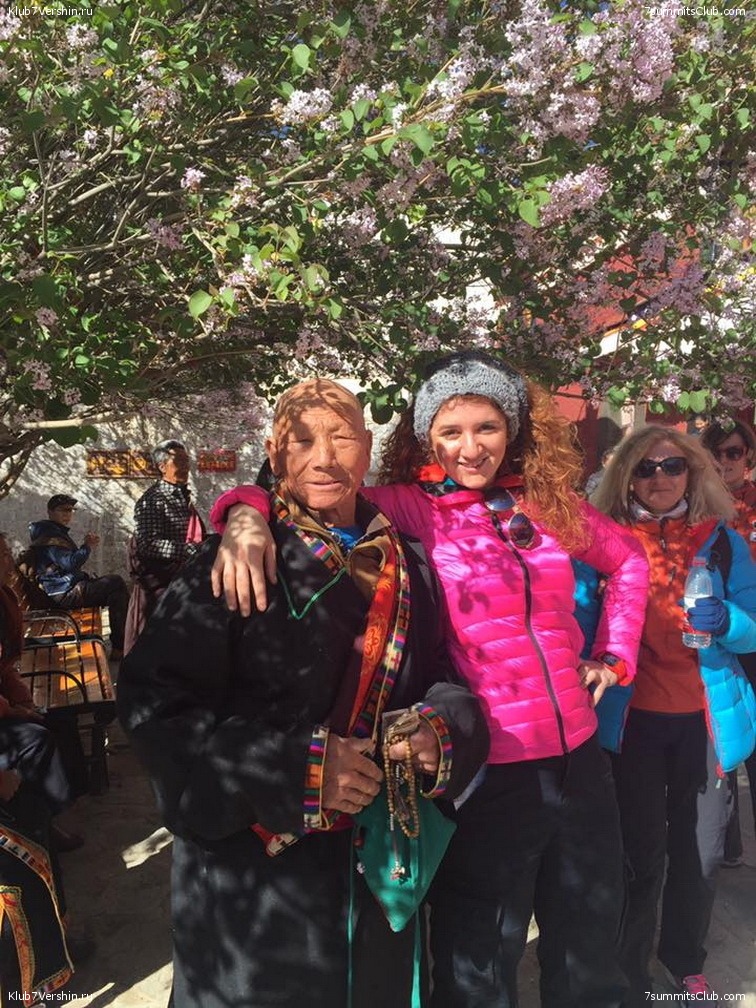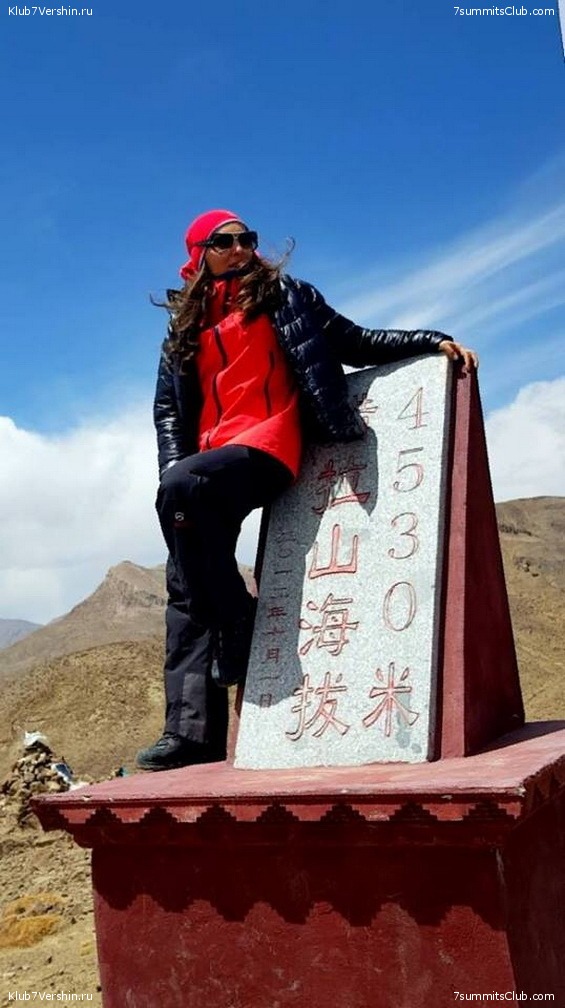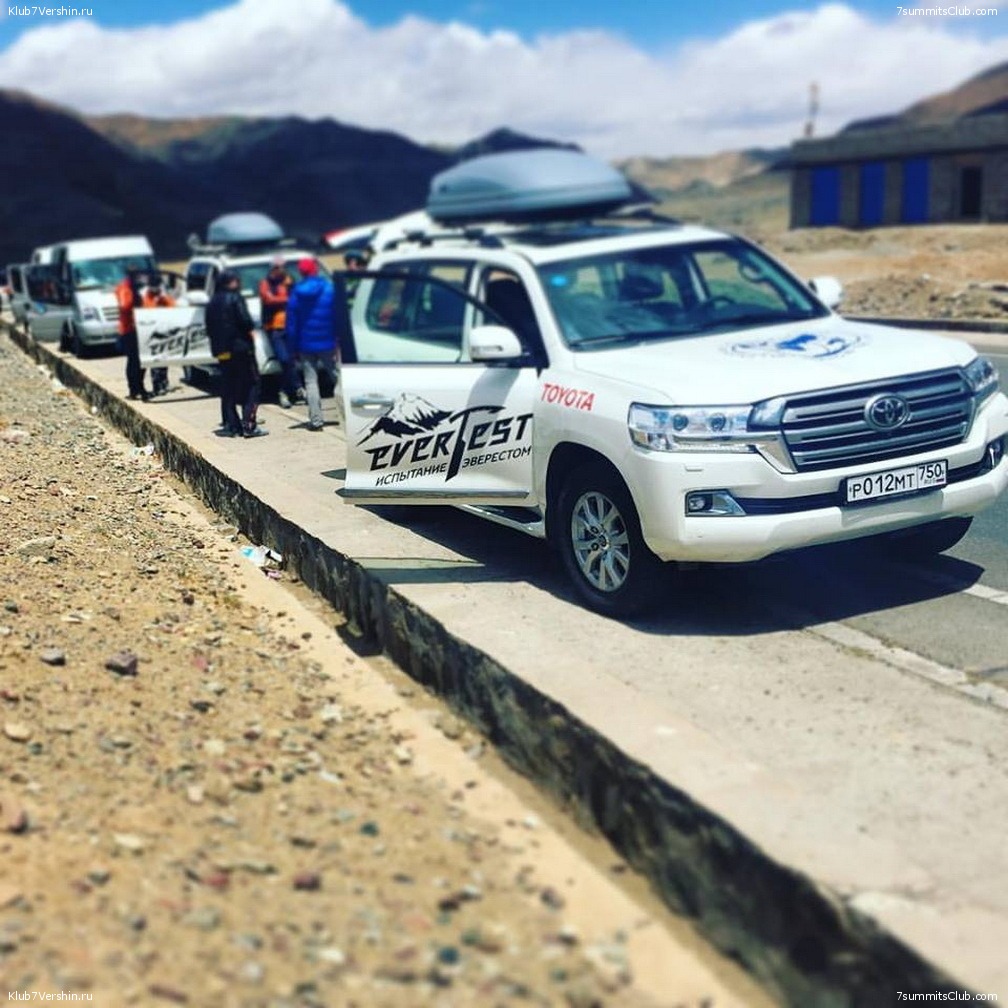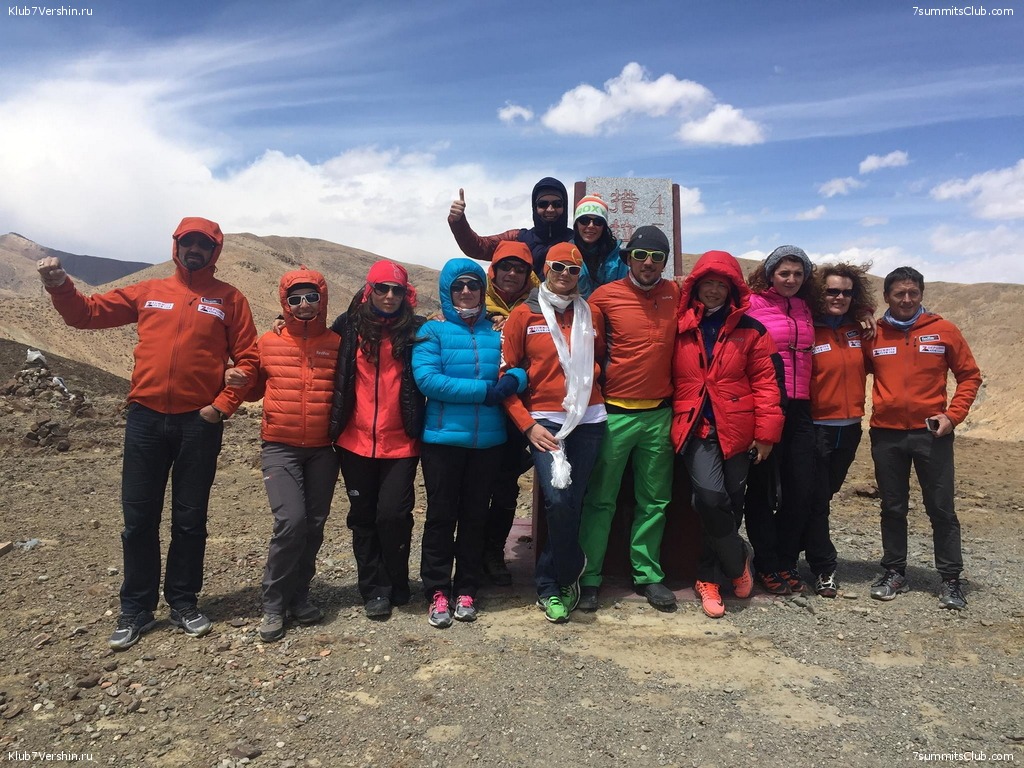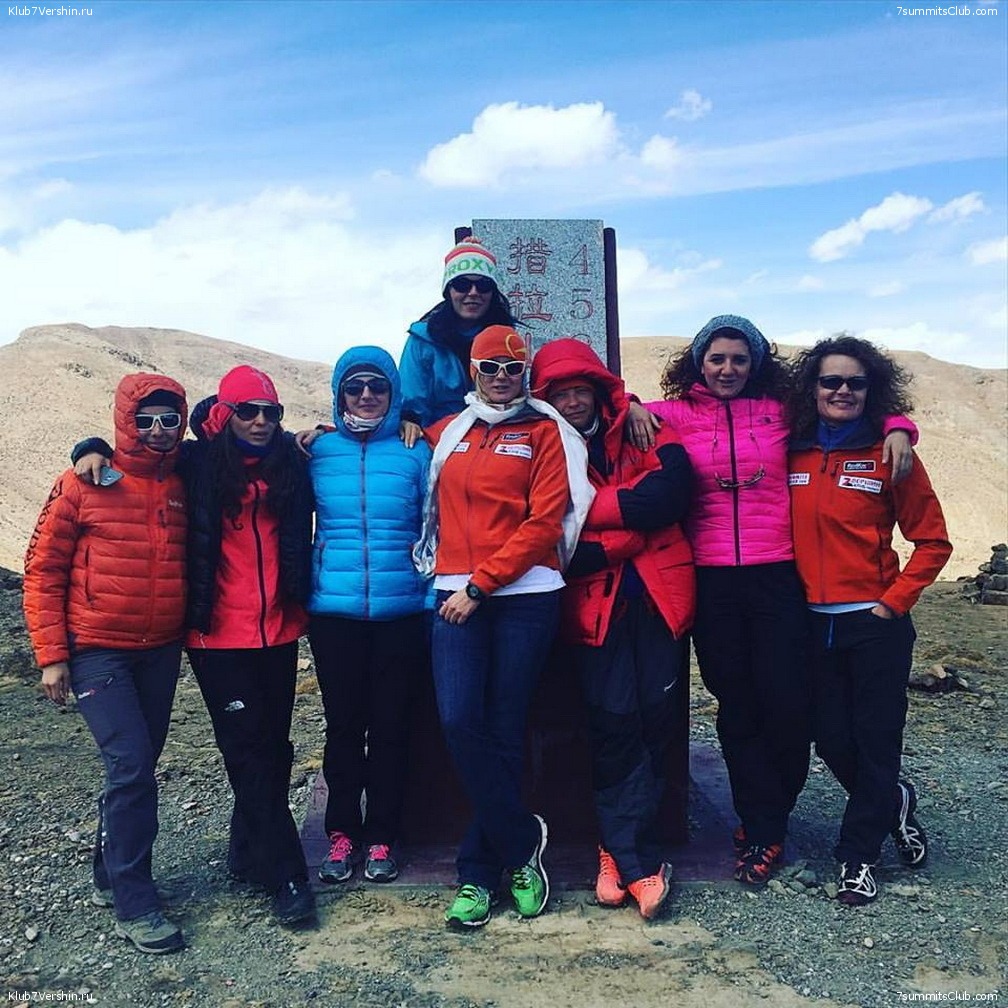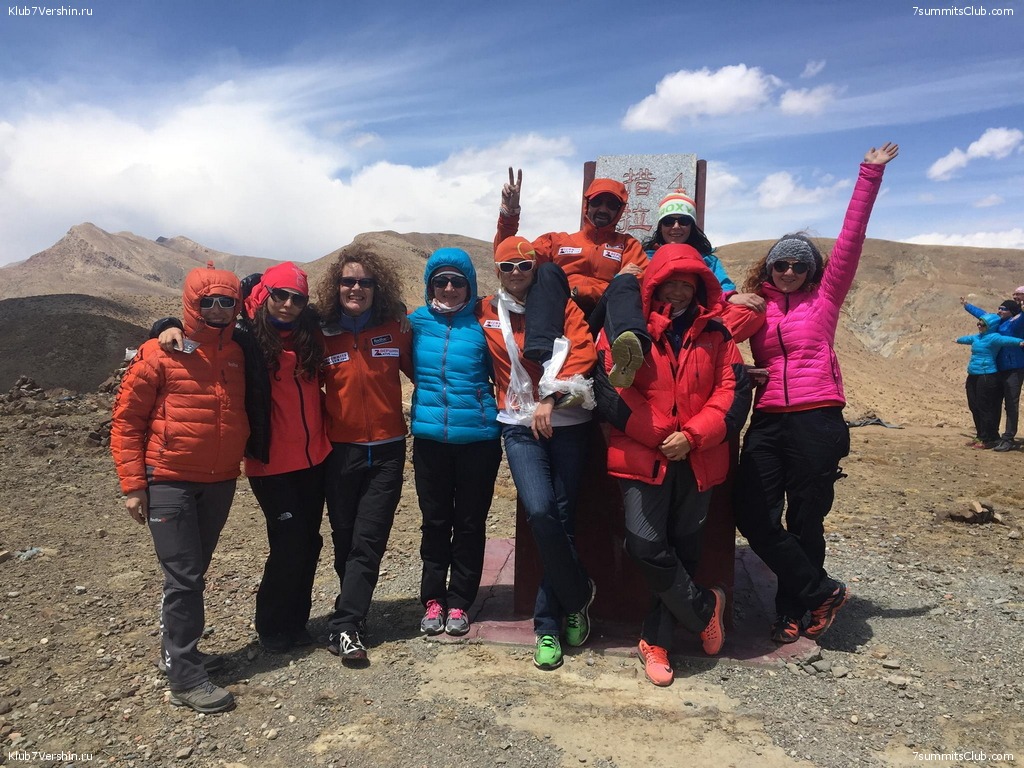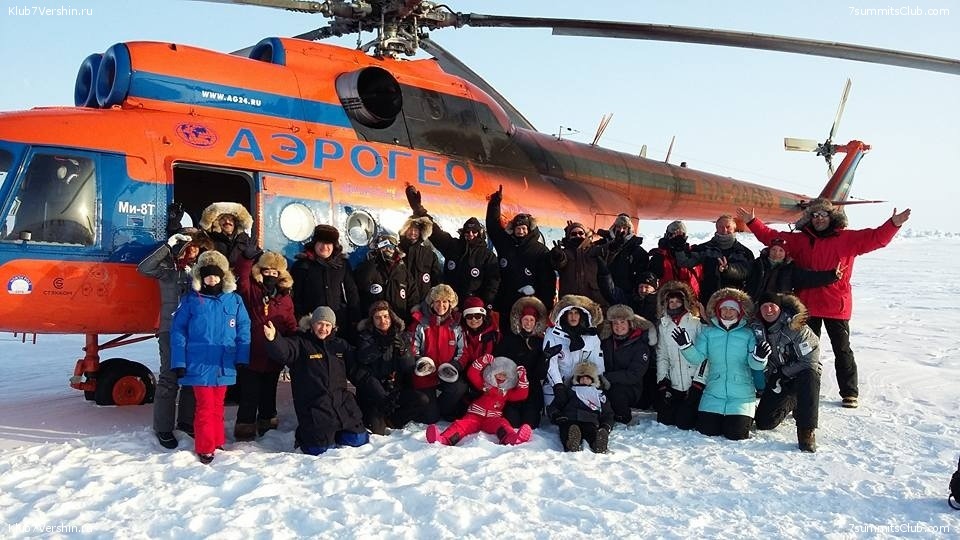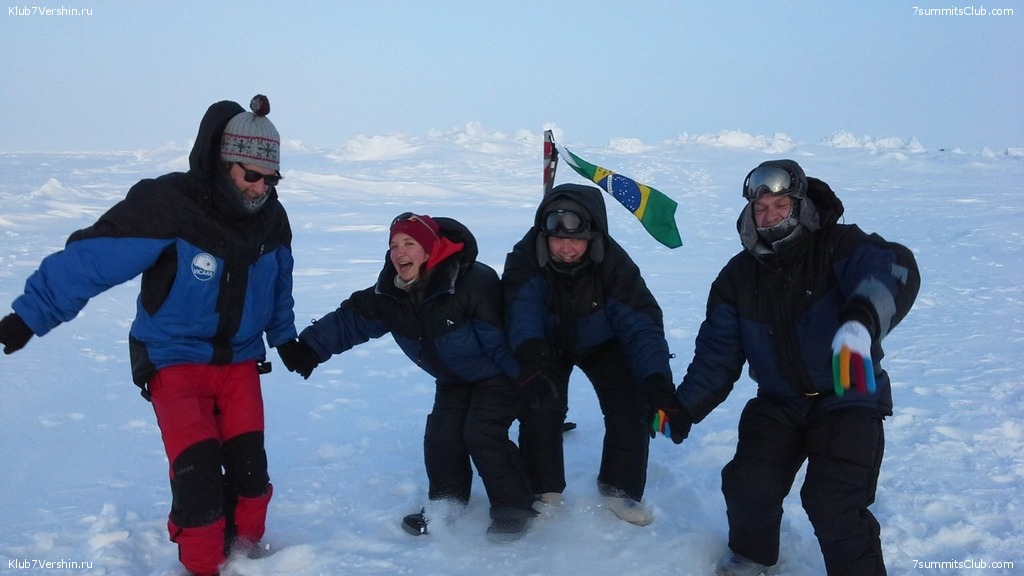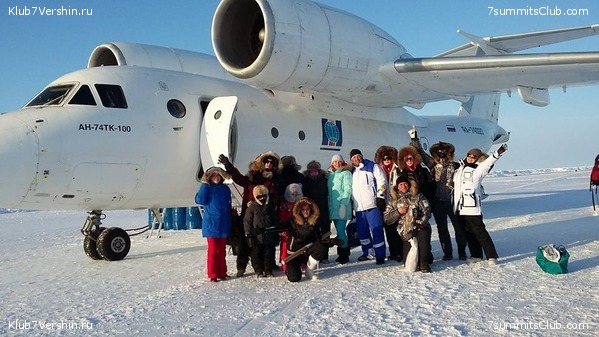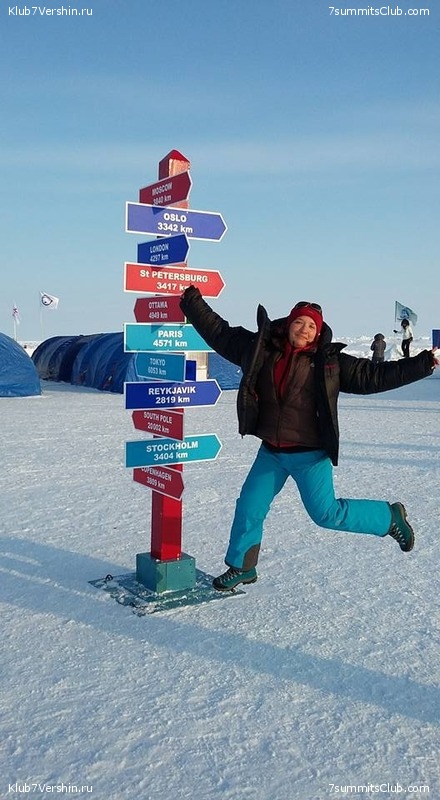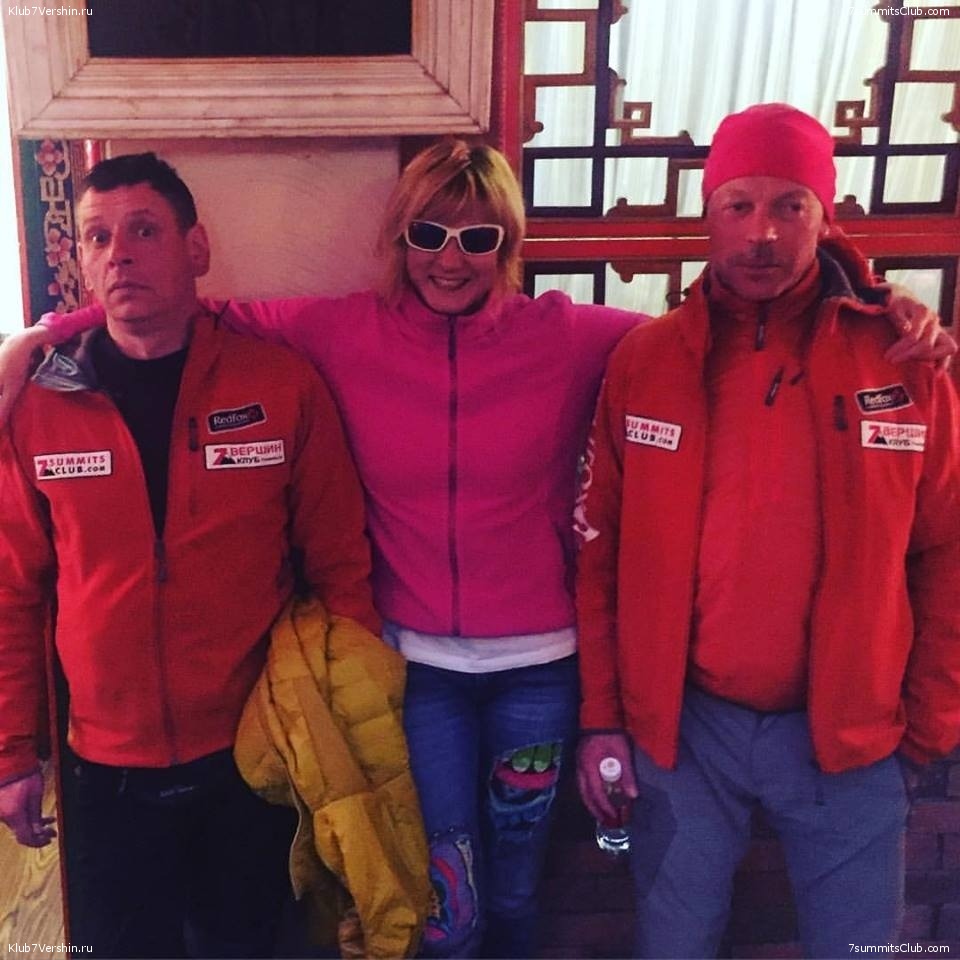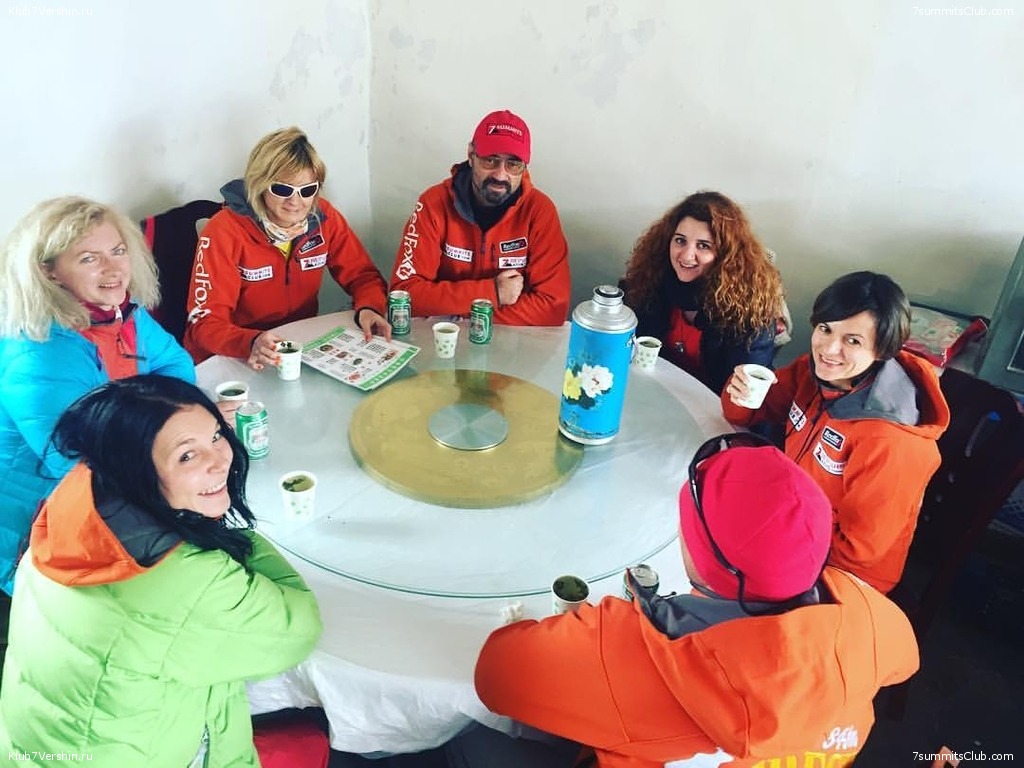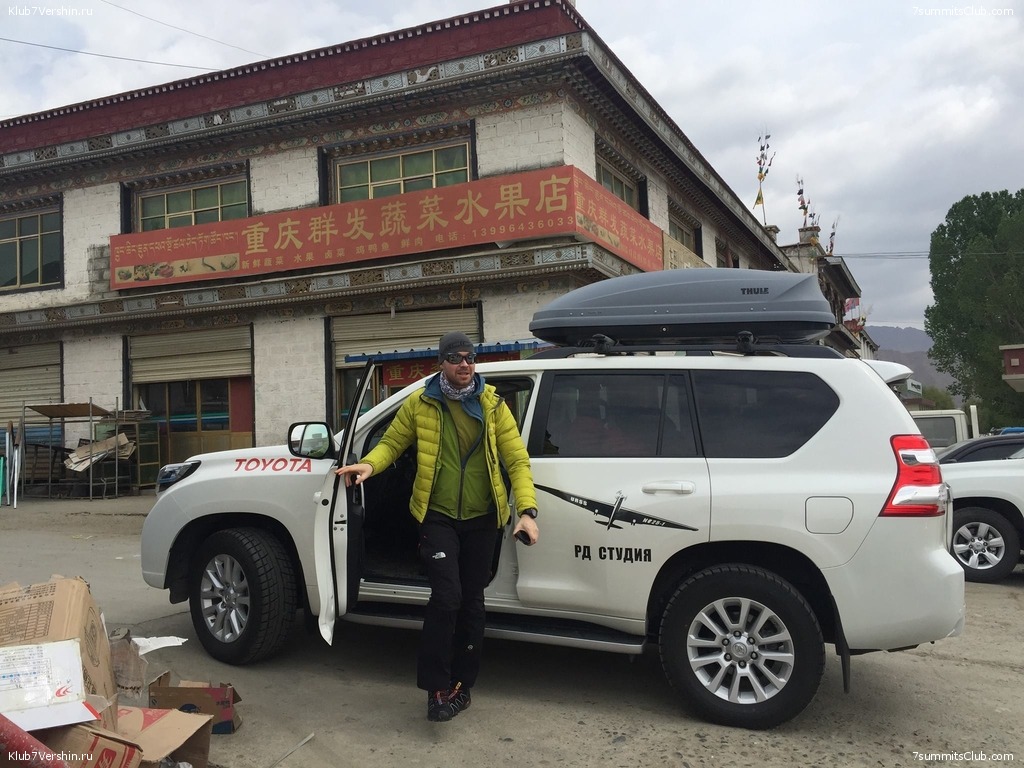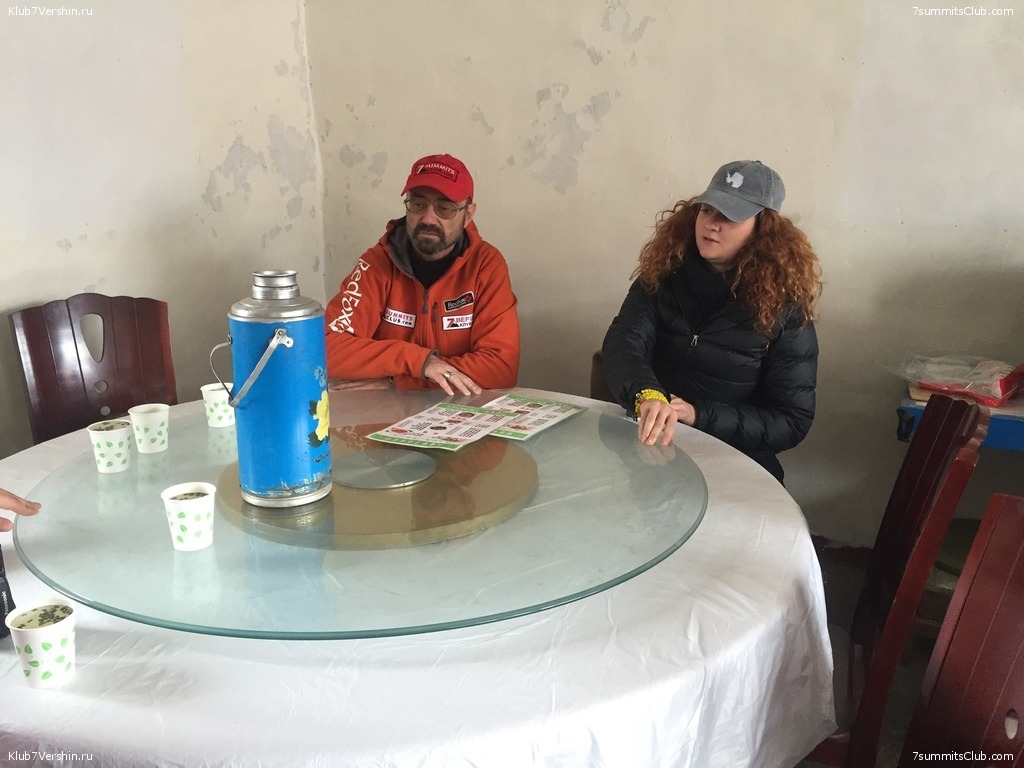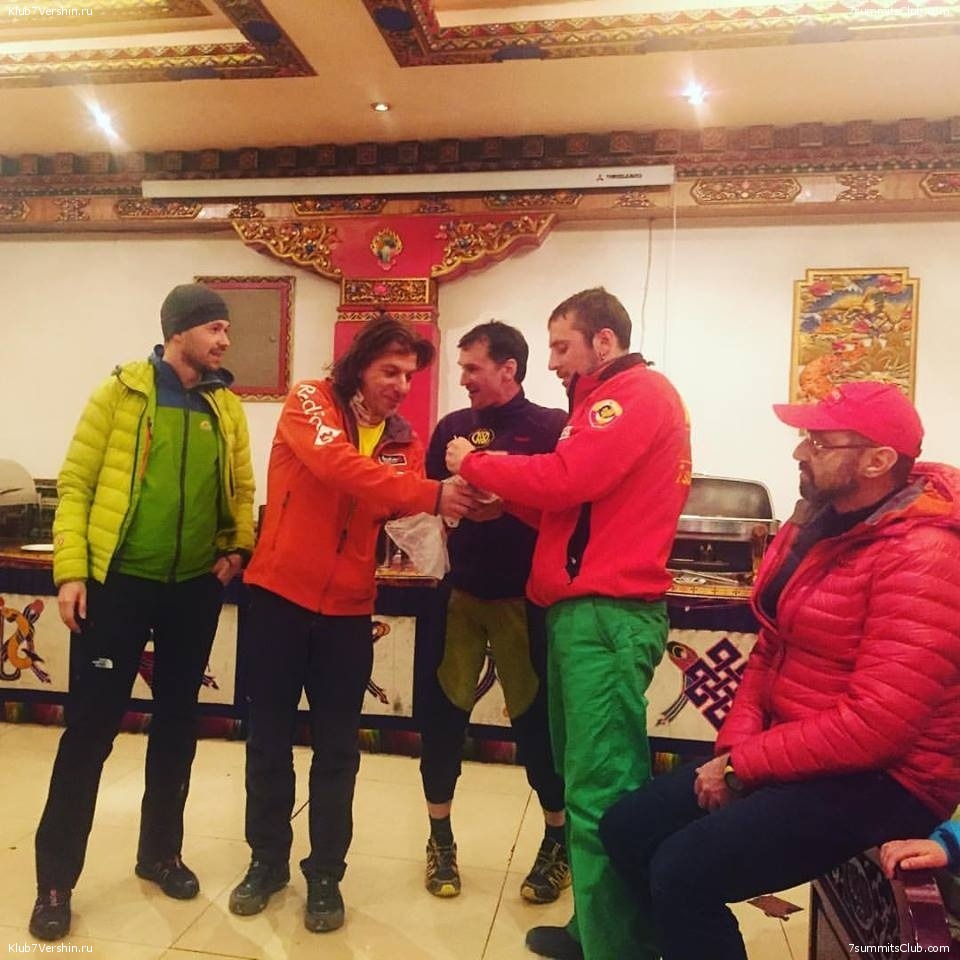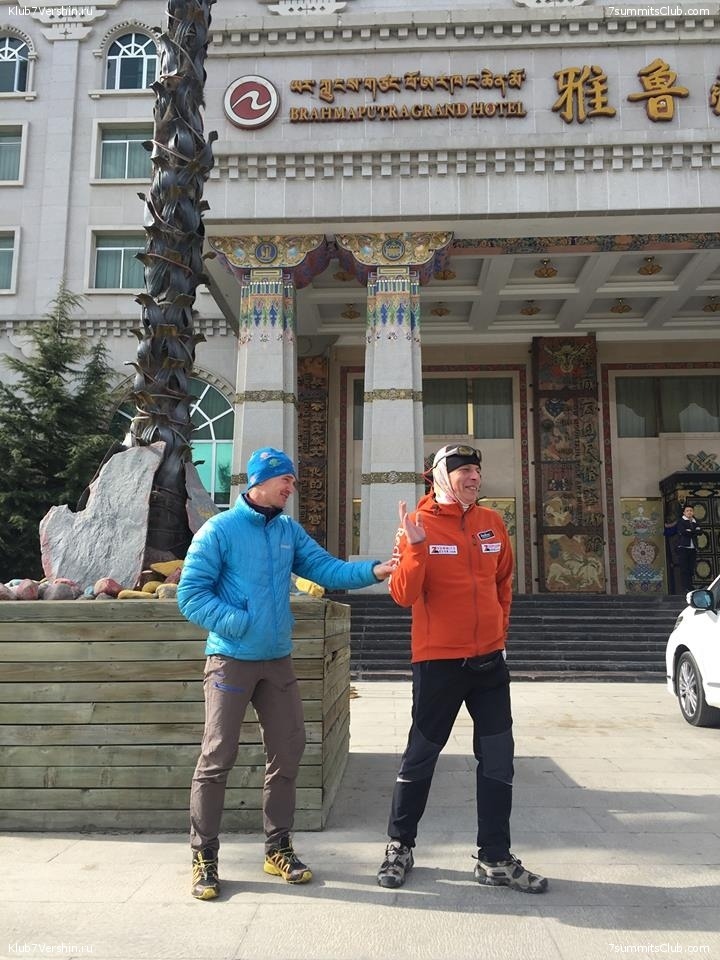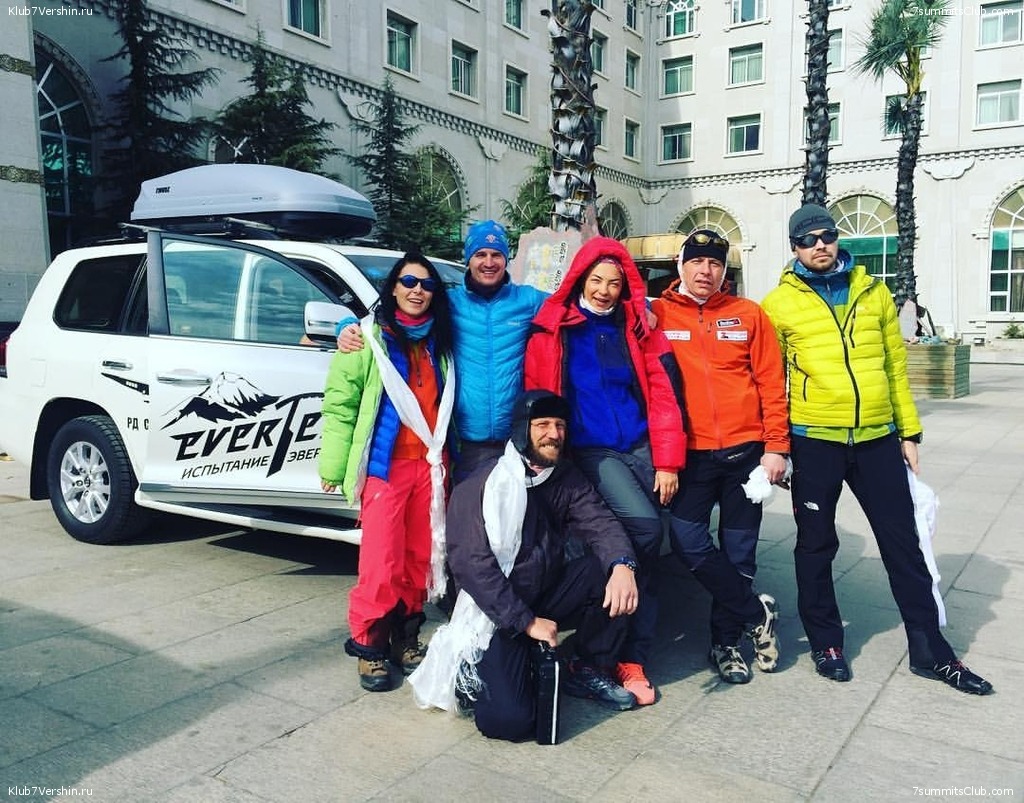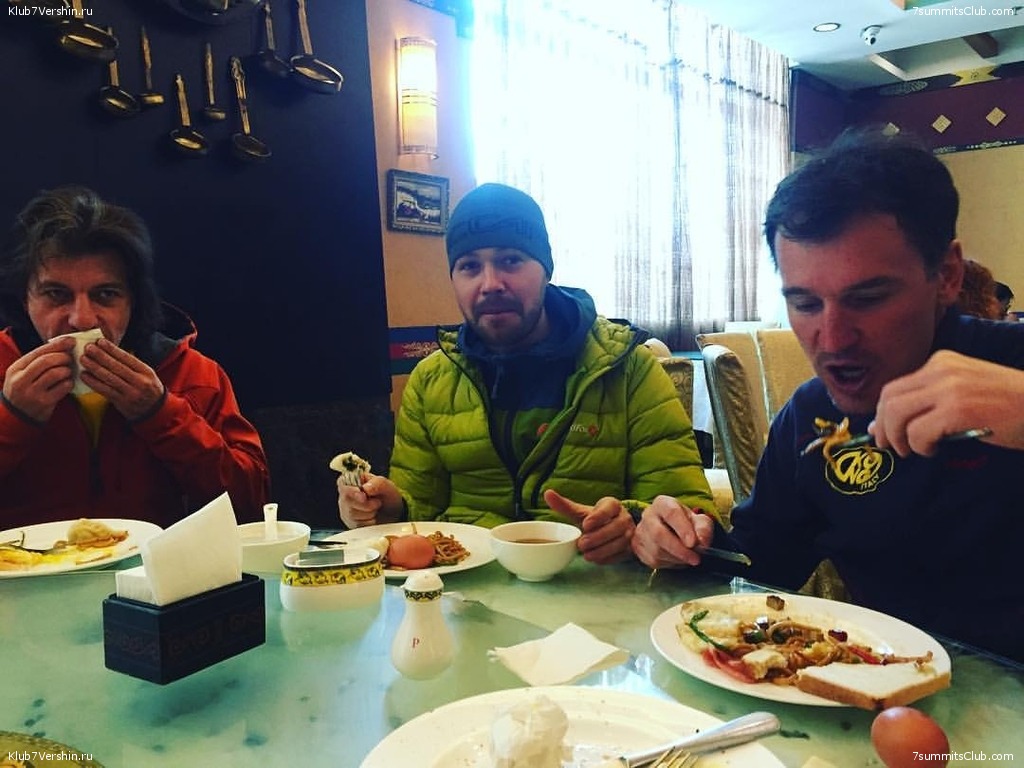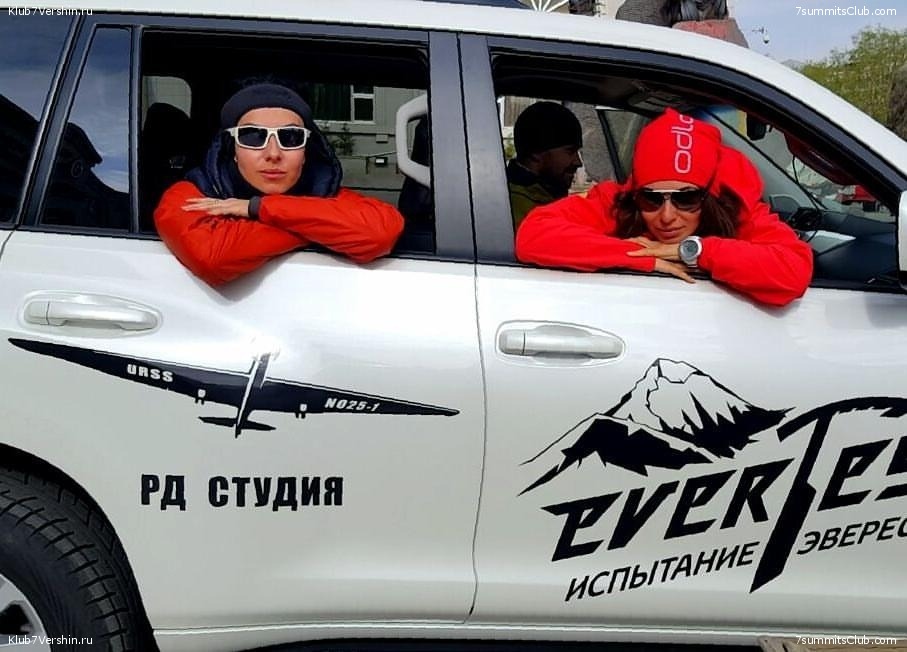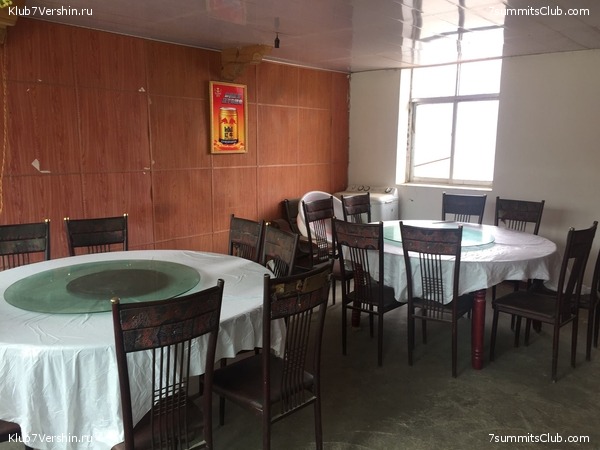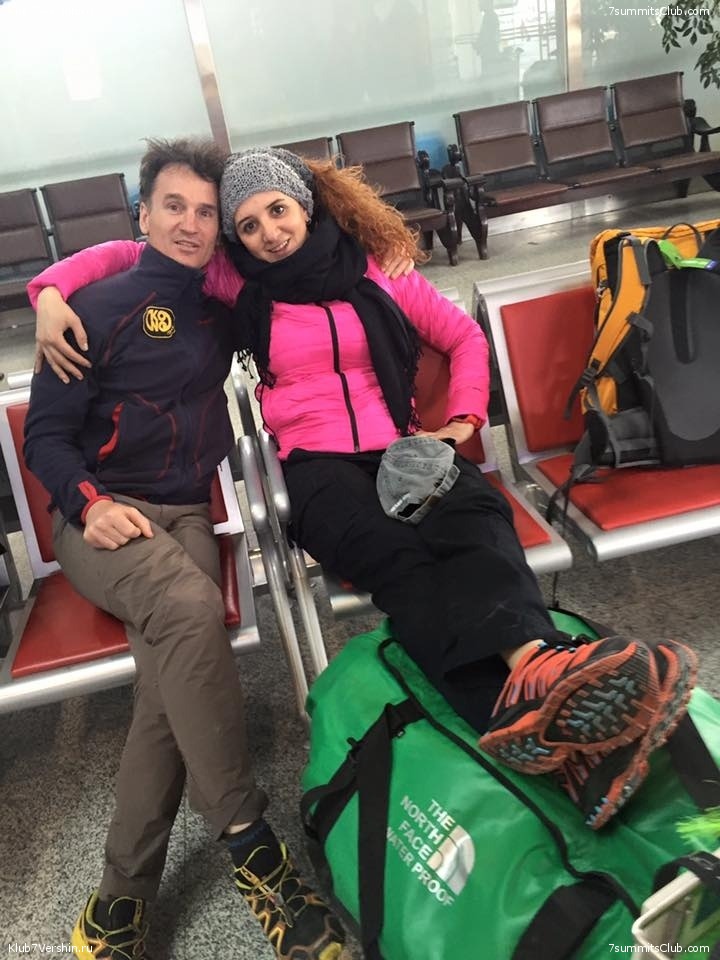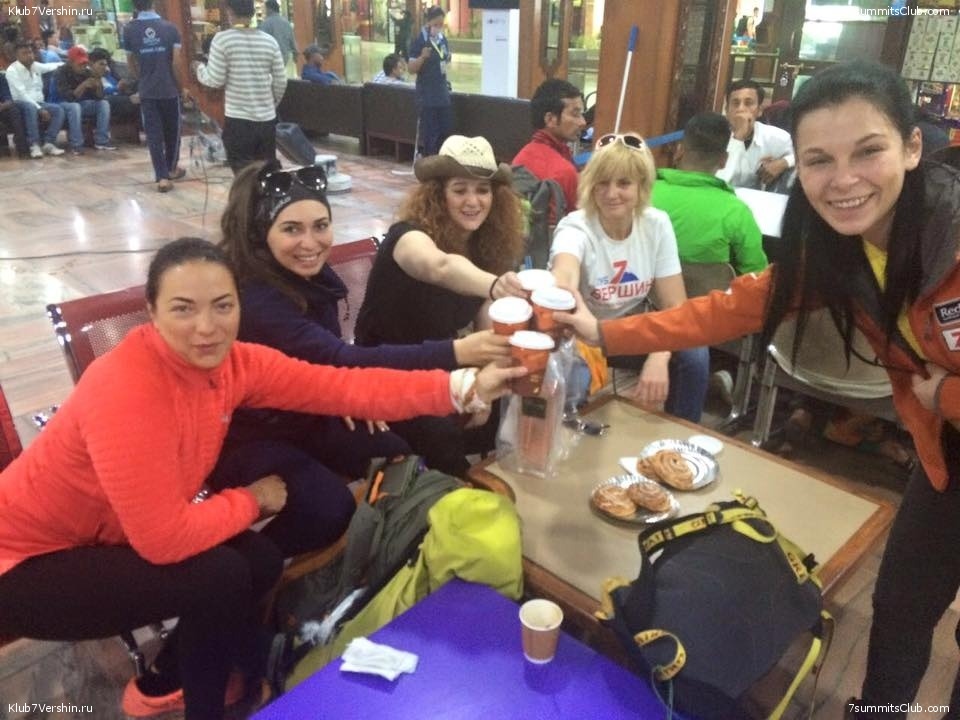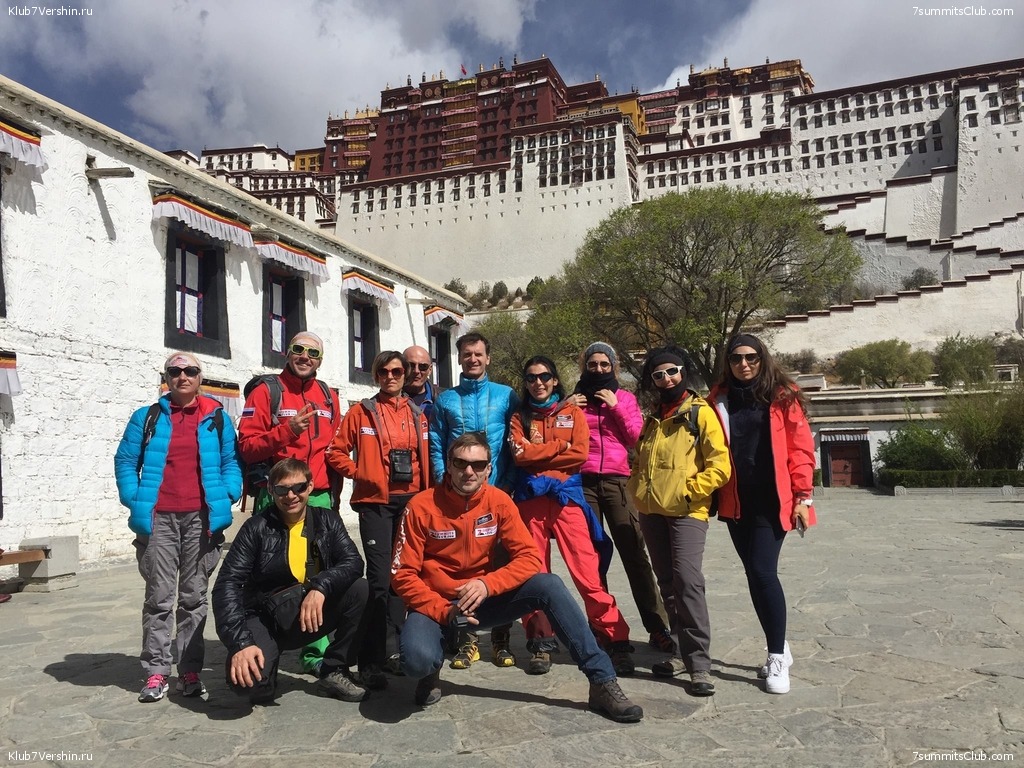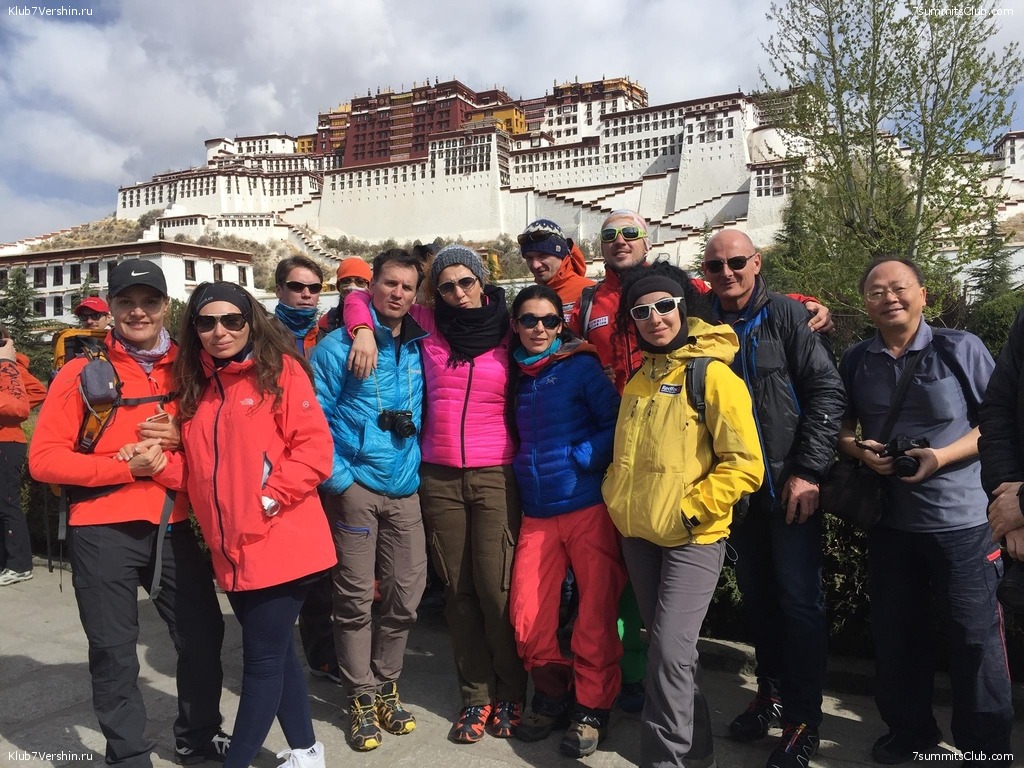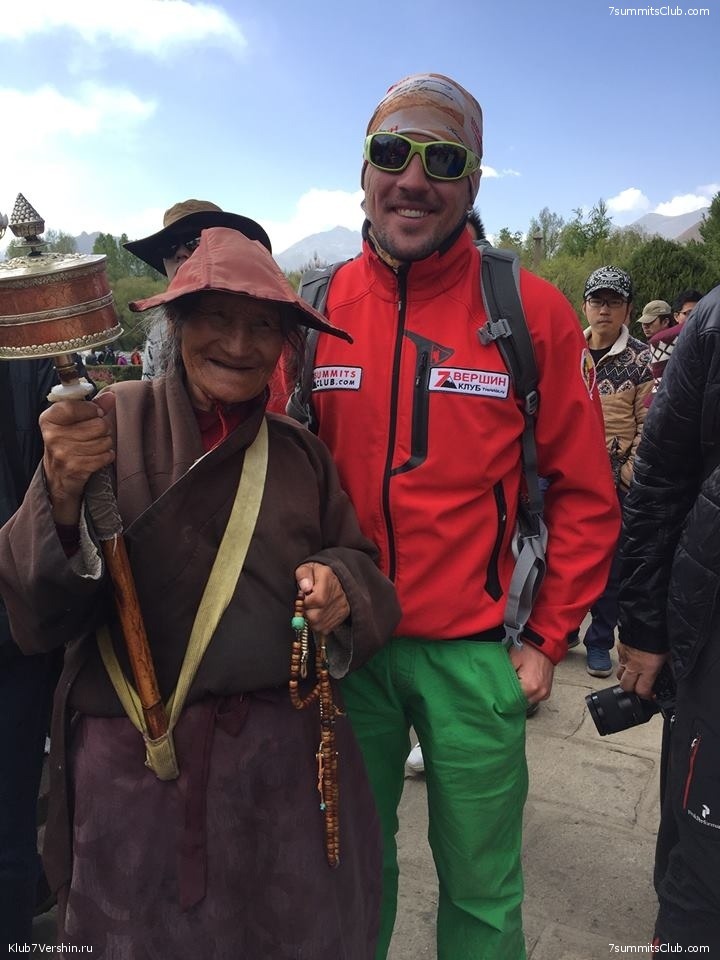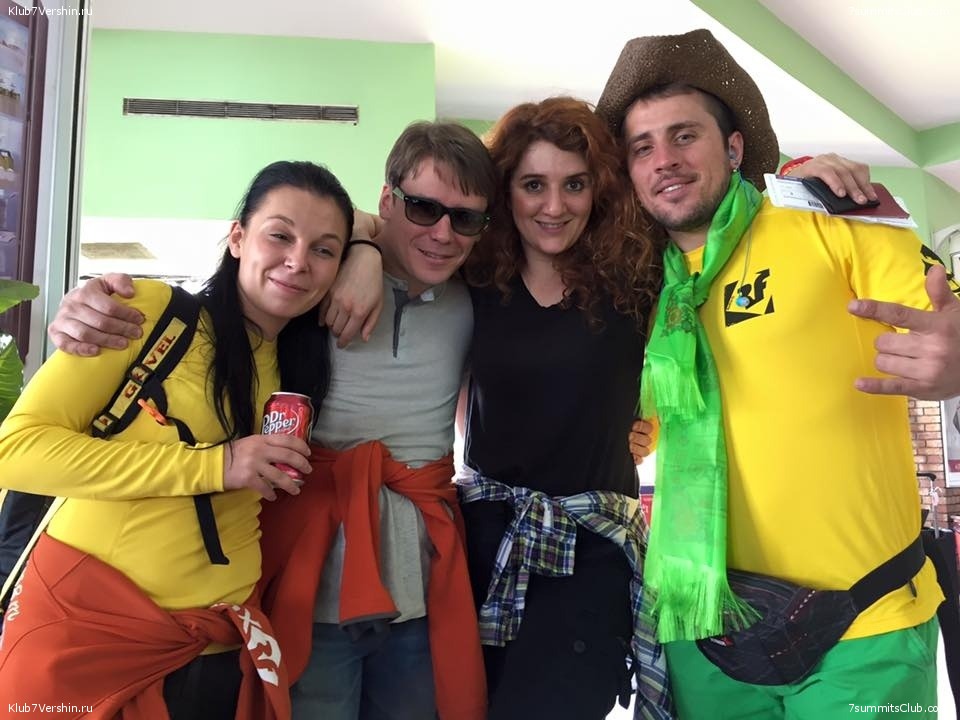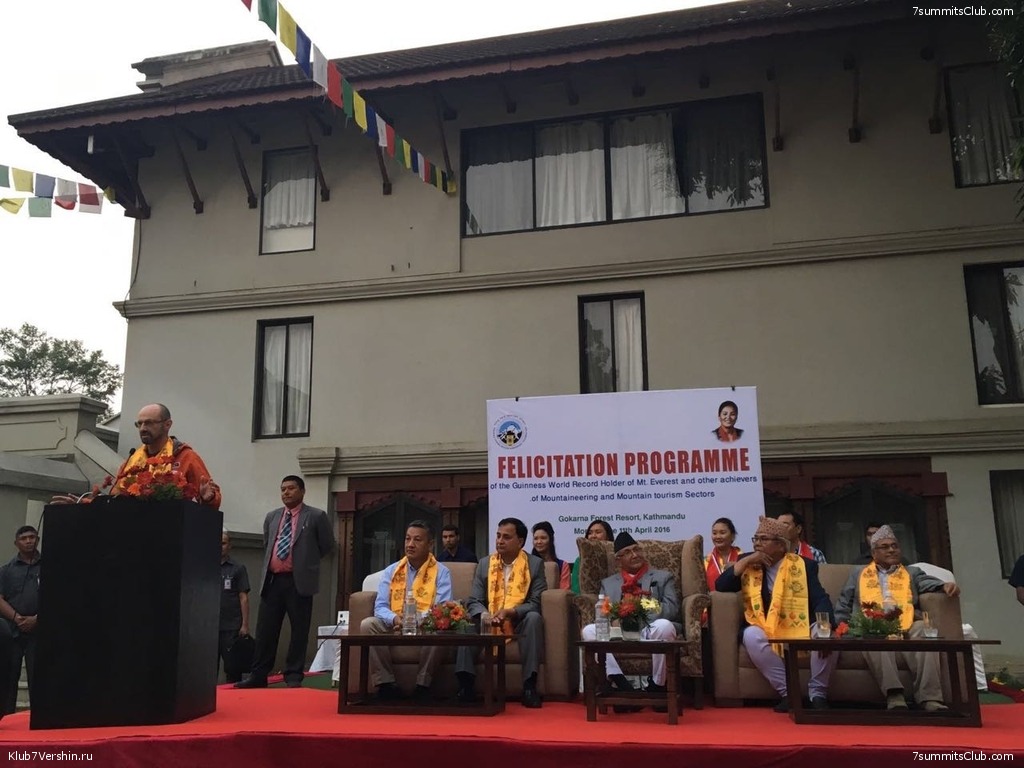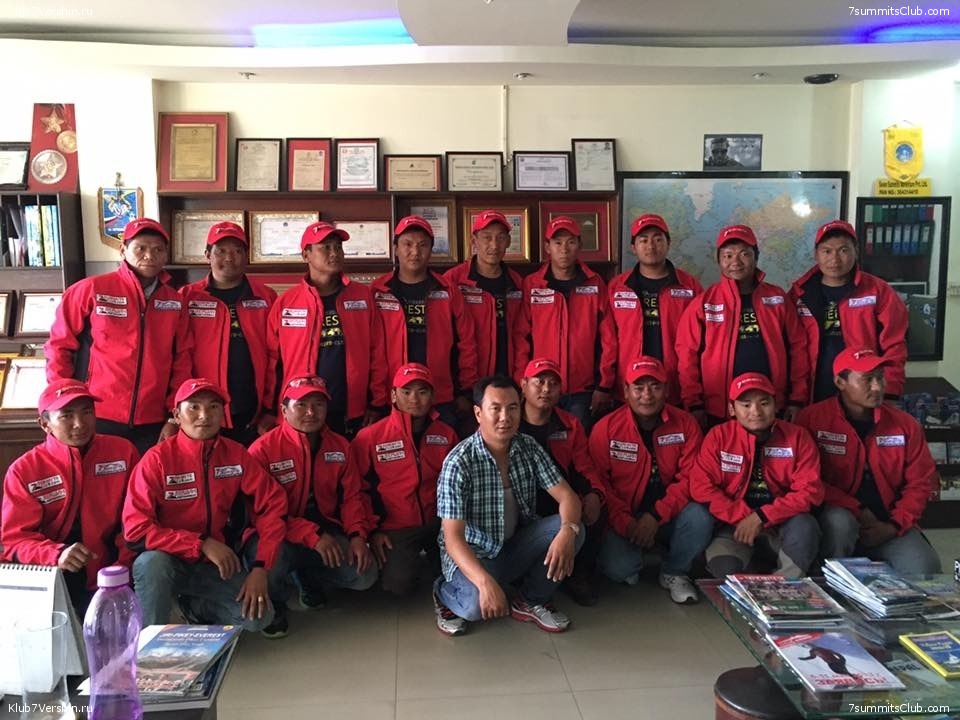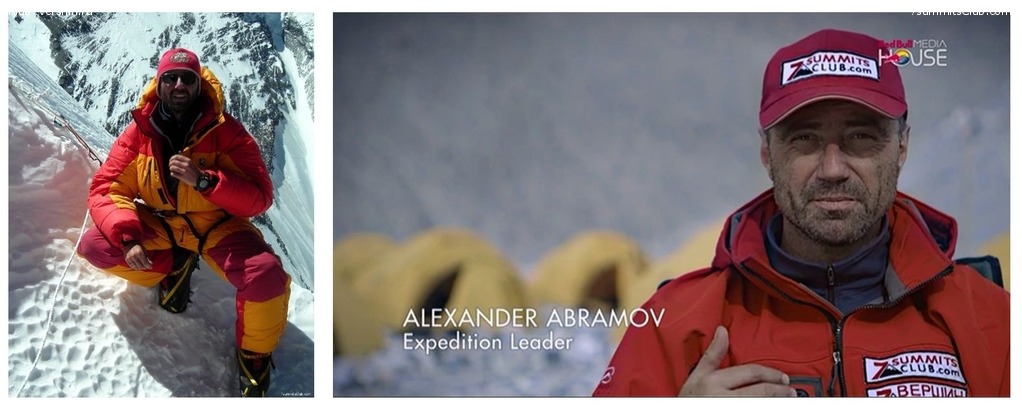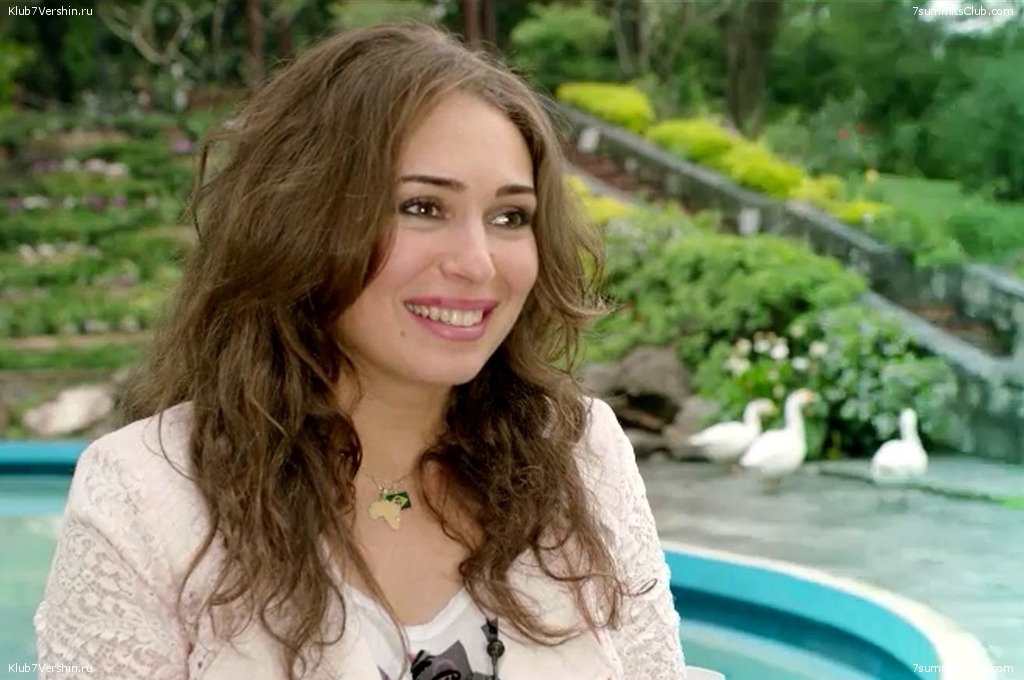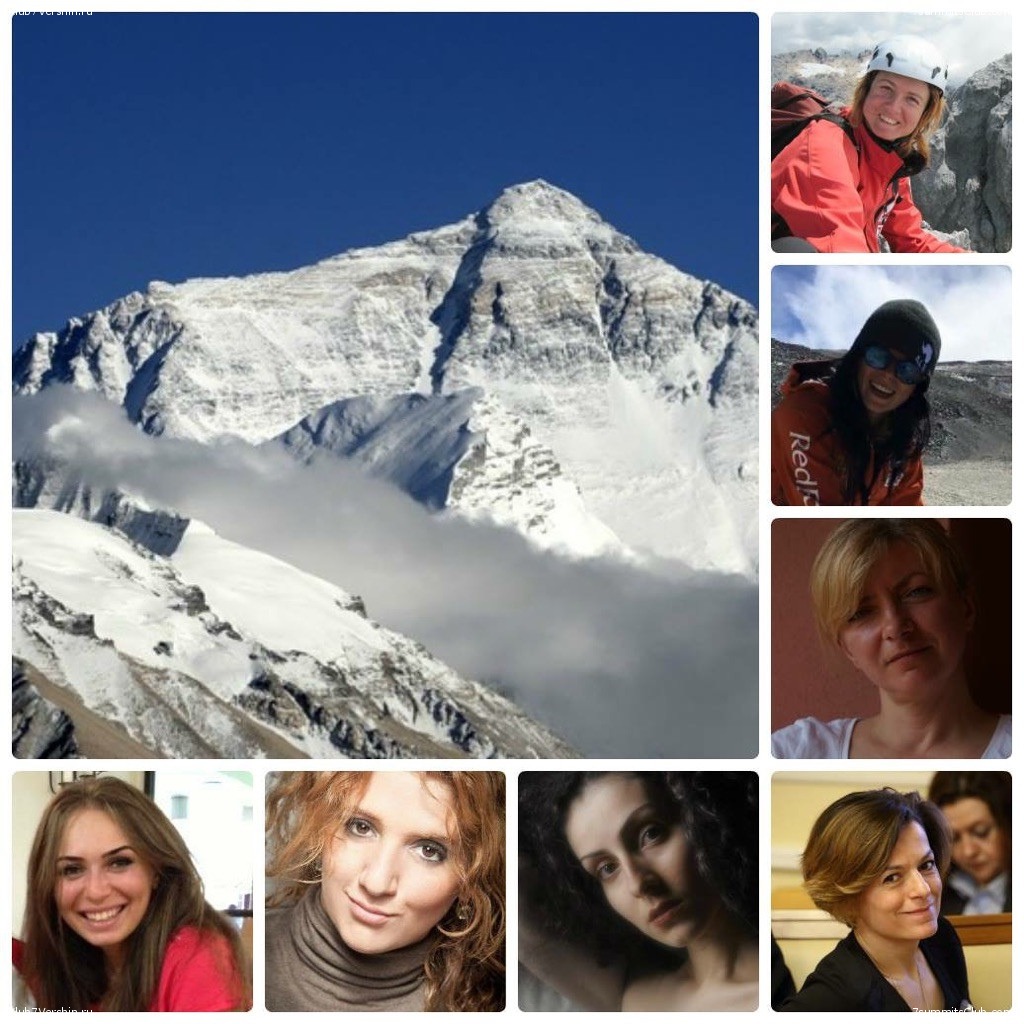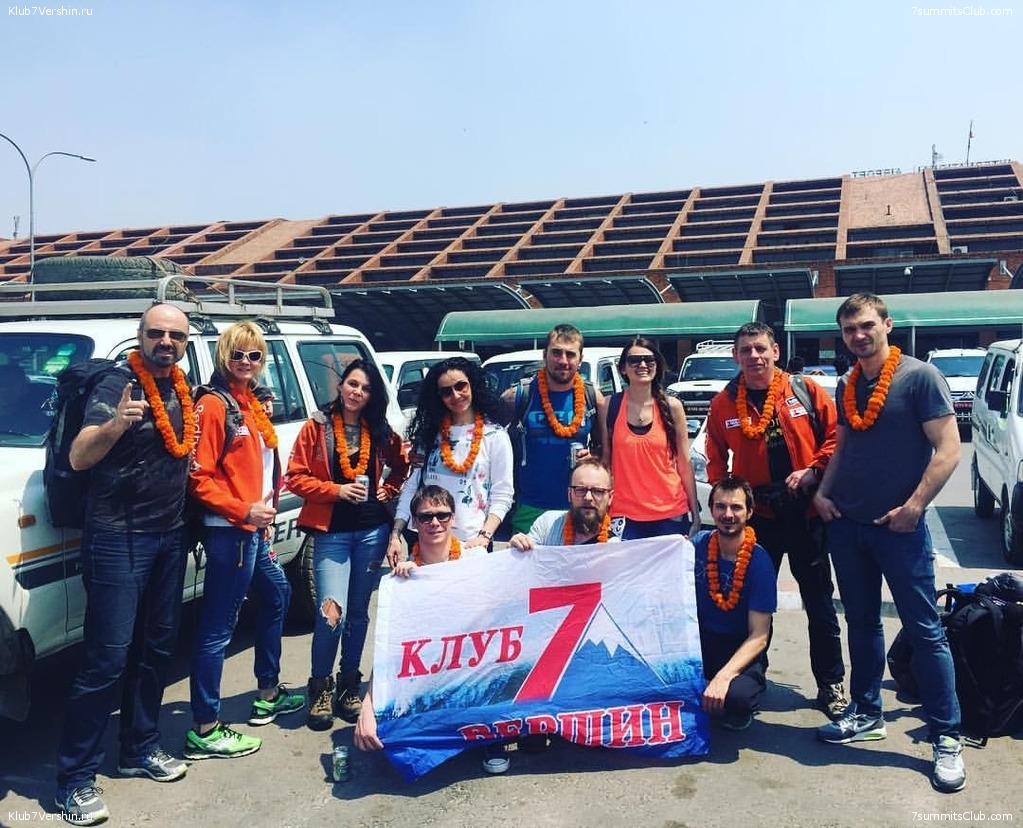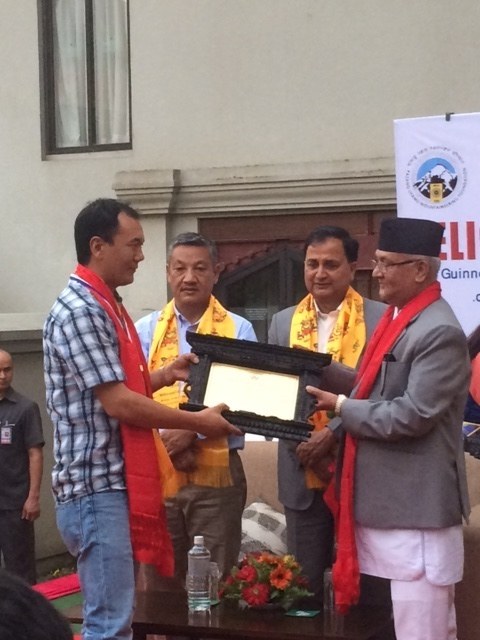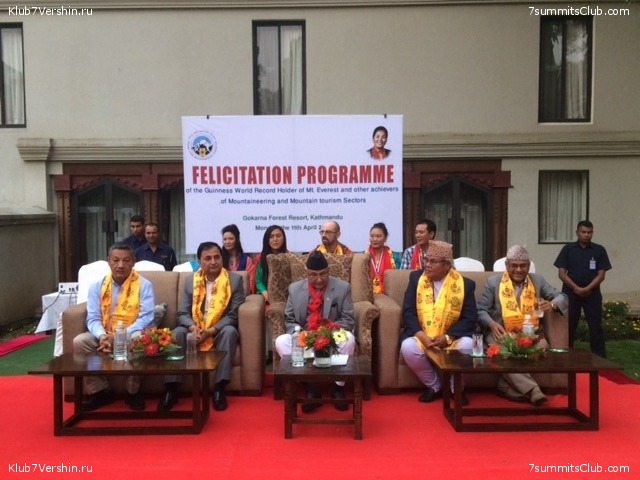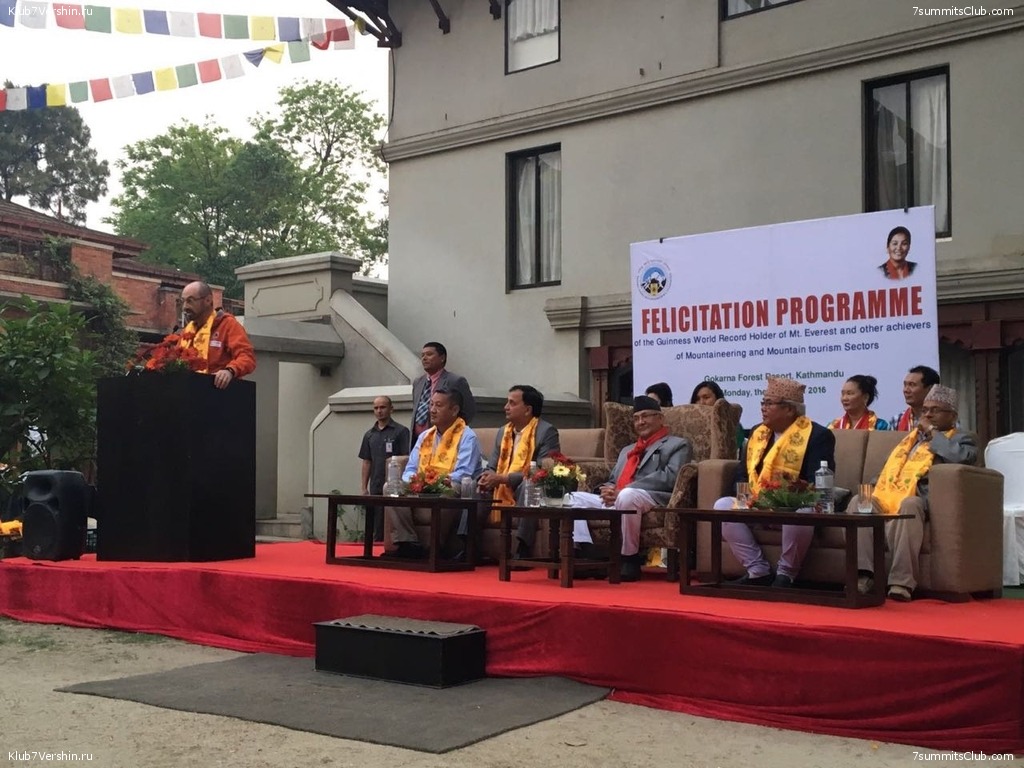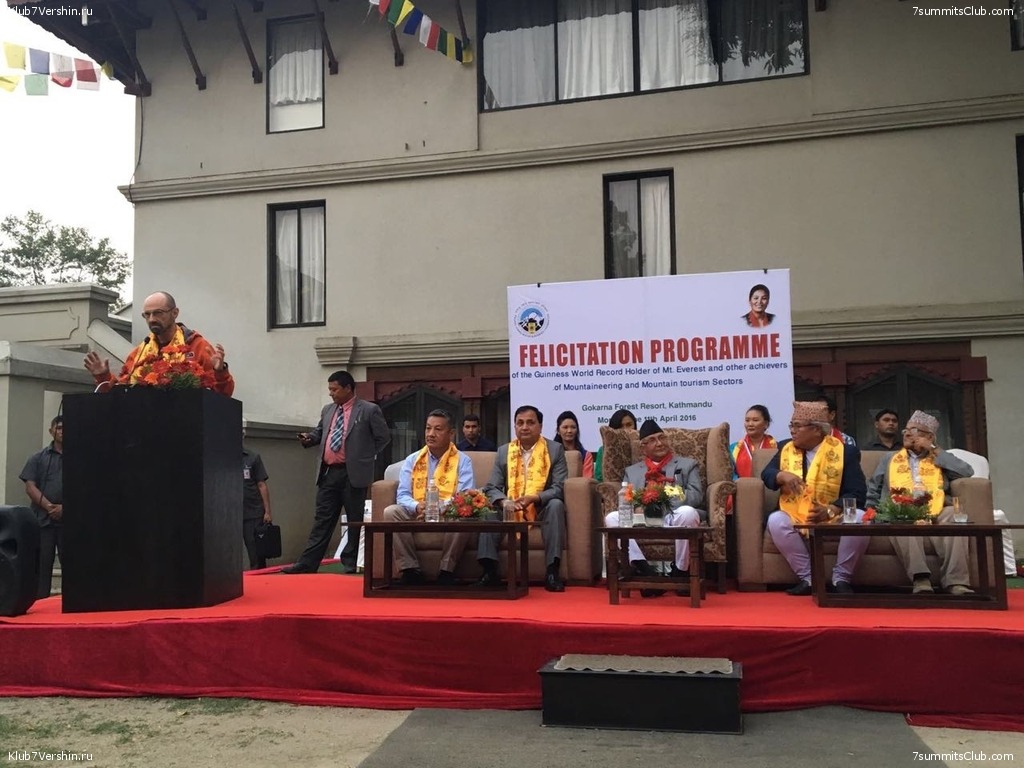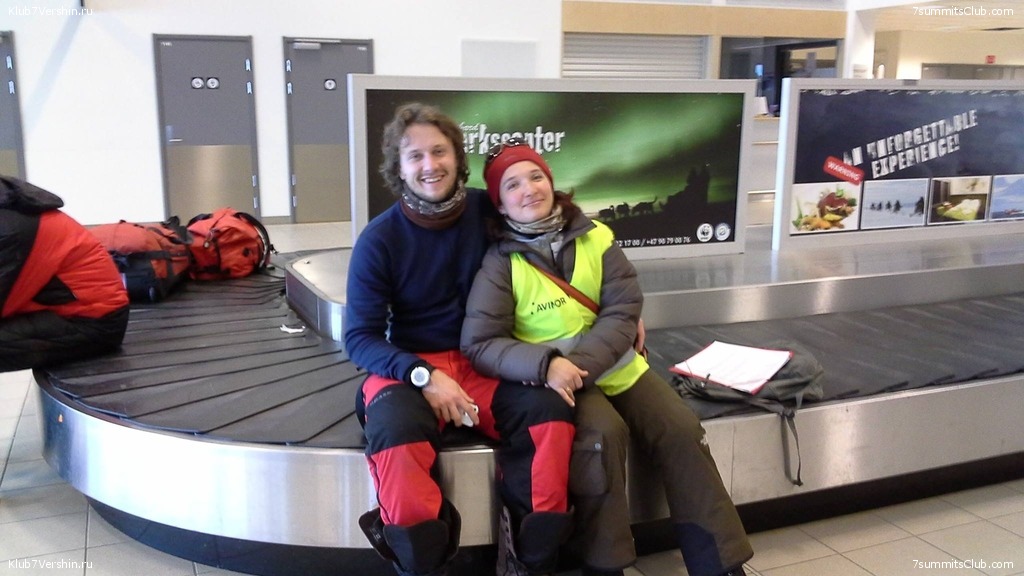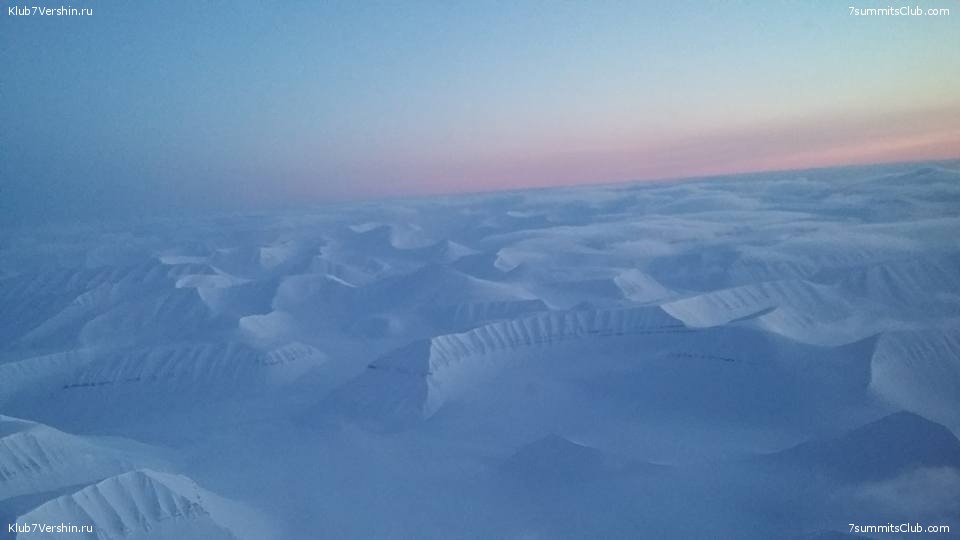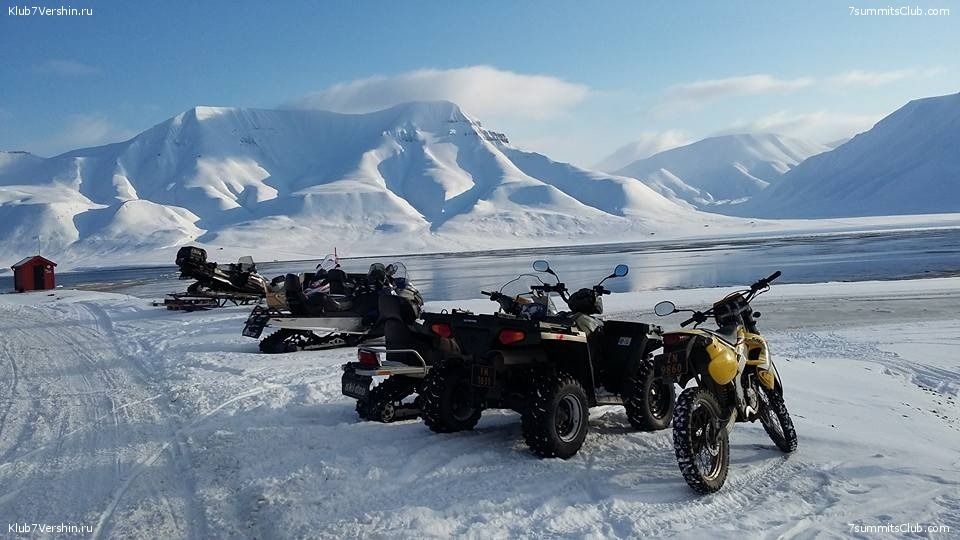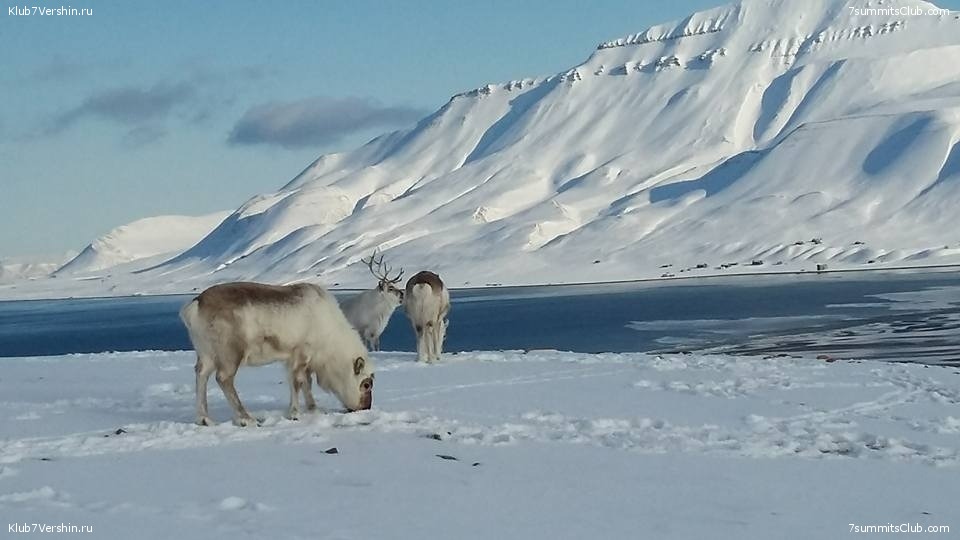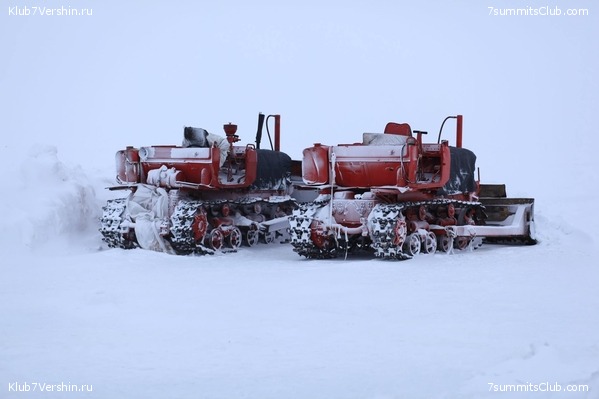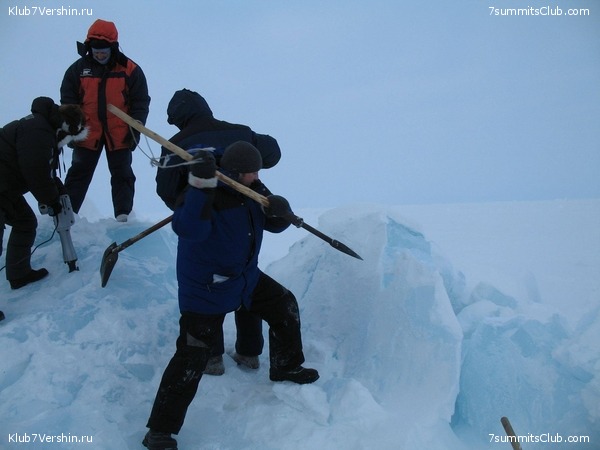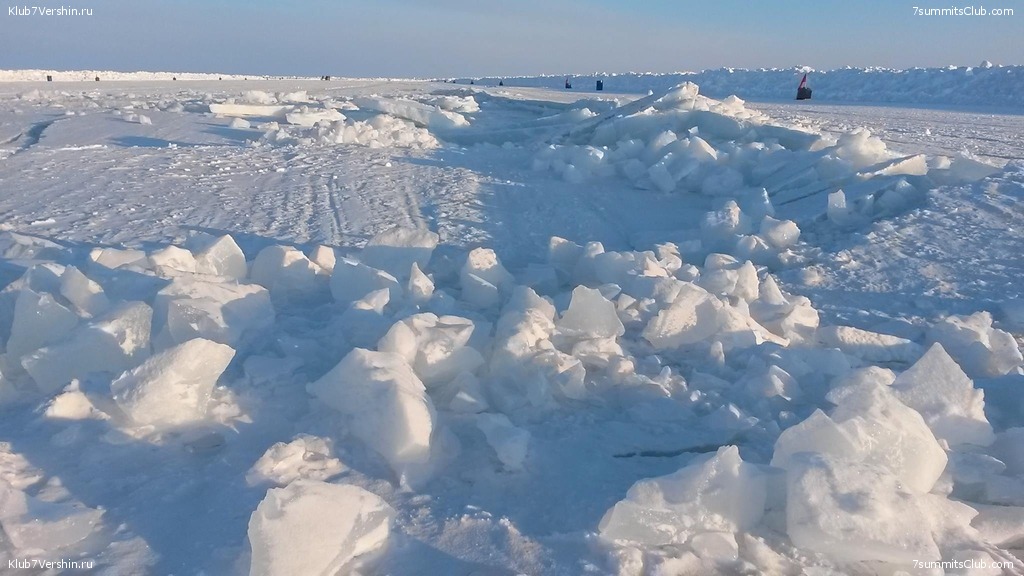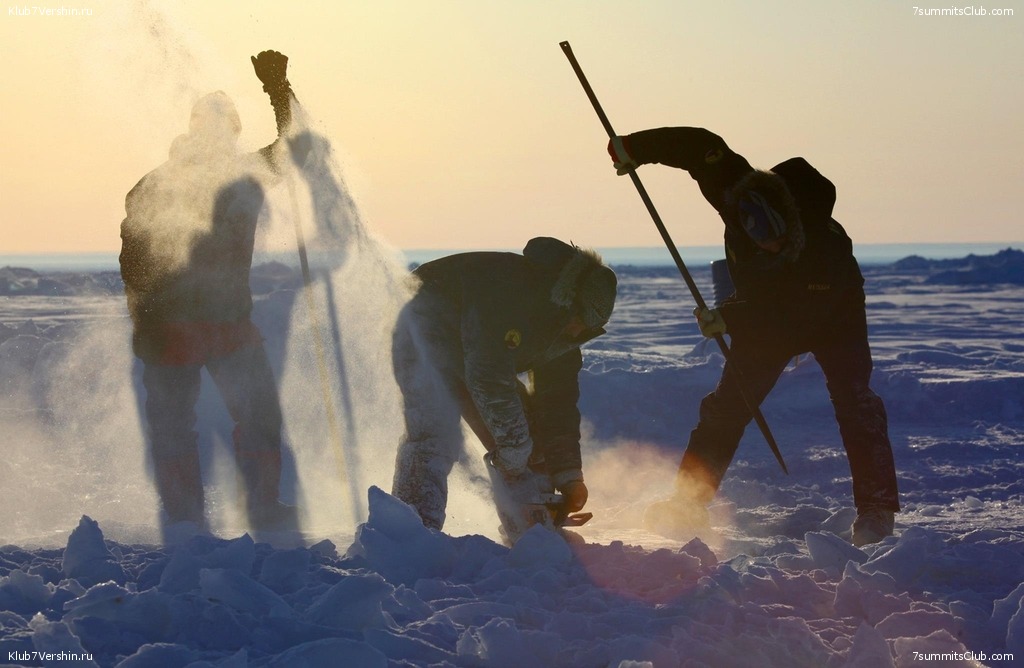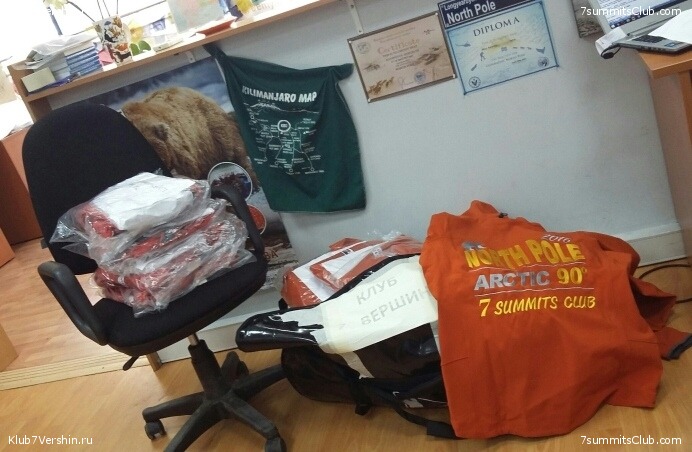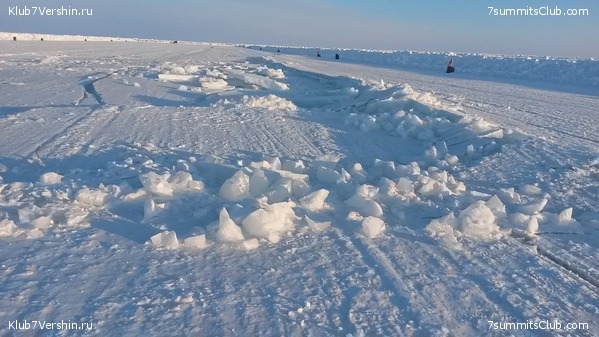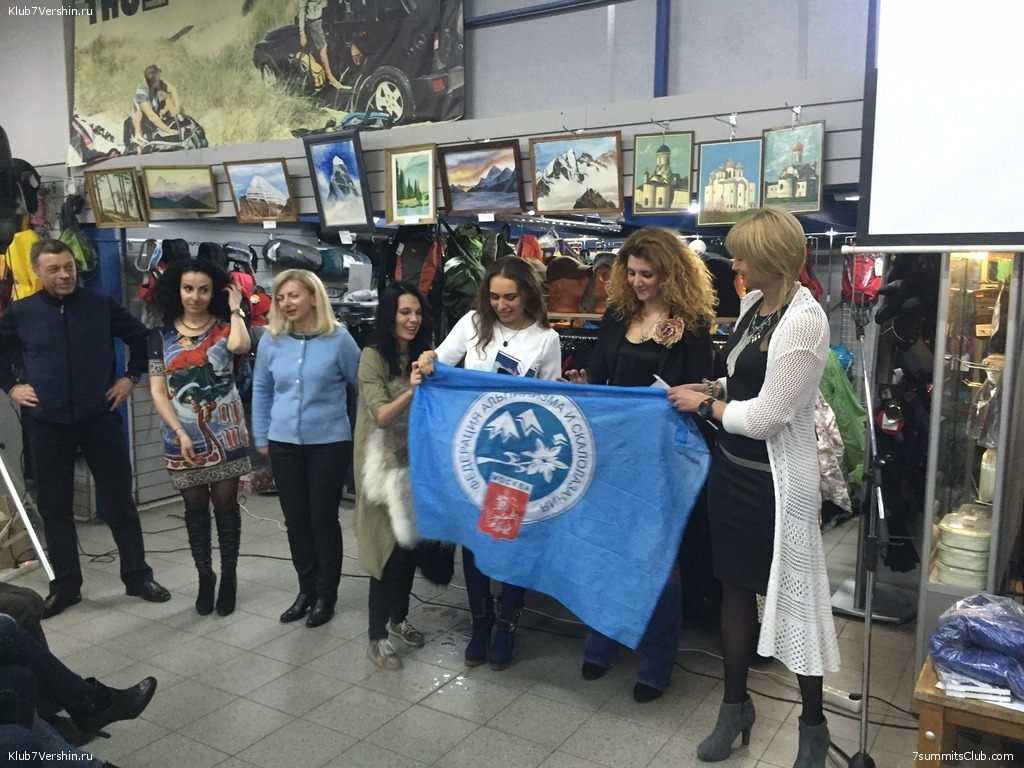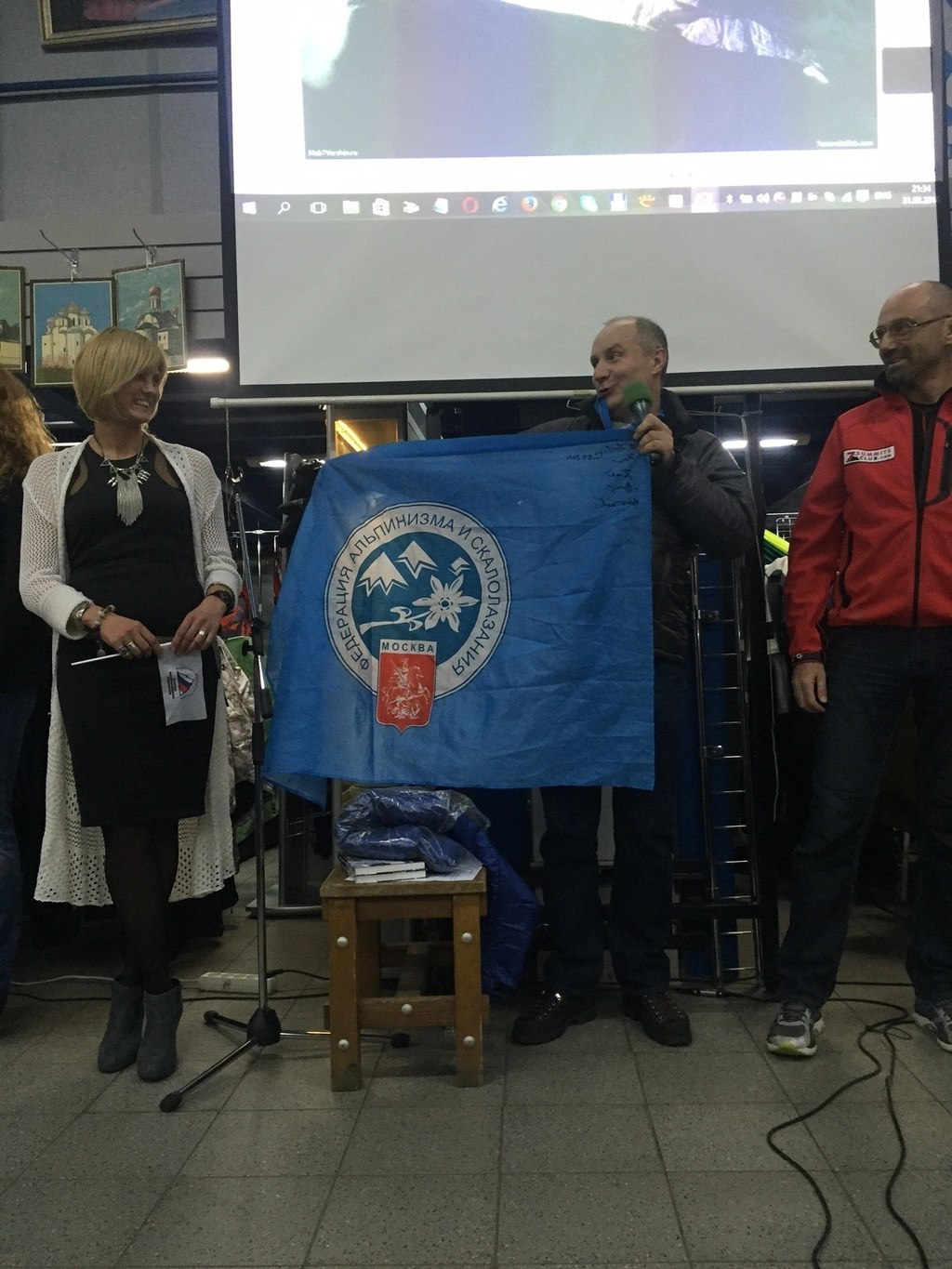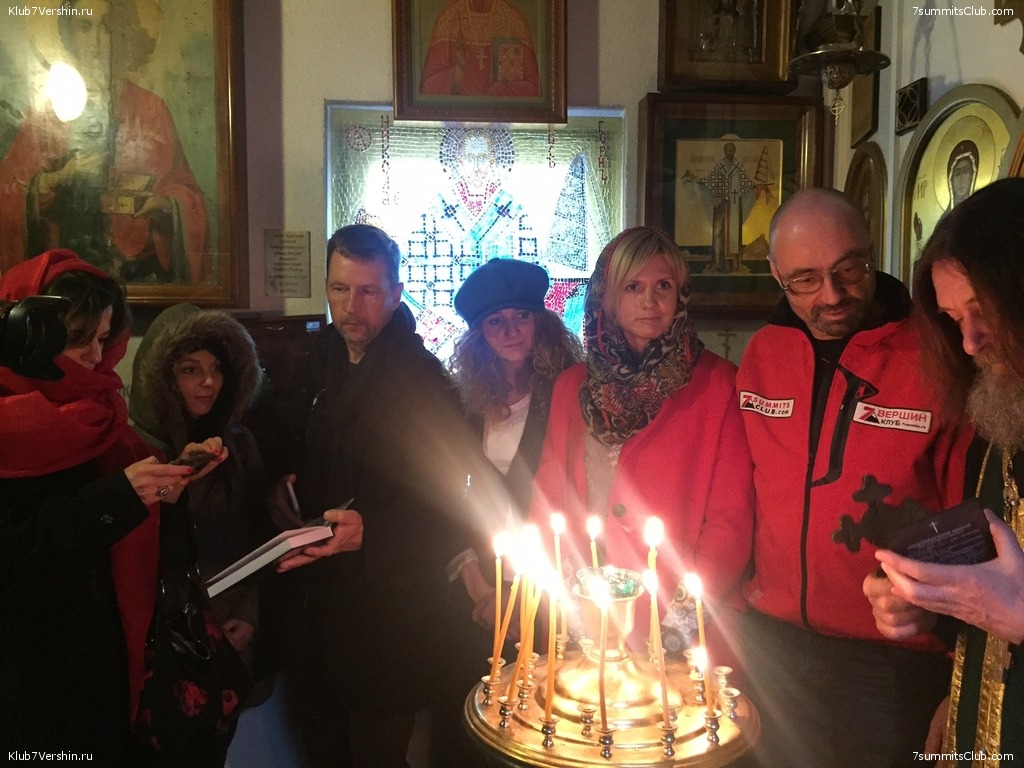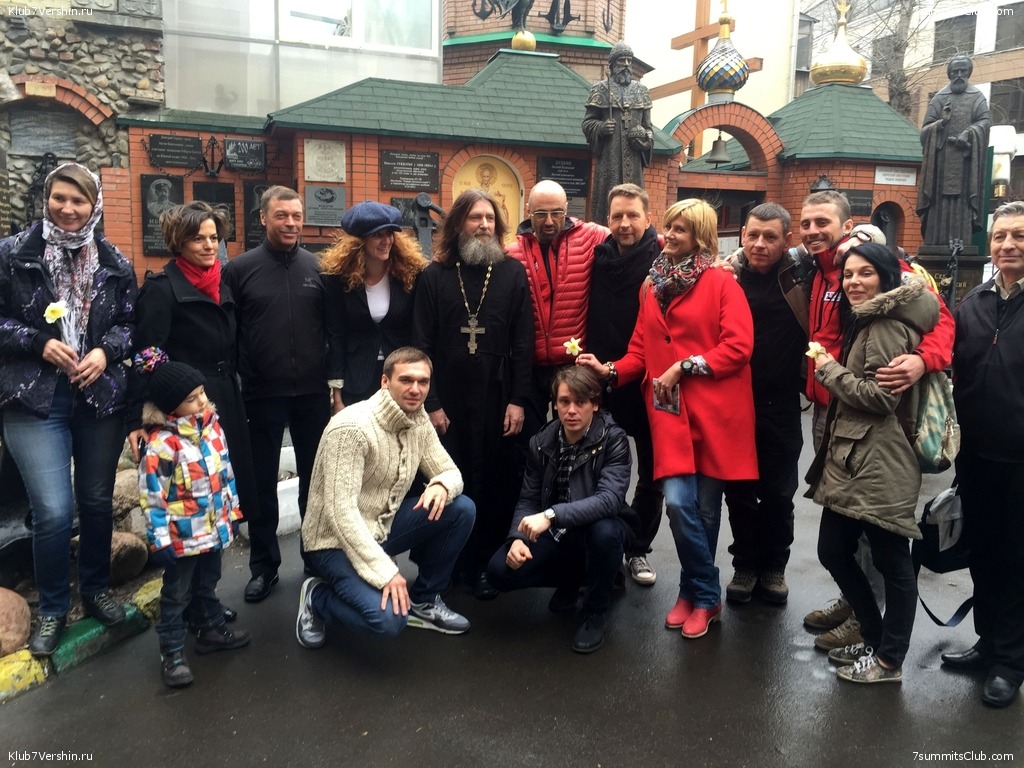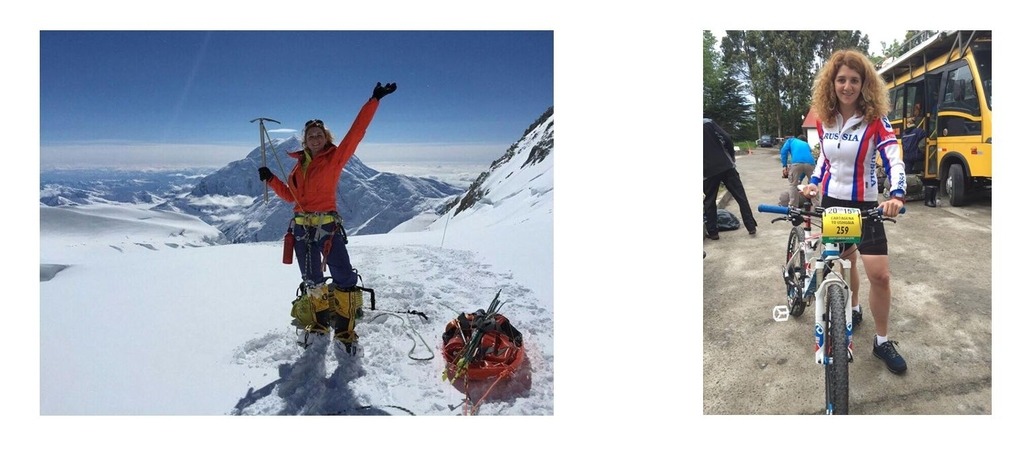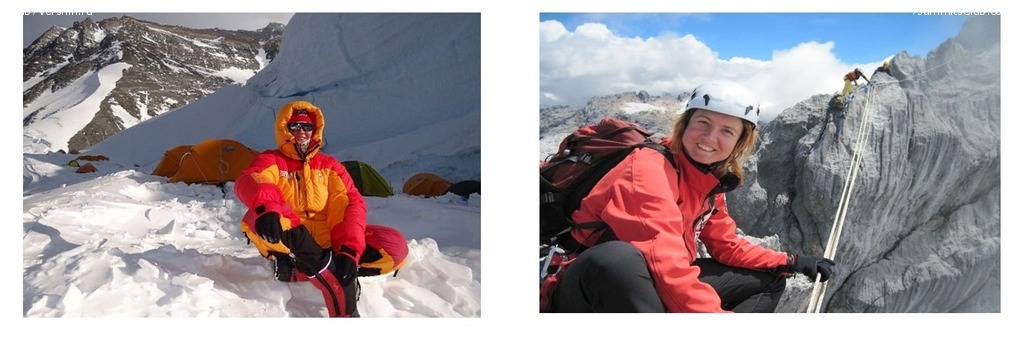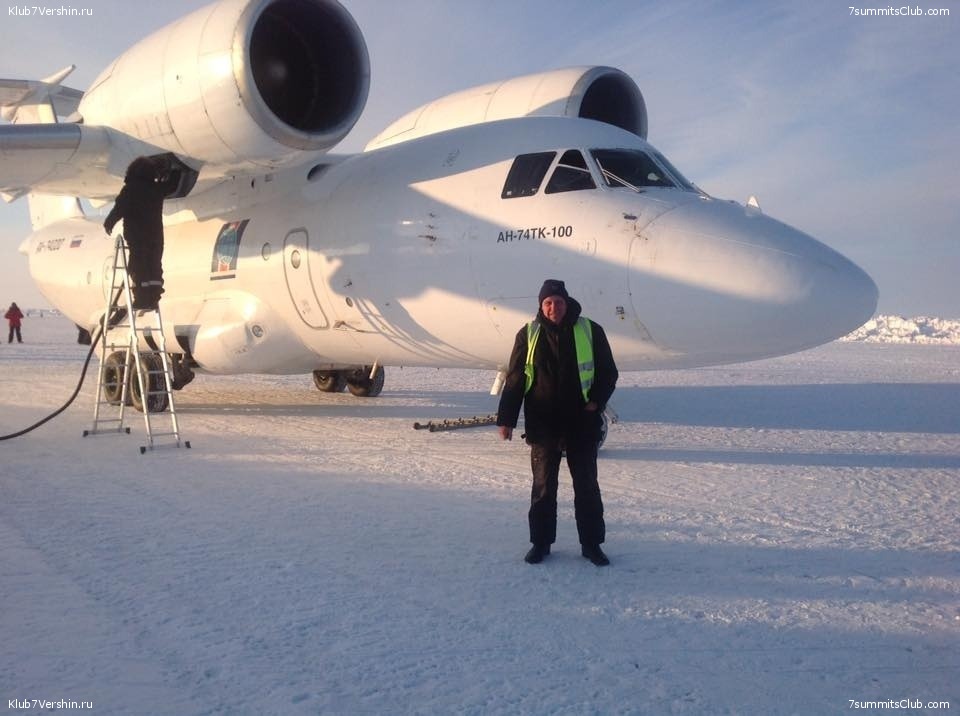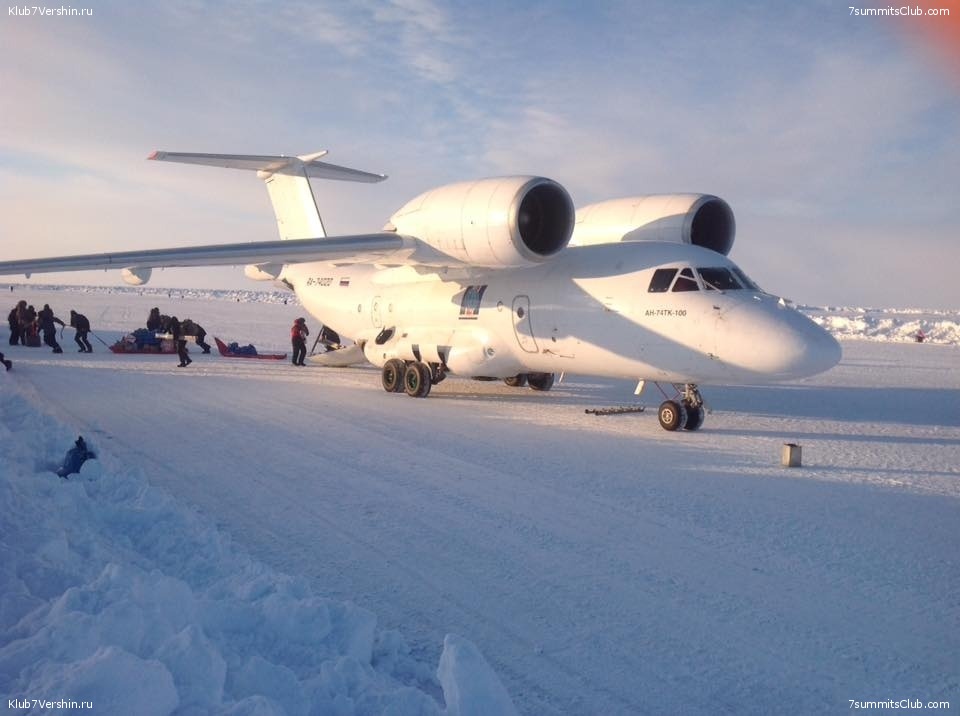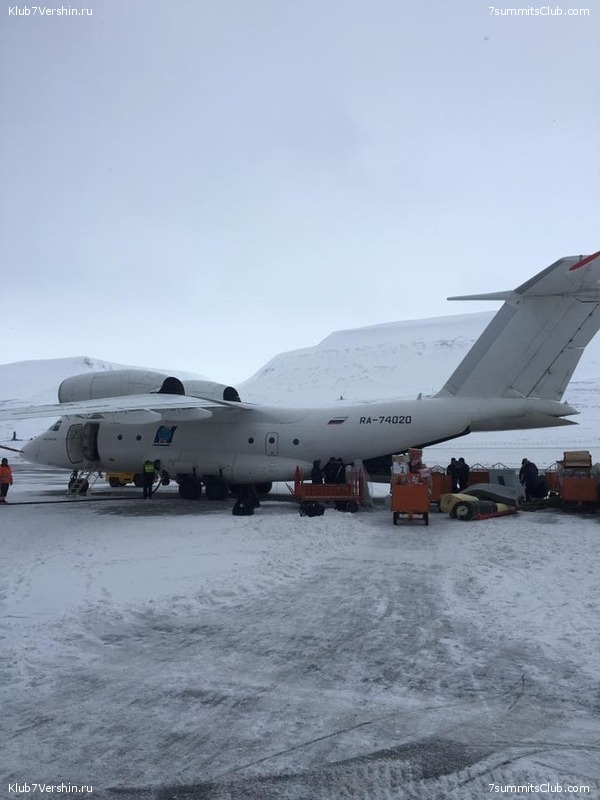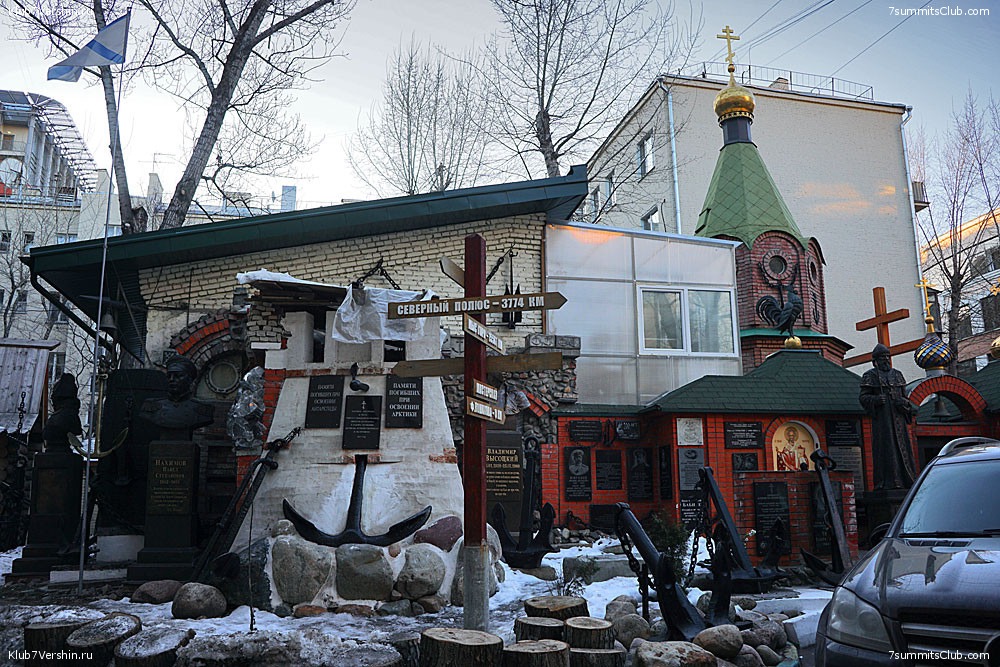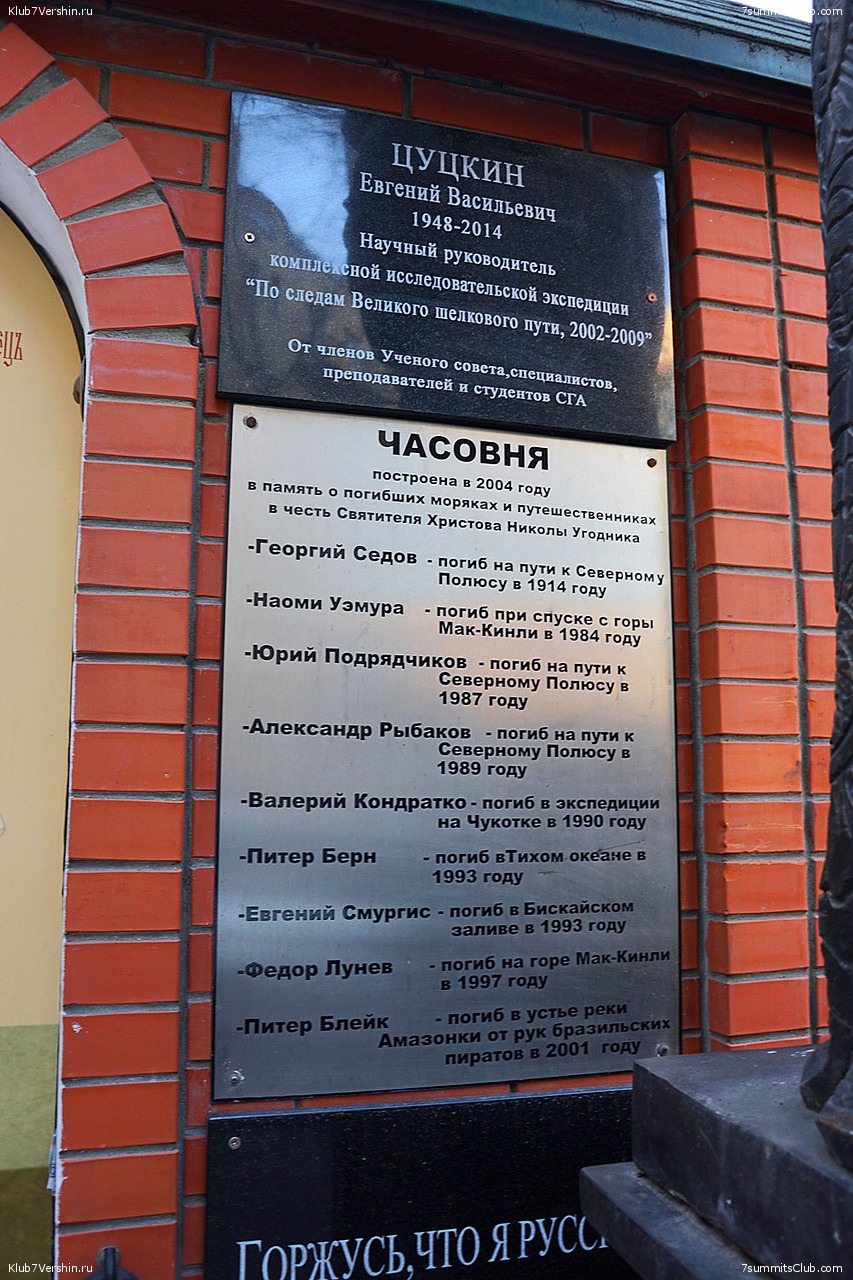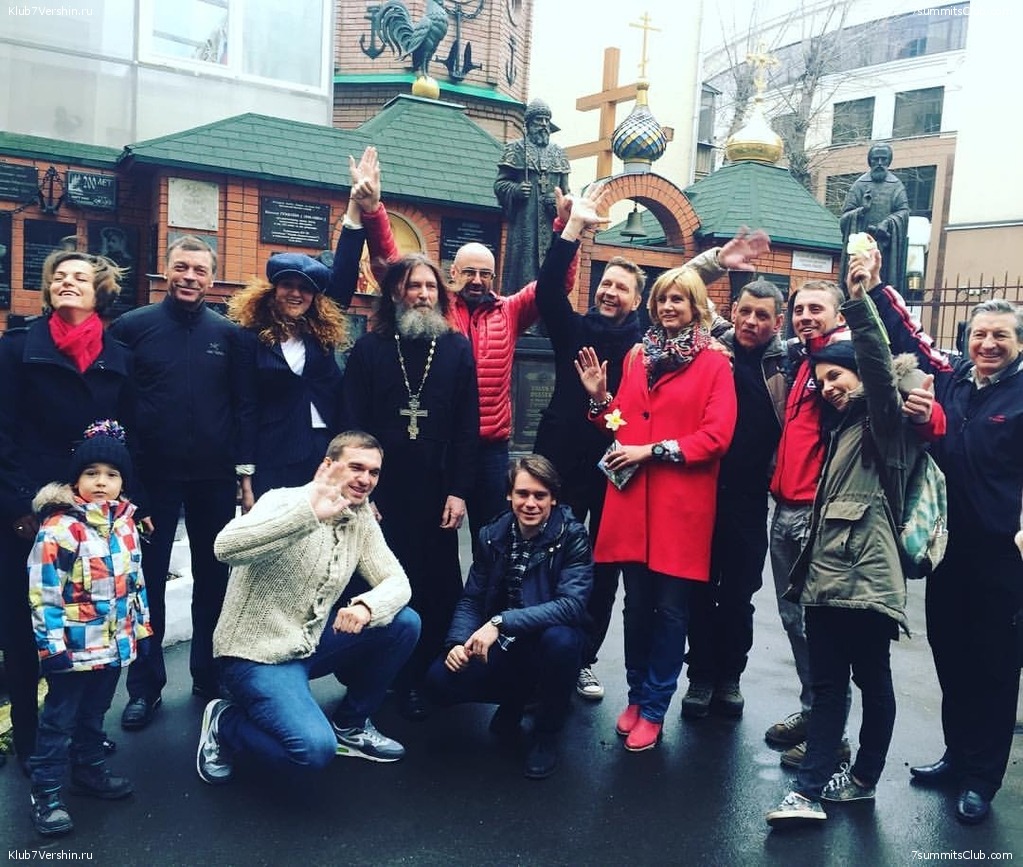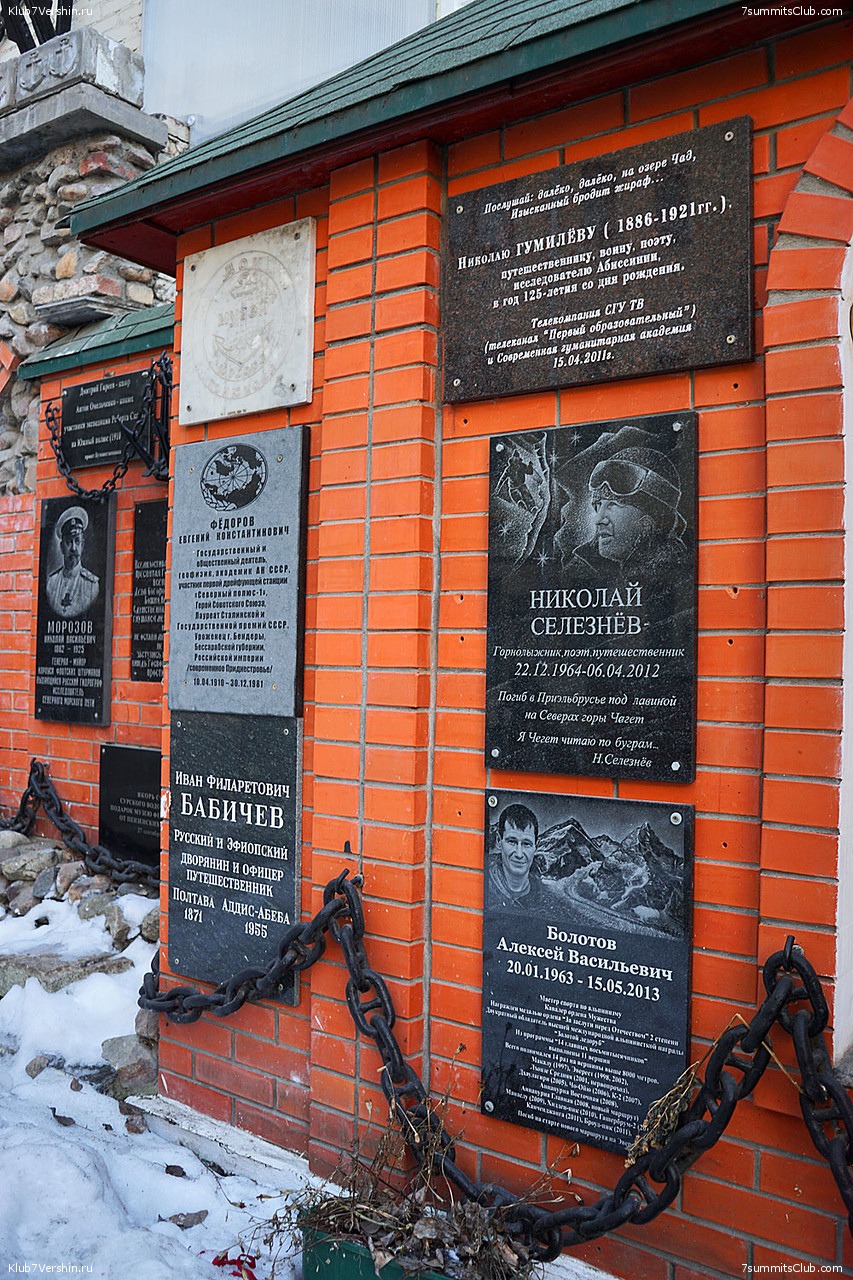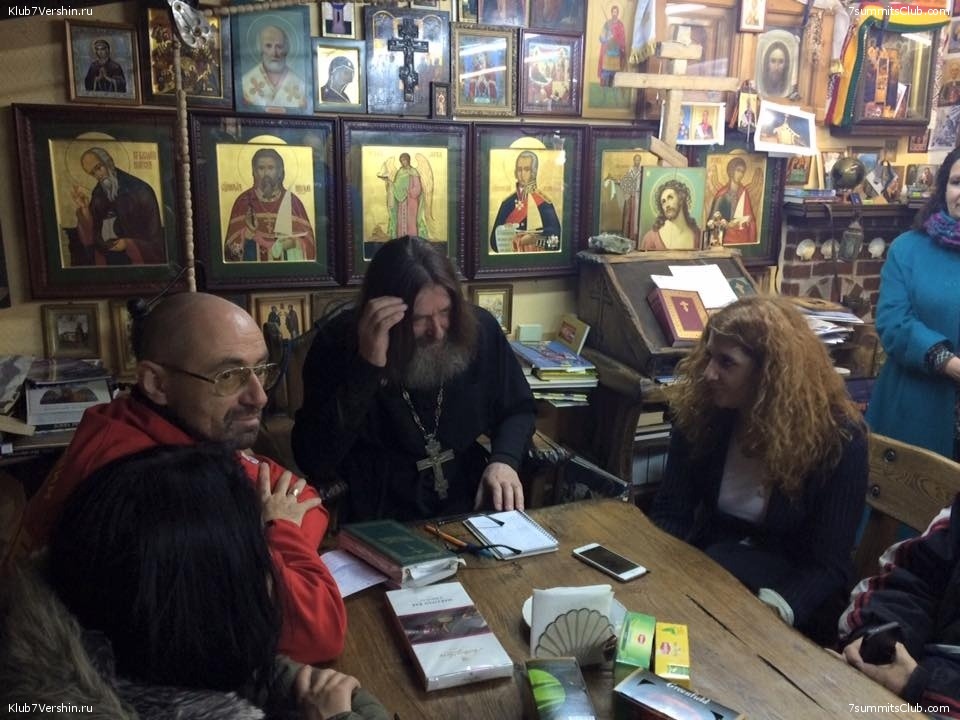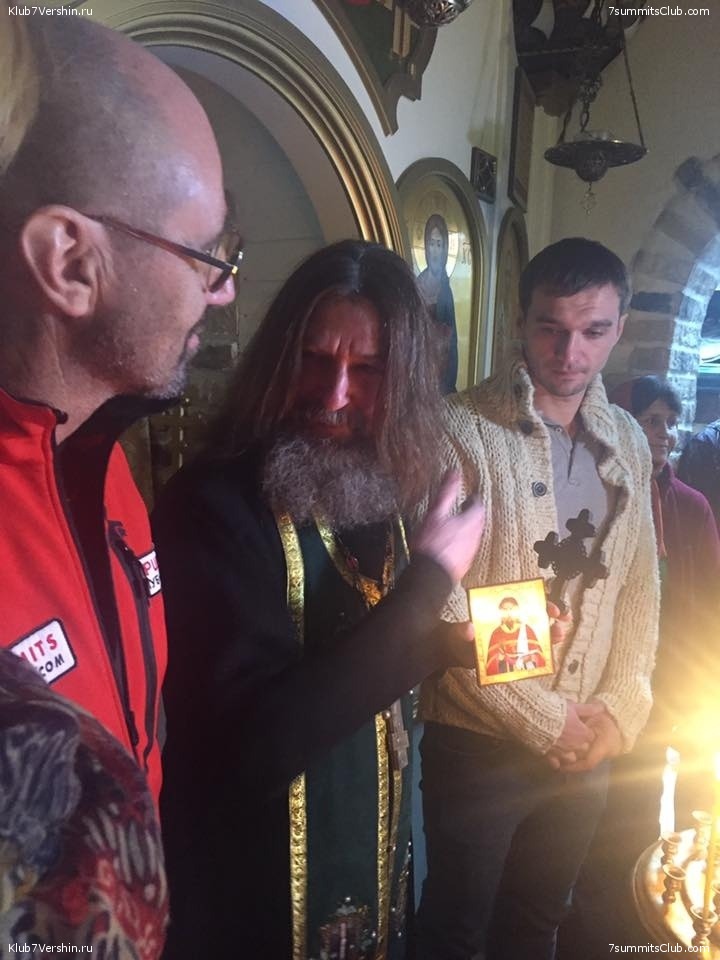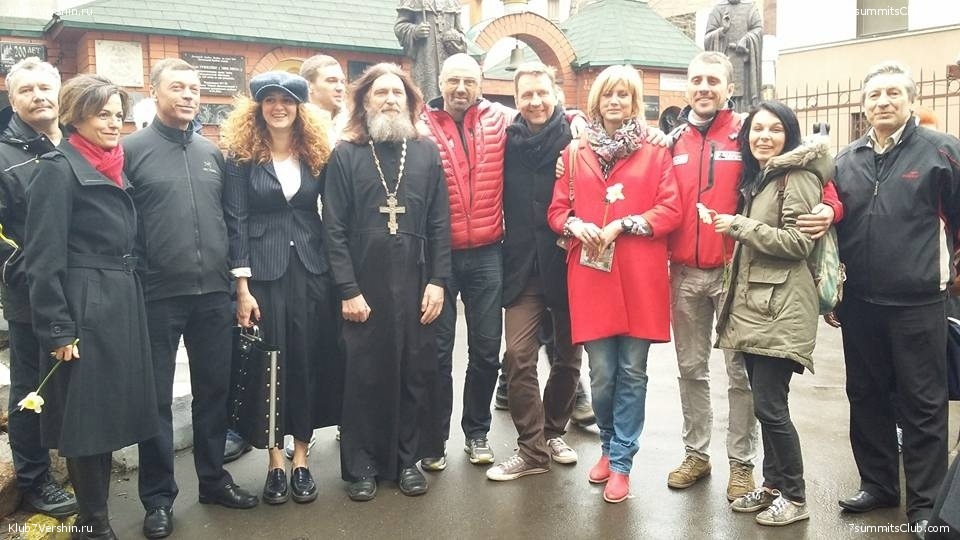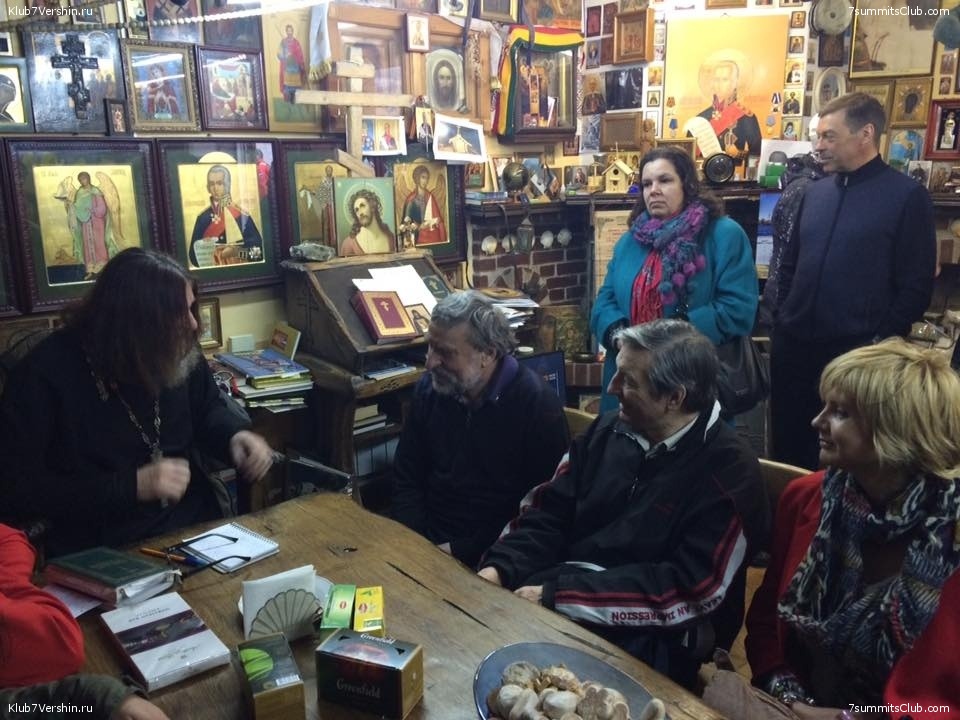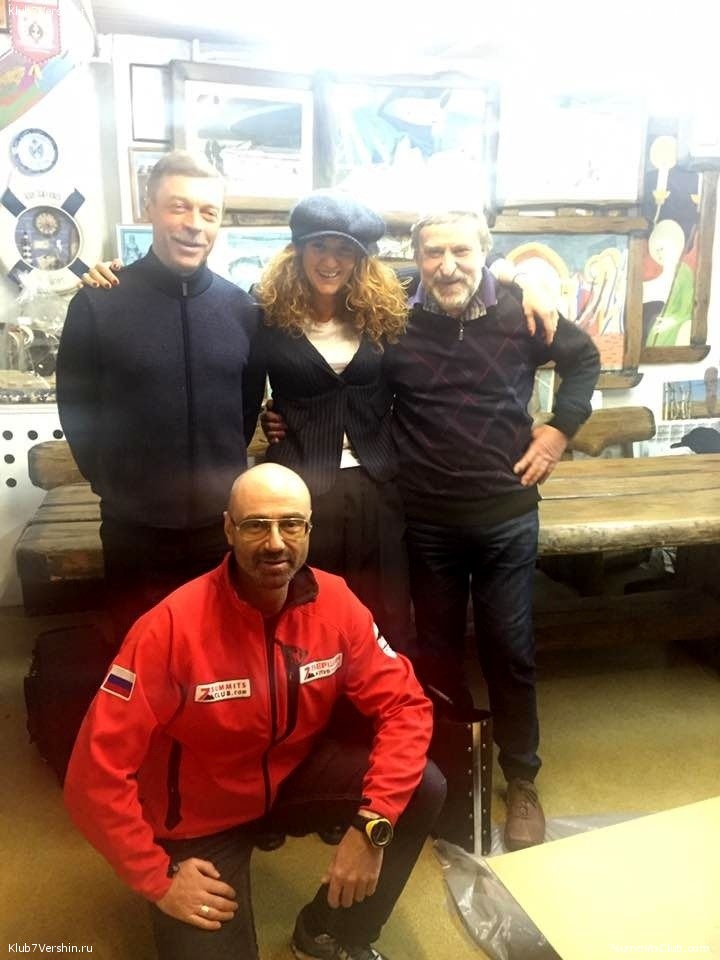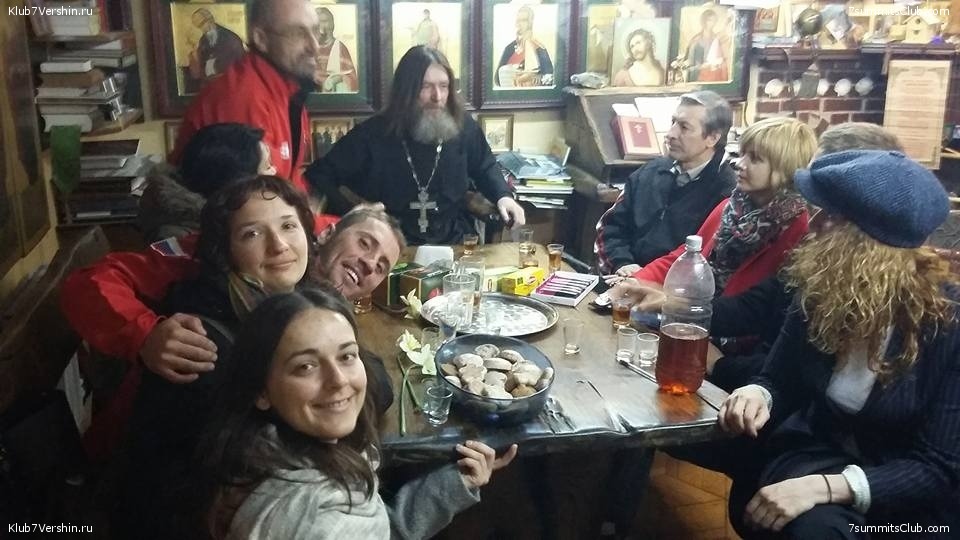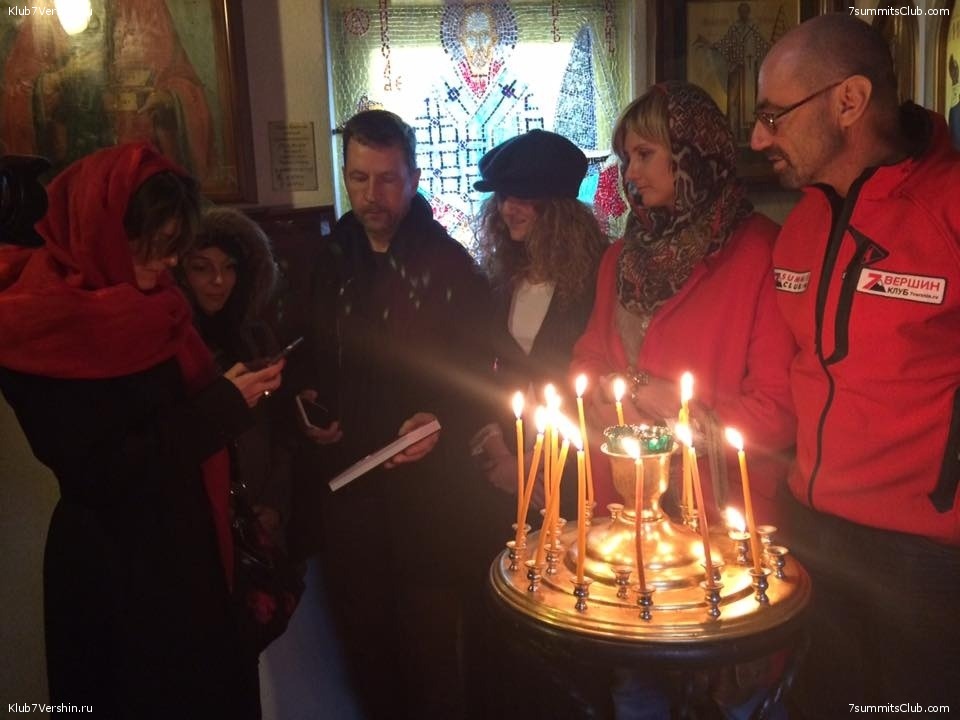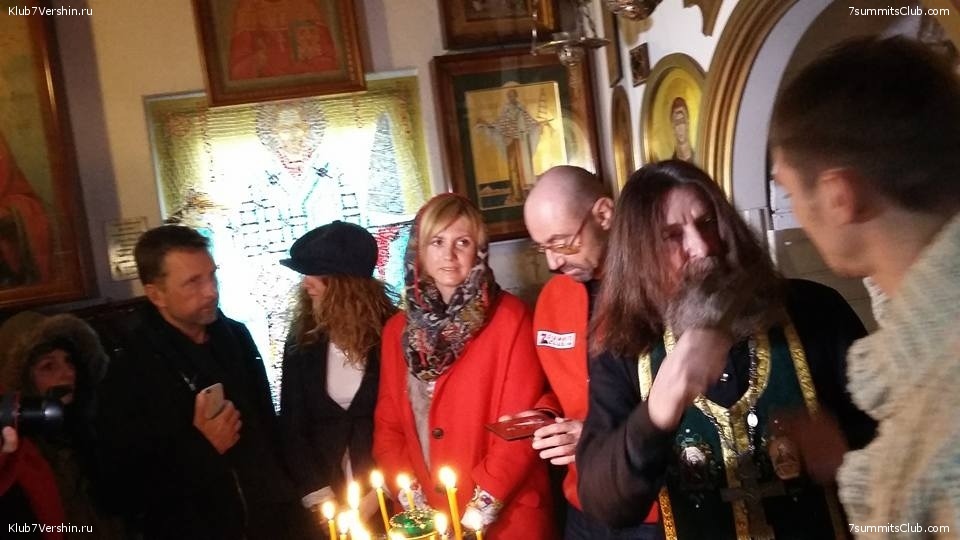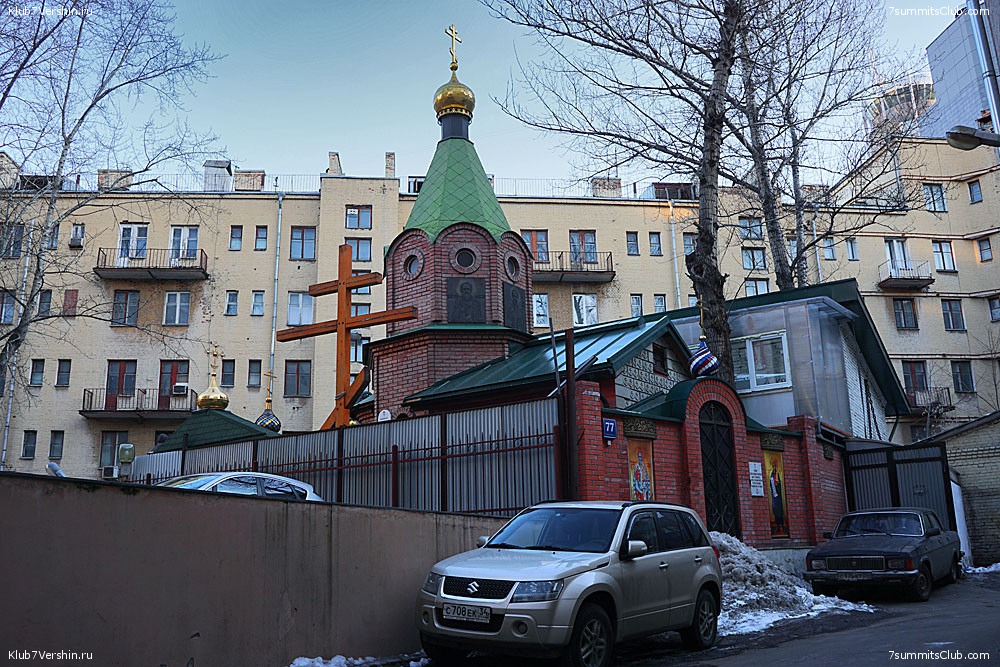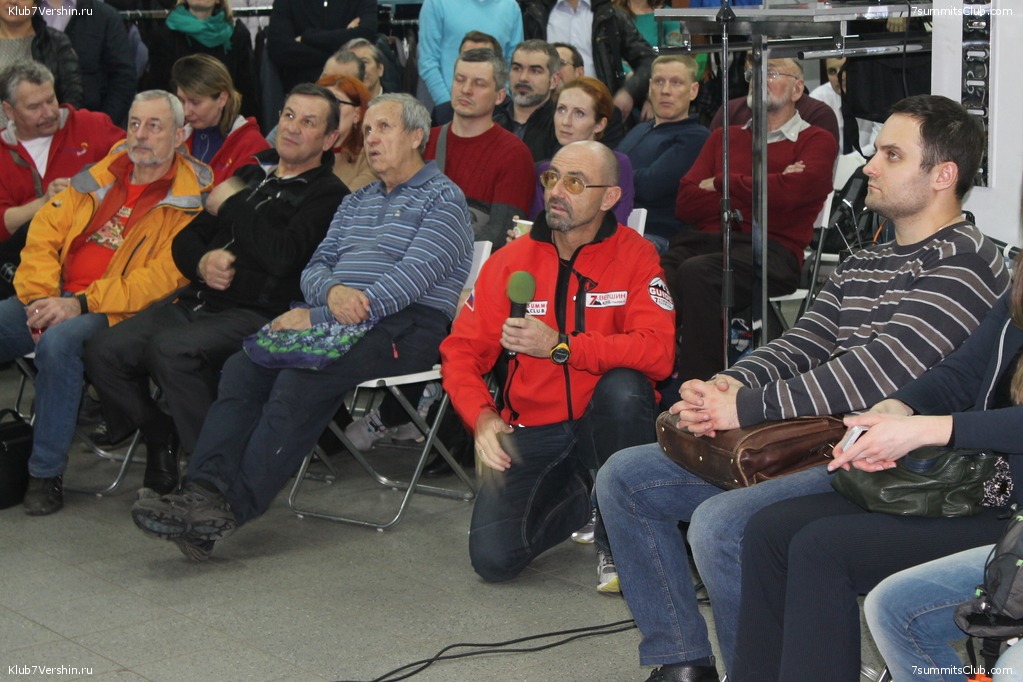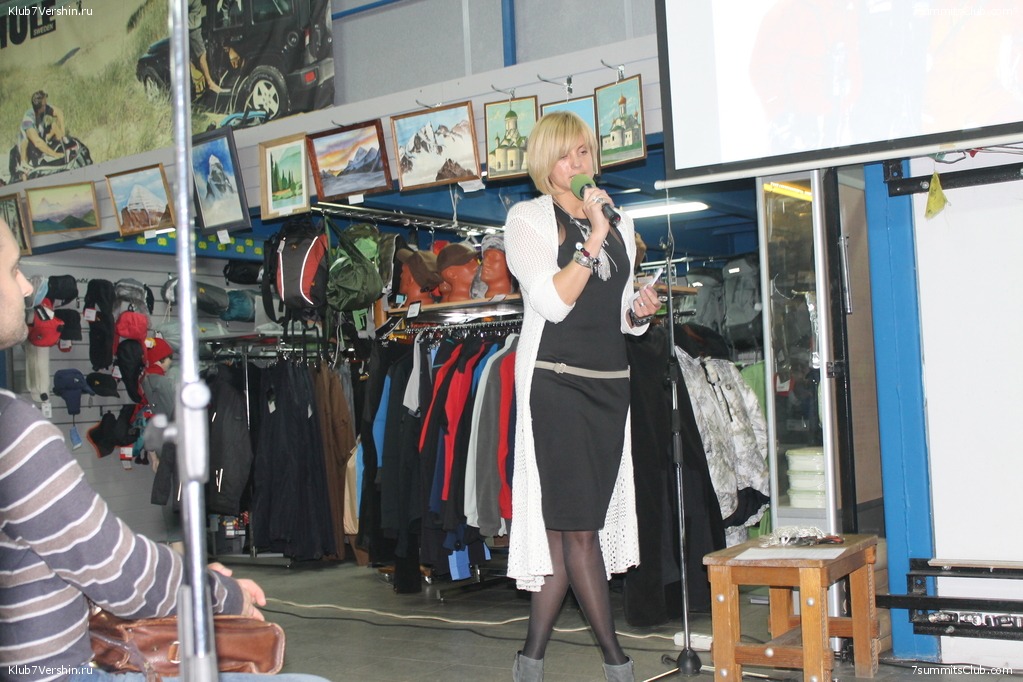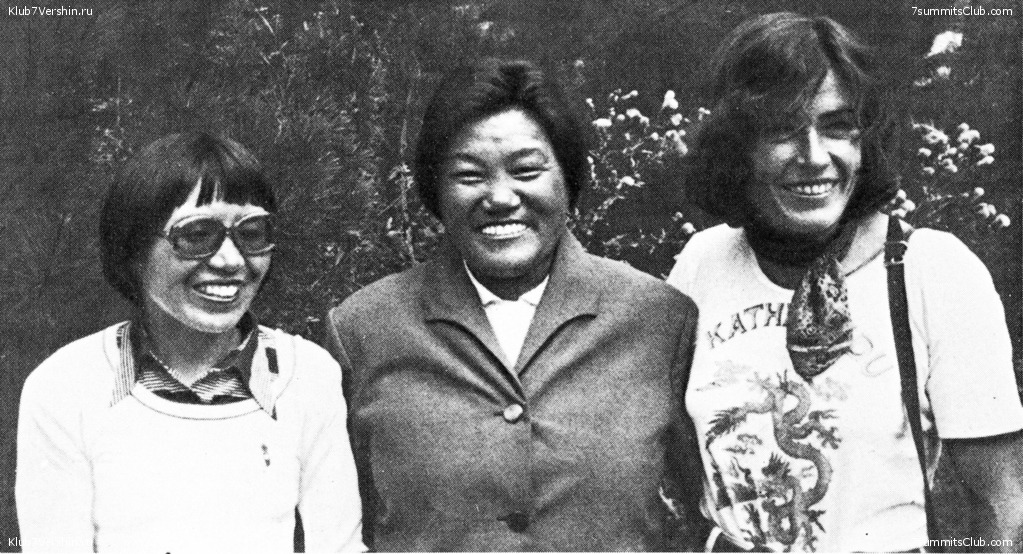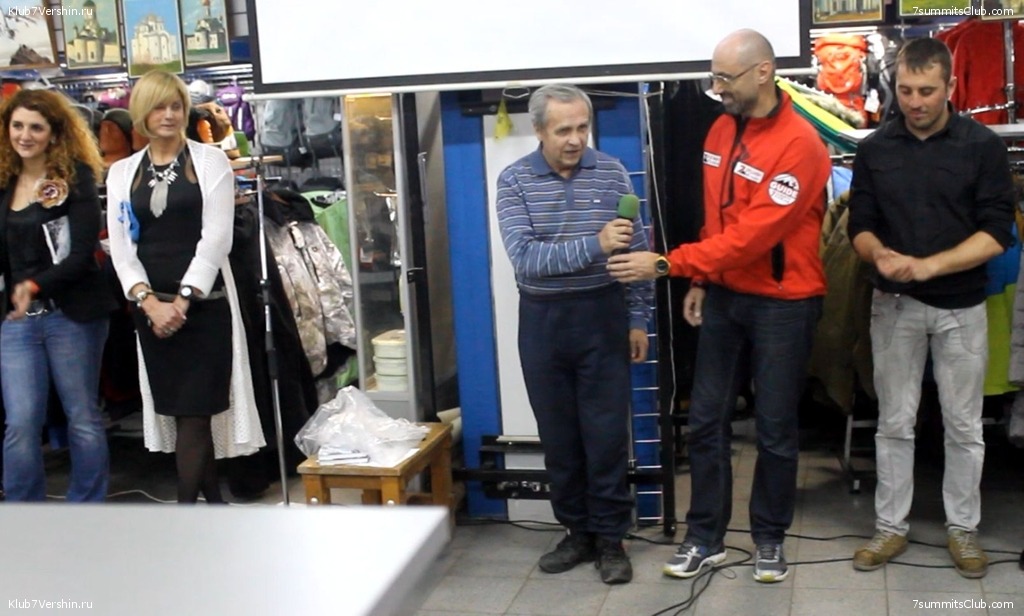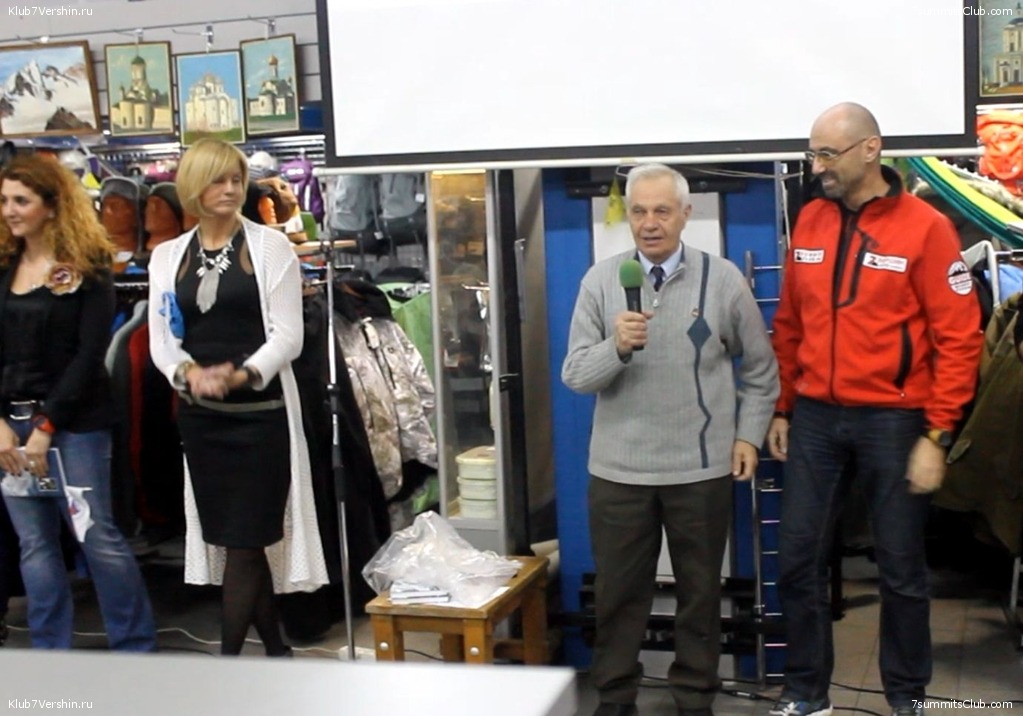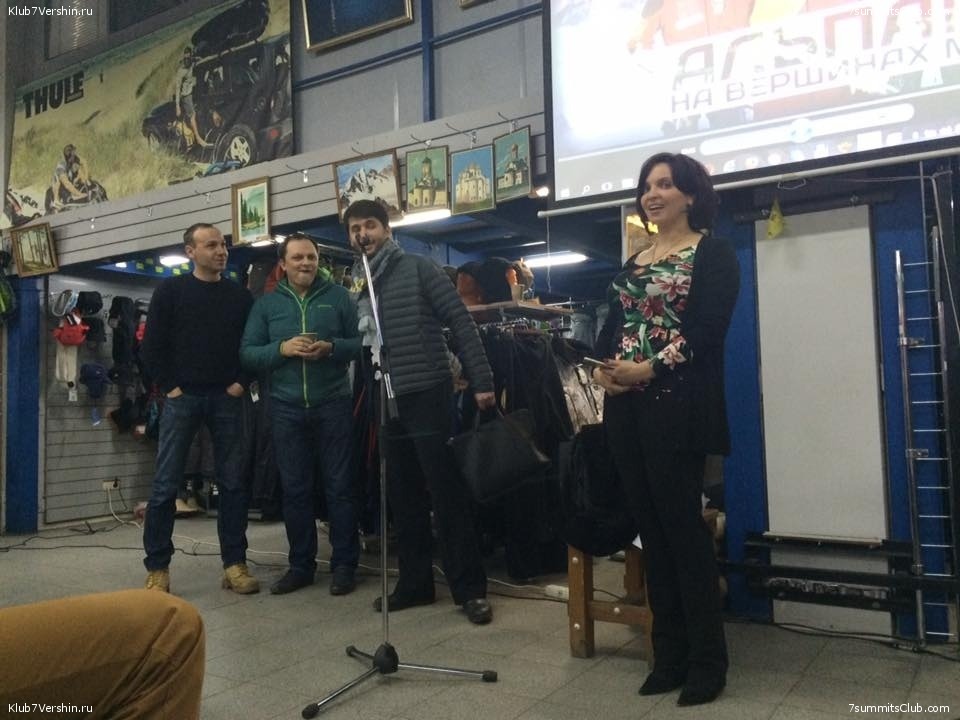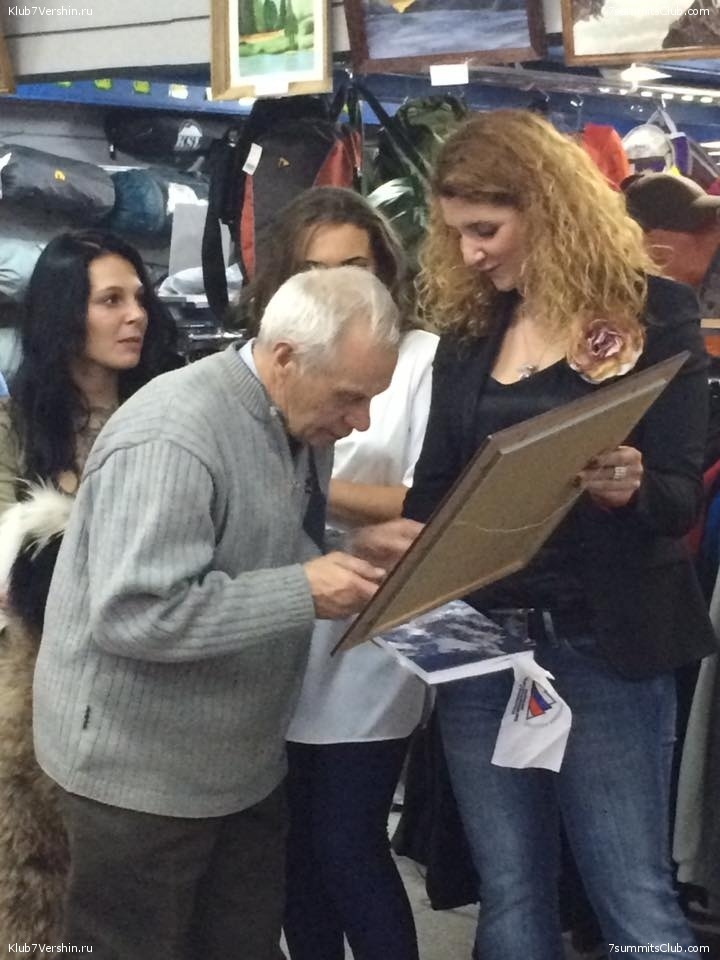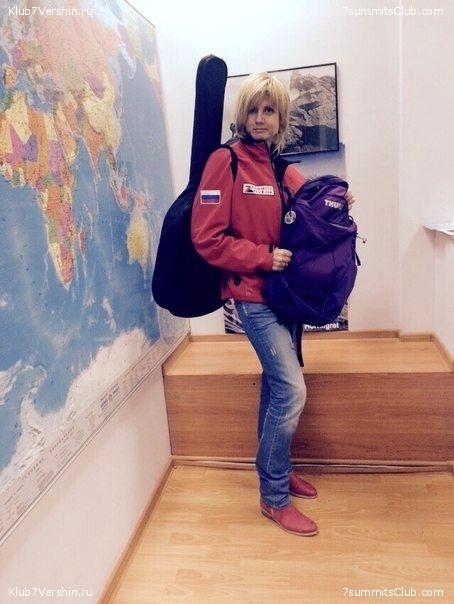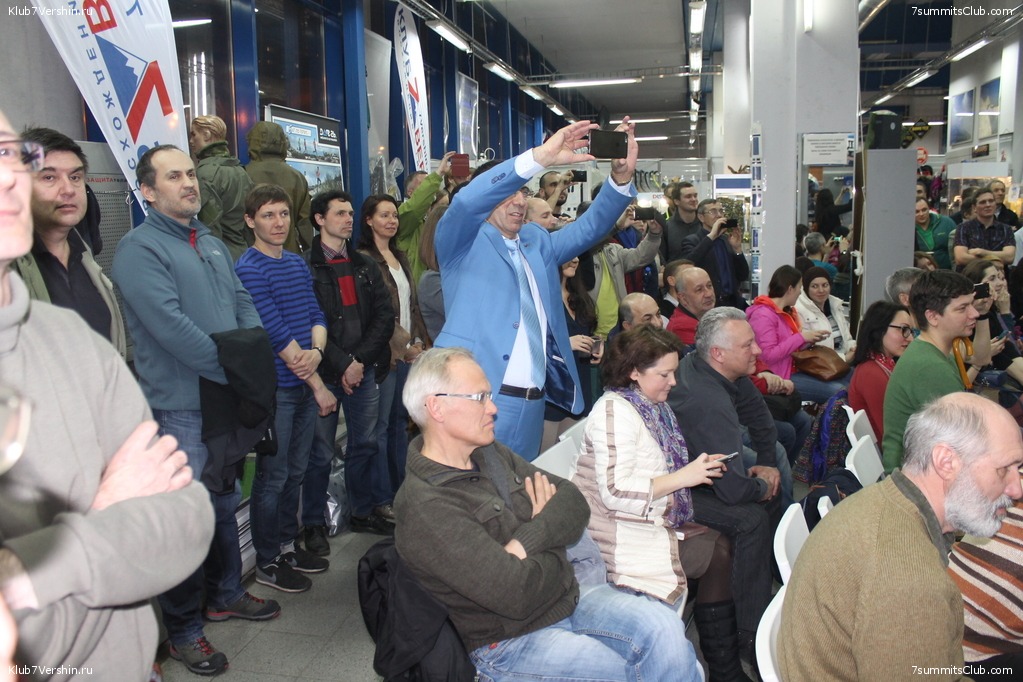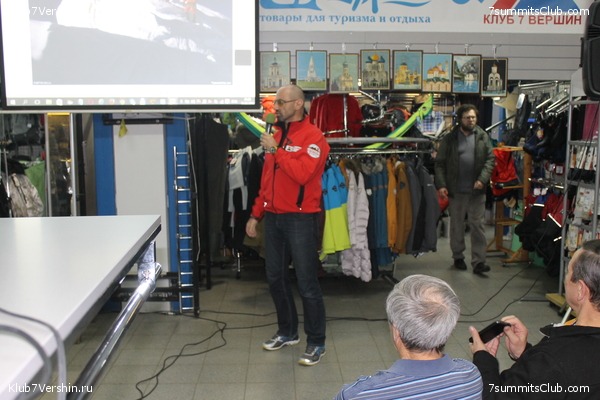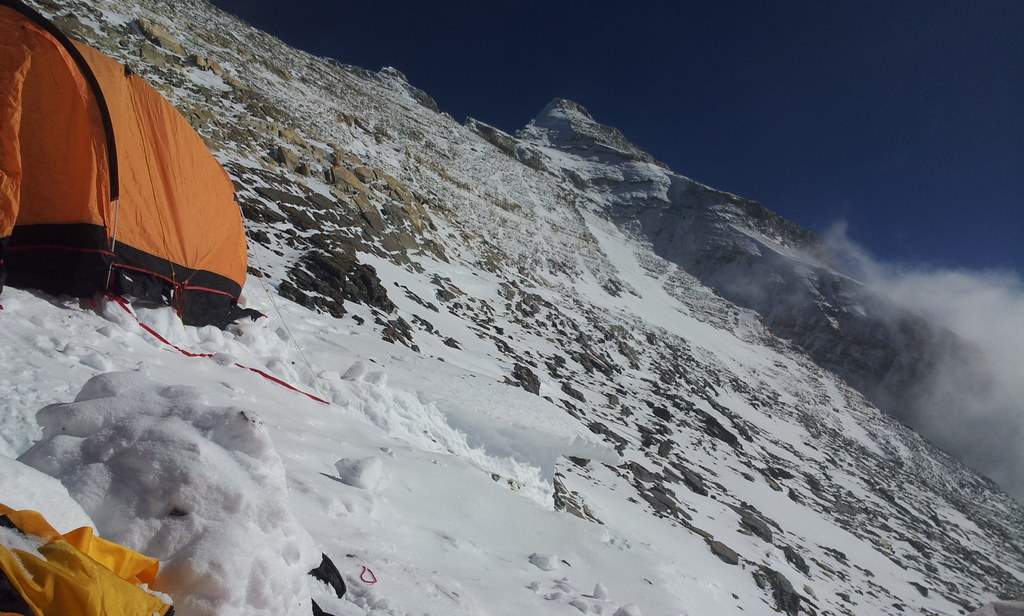"7 Summits + 2 Poles" project news - Page 129
Team of Andrey Berezin reached their maximum at Elbrus and received certificates
Elbrus.
Hello! It is Andrey Berezin from Terskol. Today is the day was rich in emotions, experiences and adventures. Today we had everything: new cracks on the glacier, stones whistling from the eastern peak of the head. And the snow in faces, and ...
Hello! It is Andrey Berezin from Terskol. Today is the day was rich in emotions, experiences and adventures. Today we had everything: new cracks on the glacier, stones whistling from the eastern peak of the head. And the snow in faces, and the clouds that were under feet. The team fought to the end and the guys have reached the maximum height to which they sought today. Maximum we had - 5300 meters, the height of the Saddle of Elbrus. Now, all alive and well, and most importantly - happy, are sitting in the hotel "Povorot". They share experiences with each other. We also note the solemn presentation of certificates. Thanks to all! Andrey Berezin
Everest Team of the 7 Summits Club went down for complete rest per one kilometer below the base camp
Everest.
Lyudmila Korobeshko: Our group made a second acclimatization circle with one overnight stay in the Camp Middle and two overnight stays in camp ABC at 6400. The most difficult were two factors: a strong wind, which bent tents almost ...
Lyudmila Korobeshko: Our group made a second acclimatization circle with one overnight stay in the Camp Middle and two overnight stays in camp ABC at 6400.
The most difficult were two factors: a strong wind, which bent tents almost to the ground, and the presence of mice at the 6400, which caused extremely violent reaction of the Armenian part of the women's group.
Ice and fixed rope training went according to the plan. I would especially like to note the debut of Christina Kozlova. It was the first time in her life she picked up jumar, descender, self-belay and carabiner. And she could confident use all for the first time at an altitude of 6400. Where the usual things hardly repeat. Christina - chief director RD studio, and theoretically she could just walk around the base camp and give orders.
After two nights at the 6400 all rushed down with incredible speed: to bath, pool and cinema.
In the next three days the expedition will rest according the plan.
Today we have a day of complete rest, we went down 1000m, drink thick O2 at 4200, eat tomatoes with sugar, catch fish, driving along the rivers by car, and dance on the ruins of castles ...
The team went to the cycle of acclimatization in camp ABC
Everest.
Lyudmila Korobeshko: the Puja ceremony was hold today in our camp. It means a blessing of all participants for a successful ascent. Lama of Rongbuk Monastery performed the ceremony. Now we definitely ready for the 6400! Today we ...
Lyudmila Korobeshko: the Puja ceremony was hold today in our camp. It means a blessing of all participants for a successful ascent. Lama of Rongbuk Monastery performed the ceremony. Now we definitely ready for the 6400! Today we will climb in the Middle Camp, tomorrow – to the ABC
Journey to the North Pole in the photographs of Vasily Shakhnovsky
Not so long ago Vasily Shakhnovsky with Alexander Abramov visited the South Pole. And now he and his family were already at the North Pole - in the group of Olga Rumyantseva as a guide ... Congratulations! And thanks for ...
Not so long ago Vasily Shakhnovsky with Alexander Abramov visited the South Pole. And now he and his family were already at the North Pole - in the group of Olga Rumyantseva as a guide ... Congratulations! And thanks for providing photos for publication ...
News from the 1st women Russian expedition to Everest
Everest.
April 24th. Yesterday we came back from a two-day acclimatization outing in the Middle Camp 5800, where they spent the night. Despite the fact that the distance is not very large - 10 km, and the drop is only about ...
April 24th. Yesterday we came back from a two-day acclimatization outing in the Middle Camp 5800, where they spent the night. Despite the fact that the distance is not very large - 10 km, and the drop is only about 700m, it was not easy to us. We walked up about 8 hours, all time under blowing of strong wind. And the last two hours the snowstorm began. We almost lost the way. In the camp, we came up with numb hands and feet, and some even fall into the river. So 200 gram of vodka Beluga, which Irena prudently brought with her, really saved and warmed us.
The night at 5800 was quite difficult - the wind was very strong, the strongest for the last week, only by miracle tents were not broken, although some stocks were bent.
Early in the morning at first light, we rushed down. By lunchtime we were in the base camp.
In the evening, Facundo Arana came to visit us. He is the star of Argentine cinema (singer and musician, as it later turned out), caused excitement of all our girls. We agreed that in September this year when Facundo will be in Moscow on tour, we will invite him to dinner together with all the participants of the expedition to Everest.
Today, April 24, we have rest day, as well as bath day.
Tomorrow, April 25th we plan for the 4 days go up: Night at 5800 and two nights in 6400 on the ABC camp.
Today the 7 Summits Club Everest expedition arrived in the Base Camp
Everest.
Today, all of our big expedition of the 7 Summits Club (and the 1st Russian women's expedition as a part) arrived to the Base Camp of Mount Everest at an altitude of 5100. Almost a week we went here. First, Kathmandu, ...
Today, all of our big expedition of the 7 Summits Club (and the 1st Russian women's expedition as a part) arrived to the Base Camp of Mount Everest at an altitude of 5100.
Almost a week we went here. First, Kathmandu, checking gear, document, festive ceremony of the start of the expedition. Then we made the flight to Lhasa at the altitude of 3600 - we were in the capital of Tibet. Visit Potala - the Palace of the Dalai Lama. Moving higher and higher: Shigatse, Xegar (with acclimatization climb to 4700) and today finally arrive at our base camp. The camp is well equipped: individual tents for all members of the expedition, dining room, kitchen, internet club, a huge recreation tent with sports equipment. Well, a sauna, finally. But still, we know from experience, the first night at this altitude is not easy.
However, until now, all members feel good. In the next couple of days we will be in the base camp to make radial trips to acclimatize.
Xegar. Acclimatization climb or photo shoot
Everest.
April 18th a large team of members and guides of the Everest expedition of the 7 Summits Club made an acclimatization ascent to the top near a small town in the district Xegar (New Tingri). During the ascent we made a lot of pictures, ...
April 18th a large team of members and guides of the Everest expedition of the 7 Summits Club made an acclimatization ascent to the top near a small town in the district Xegar (New Tingri). During the ascent we made a lot of pictures, some of the photos, see the end of our posts. Or full ones here:
BY THE WAY! During the movement of a group can be followed on-line via this link (thanks to Noel Hanna)
The chronicle of the Everest-2016 expedition. Day 6 (17 April). Moving to 4200 meters Xegar
Everest.
Yesterday, the main part of the Everest expedition of the 7 Summits Club moved from the city of Shigatse in Xegar through the highest pass (5300m). At the same time, we continue to make short acclimatization outings and excursions to local ...
Yesterday, the main part of the Everest expedition of the 7 Summits Club moved from the city of Shigatse in Xegar through the highest pass (5300m). At the same time, we continue to make short acclimatization outings and excursions to local attractions.
Our team reached the North Pole!
Our group led by a guide of the 7 Summits Club Nastya Kuznetsova finally reached the North Pole !!! We have been waiting for this for about two weeks. The Barneo runway was cracked three times, the planes were not given permission to ...
Our group led by a guide of the 7 Summits Club Nastya Kuznetsova finally reached the North Pole !!! We have been waiting for this for about two weeks. The Barneo runway was cracked three times, the planes were not given permission to take off. But everything is behind - the goal is reached! We look forward to returning and details ...
This is Tibet! Moving from Lhasa to Shigatse
Everest.
April 16th the main part of the expedition 7 Summits Club on Everest moved from Lhasa (Tibet capital) in the largest city on the way to Everest - Schegatse. It is another 200 kilometers. Acclimatization continued, in particular in ...
April 16th the main part of the expedition 7 Summits Club on Everest moved from Lhasa (Tibet capital) in the largest city on the way to Everest - Schegatse. It is another 200 kilometers. Acclimatization continued, in particular in autotravel mode. Altitude presses, cool, a dull life, but it's useful to adapt ...
Arrival in Tibet. 14-15th of April, Lhasa - the capital
Everest.
14.04. We started with the fact that before breakfast passed the luggage. Then we made a farewell photos from Kathmandu and went to the airport. Fly for about an hour. The plane was shaking terribly over the Himalayas. In Lhasa ...
14.04. We started with the fact that before breakfast passed the luggage. Then we made a farewell photos from Kathmandu and went to the airport. Fly for about an hour. The plane was shaking terribly over the Himalayas. In Lhasa airport, we were impressed by the cleanliness and order. We lived in a comfortable hotel, fed a delicious lunch.
Here, the height of 2.5 kilometers higher than in Kathmandu, get used.
Next day, while the expedition leaders solve the problem with permissions, others commit sightseeing tour.
Press Release of the Everest expedition 2016 of the 7 Summits Club
Everest.
In a time when most Western companies have come to Everest with mini-expeditions, with 2-4 clients, Russian 7 Summits Club came with 22 clients and 4 guides! It is in terms of sanctions against our country and the ...
In a time when most Western companies have come to Everest with mini-expeditions, with 2-4 clients, Russian 7 Summits Club came with 22 clients and 4 guides! It is in terms of sanctions against our country and the uncertainty of the situation in Nepal and China!
11th of April. Kathmandu
April 12th in Kathmandu a big international mountaineering expedition on Mount Everest of the 7 Summits Club starts. Number of participants - 26 people, including 16 people who plan to climb to the highest point - 8,848 meters. The climb will be carried out by the classical route from the north, from Tibet. All members of the expedition are planning to climb using artificial oxygen produced in Russia. A large group of high-altitude porters and kitchen staff (Sherpas nationality) will run with the expedition team. The service will be provided by Nepalese company 7 Summits Adventures.
Expedition leader - Alexander Abramov. This will be his 14th expedition as leader on the world's highest peak
List of participants:
With Permit Everest (8848 m)
- Olegs Pimenovs. Latvia.
- Igor Demyanenko. Russia.
- Janusz Kochanski. Poland.
- Vladislav Moroz. Russia.
- Roman Reutov. Russia. The representative of the company Yandex.
- Liana Chabdarova. Russia.
- Irena Kharazova. Russia.
- Lynn Hanna. Northern Ireland.
- Lay Kwai Chung. China.
- Tatiana Yalovchak. Ukraine.
Cameramen (permit for Everest - 8,848 m)
- Denis Provalov. Russia.
- Vladimir Kotlyar. Russia.
Guides (permit for Everest - 8,848 m)
- Alexander Abramov. Russia. 6 ascents to the summit.
- Sergey Larin. Russia. 4 ascents to the summit.
- Lyudmila Korobeshko. Russia. 2 ascents to the summit.
- Noel Hanna. Northern Ireland. 7 ascents to the summit.
Total the top of Everest climbers 16 (12 + 4)
Planned record achievements:
Alexander Abramov - Lyudmila Korobeshko: 3rd ascent of couples, the first time in the world.
Lynn Hanna - Noel Hannah: 1st in the history of climbing couples on two routes (South – North).
Liana Chabdarova: first Balkar woman.
Tatiana Yalovchak: the first woman from Ukraine.
Roman Reutov: panoramic shot record on Everest.
https://yandex.ru/promo/everest/
Group with permits for the North Col of Everest (7,000 meters)
- Andrew Viktorson. Russia.
- Nadejda Vosresenskaya. Russia.
- Marina Gevorgyan. Russia.
- Zbigniew Wolny. Poland.
- Przemyslaw Simeon. Poland.
- Maxim Shakirov. Russia.
- Elena Abramova. Russia.
A film crew of the RD studio with permits for the North Col of Everest (7,000 meters)
- Christine Kozlova. Russia.
- Alexander Kubasov. Russia.
- Vladimir Kudinov. Russia.
During the expedition the group RD studio will continue to shooting a film started last year for the main Russian television Channel One. Roman Reutov with help of experienced climber Maxim Shakirov continue to shoot the panoramic route of ascent for the Yandex company.
The 1st Russian Women's Everest Expedition team will run independently of the other groups. Leader Lyudmila Korobeshko.
Alex Abramov spoke at a meeting of the Government of Nepal, dedicated to honoring our Mingma and his sisters
Everest.
The team of the 7 Summits Club was invited to the gala evening, where the Prime Minister of Nepal honored the family of our Sirdar Mingma. They (he and two sisters) have three Guinness Recorda. In addition, Mingma was eight ...
The team of the 7 Summits Club was invited to the gala evening, where the Prime Minister of Nepal honored the family of our Sirdar Mingma. They (he and two sisters) have three Guinness Recorda. In addition, Mingma was eight times on Everest, and he is the first Sherpa on Mount Elbrus.
The head of our expedition Alex Abramov was appointed to the company of champions and honorable citizens, who have made great contribution to the development of Nepal. And he said a good speech. We are proud of!
Anastasia Kuznetsova in Svalbard joined the company waiting news from Borneo ...
Last night, almost simultaneously with the group, flying in the Himalayas, Anastasia Kuznetsova went on a long journey. In the morning she joined a large group of tourists who had gathered in the capital town of Longyearbyen in ...
Last night, almost simultaneously with the group, flying in the Himalayas, Anastasia Kuznetsova went on a long journey. In the morning she joined a large group of tourists who had gathered in the capital town of Longyearbyen in Svalbard, in anticipation of the start of flights to Barneo and the North Pole. For a week the vanguard of our polar beats with nature, trying to prepare the runway for Barneo ice camp. Ice moves, cracks, it is necessary to start from the beginning.
Only in the evening we received from Irina Orlova "... encouraging news!"
Tomorrow morning we are planning first technical flight to Barneo. In case if inspector from Rosavia will approve the runway we'll start flights with passengers
So far, all the plans mixed up ... the first group of 7 Summits Club, flying to the North Pole, the team is waiting to take off from Moscow. According to the plan, they were supposed to fly for 5th of April. Second, a large group of 16 people with a guide Nastya Kuznetsova, on the same plan at 13th of April should be on Borneo and the 14th on the Pole. There is no certainty yet. We look forward to tomorrow.
While it remains to admire the rugged beauty of Spitsbergen (Svalbard - in Norwegian)
In the northerly direction still there is delay. Because of it, Alex Abramov will not fly to the Pole
Unfortunately, when everything seemed ready for the beginning of the charter chains from Svalbard to Barneo, ice shifts came there. And the ice platform, on which runway was built, was spited Here's how it looked: ...
Unfortunately, when everything seemed ready for the beginning of the charter chains from Svalbard to Barneo, ice shifts came there. And the ice platform, on which runway was built, was spited
Here's how it looked:
Our workers had to find quickly a new ice platform and invent all sorts deals for replacement. They found a new ice platform and now in an emergency order they started for a construction of a new airport. All this caused a delay in the beginning of the expeditions to the North Pole.
Expeditions, with participants from different countries, all remain in the capital of Spitsbergen, Longyearbyen - waiting for news about the opening of the Barneo ice camp. The 7 Summits Club Team is also fully ready to fly to Svalbard and further flight to the North Pole. But due to flight delays the captain of the 7 Summits Club Alexander Abramov decided to postpone his participation in the expedition to the North Pole for the next year. He has to fly to Kathmandu to prepare for the annual meeting of the participants of the expedition on Everest.
News of the 1st Russian women's expedition to Everest. Press release
March 31th, the 7 Summits Club held a gala evening dedicated to the beginning of the Everest expedition. Vice-president of the Federation of Mountaineering of Russia (FAR) Ivan Dusharin said parting word to members of the 1st Russian ...
March 31th, the 7 Summits Club held a gala evening dedicated to the beginning of the Everest expedition. Vice-president of the Federation of Mountaineering of Russia (FAR) Ivan Dusharin said parting word to members of the 1st Russian expedition on Everest. He reminded that the expedition is officially supported by the federation and included in the calendar of events of FAR. He gave members of expedition little flags for hoisting to the summit.
President of the Moscow Federation of Mountaineering Alexei Slotyuk gave them one, but a big flag for the entry to the top.
The next day, the famous traveler and the priest Fedor Konyukhov blessed the team in his chapel in the center of Moscow.
Press release of the "1st Russian Women's Everest Expedition"
Dates: from April 12th to May 31th, 2016.
Organizer: 7 Summits Club.
The film crew of Channel One studio RD Valdis Pelsh will take part in the expedition and to continue filming that started last year.
The expedition is supported by the Russian Mountaineering Federation, the Federation of Mountaineering and Climbing in Moscow and Red Fox company.
Information about the project and participating:
Seven women from Russia are taking part in the 7 Summits Club Everest expedition in 2016. This has never been and probably never will. The project turns out unique.
Members:
- Liana Chabdarova - made 6 of 7 summits of the World and all the 7 volcanoes. She pretend to be the first Balkar (Elbrus region) woman climbed Mount Everest.
- Irena Kharazova - climber on 5 of the 7 summits.
- Marina Gevorkyan - media manager, general director of "Snob" project and an experienced climber, will attempt to climb the North Col (7000 m).
- Nadezhda Voskresenskaya - more than 10 years in mountais, will attempt to climb the North Col of Everest (7000m).
- Christina Kozlova - Director and producer of the film crew.
Director-producer, executive producer at RD Studio.
- Elena Abramova - the daughter of Alexander Abramov will attempt to climb the North Col of Everest (7000m)
7. Ludmila Korobeshko - two-times Everest summiter, two-times Seven Summits
Alex Abramov - expedition leader
Sherpas Team
NEWS BARNEO (NORTH POLE) EXPEDITION-2016. The first flight on the ice camp is made
The ice airdrome Barneo is open. April 3th in the morning , the first group from Barneo ice camp reported on the readiness of the ice runway for the reception a plane from Longyearbyen. On the morning the An-74 with the expedition team on ...
The ice airdrome Barneo is open. April 3th in the morning , the first group from Barneo ice camp reported on the readiness of the ice runway for the reception a plane from Longyearbyen. On the morning the An-74 with the expedition team on board flew to Barneo. The plane succefully landed on the ice airfield. On the ice camp a team that will build the camp was left. Construction of the camp has already begun. The next flight is scheduled for tomorrow, when Barneo said that already established residential modules where possible place people.
The temperature at -27 * Barneo. Solar, wind, 2 m / s. Coordinates: N 89 * 16 '673' and 075 * 48 E '979'.
Expedition Everest-2016 was blessed by Fyodor Konyukhov!
Everest.
On Friday, 1th April, a large group of members of the expedition 7 Summits Club Everest-2016 and their sympathizers came to visit our friend, great traveler and a great man Fyodor Konyukhov. They came for a blessing. And they got it. The ...
On Friday, 1th April, a large group of members of the expedition 7 Summits Club Everest-2016 and their sympathizers came to visit our friend, great traveler and a great man Fyodor Konyukhov. They came for a blessing. And they got it. The action takes place in the Church of St. Nicholas in the Lower Sadovniki, the so-called house-museum of Konyukhov. Or, in other words, "a chapel in memory of the dead sailors and travelers" at the art workshop of Konyukhov. All participants are very impressed with what happened, from visiting unique places, to communicate with a tireless worker, an artist and a good man Father Fyodor.
Chronicle of the festive evening of the 7 Summits Club, presenting the women's team Everest 2016
Everest.
March 31th the 7 Summits Club held a traditional evening dedicated to the traditional spring event - the departure of the expedition to Everest. Traditionally, there were many people with different ages, experience and wealth. ...
March 31th the 7 Summits Club held a traditional evening dedicated to the traditional spring event - the departure of the expedition to Everest. Traditionally, there were many people with different ages, experience and wealth. Traditionally, half of them listened to, and the other half talking to each other "in couloirs" (not in the mountain!). Traditionally, almost all left with regret, and traditionally we did not have enough time to make the scheduled. In short, this is what we call a success of the evening!
At first (unplanned) audience watched film "Messner". Then Alex Abramov, the head of all, including the Everest 2016 expedition opened the festive evening.
Alexander Abramov. Opening the evening. Few words.
History. Everest 2003-2005. Difficult experience and triumph of Sergei Larin (alone on the summit 50 years after Hillary and Tenzing)
Drama of 2006, and the success of 2007 - Lyudmila Korobeshko.
Abramov - Presentation of the Women's Team Everest. And the male part of.
Delivery of symbols. Ivan Dusharin from the Russian Mountaineering Federation
Delivery of symbols. Alexey Slotyuk from Federation of mountaineering and rock-climbing of Moscow.
Alexander Yelkov: women on Everest (historical review)
Greetings veterans:
Nicholay Cherny
Vladimir Shataev
Yuri Tinin
Songs. Oleg Banar
Everest in 2012 and the program Alpari on top of the world. Ivan Dusharin
Everest 2014 Natalia Matusow. On a perfect team.
You could buy paintings of climbers Oleg Fedorov and Bogdan Sadowski
Our soponsor: Thule
Gala evening of the 7 Summits Club, dedicated to the departure of the expedition "Everest - 2016"
Everest.
Gala evening of the 7 Summits Club, dedicated to the departure of the expedition "Everest - 2016" The 7 Summits Club invites all March 31 (Thursday), beginning at 20.00 Since 2003, we have organized 12 expeditions to Everest, ...
Gala evening of the 7 Summits Club, dedicated to the departure of the expedition "Everest - 2016"
The 7 Summits Club invites all March 31 (Thursday), beginning at 20.00
Since 2003, we have organized 12 expeditions to Everest, and this year it will be a 14th expedition. All were led by Alex Abramov. This year we have 26 members.
On this evening:
- We remember all our Everest expedition, from 2003 to 2015;
- Participants of those expeditions themselves will talk about;
- We present the team of Everest in 2016;
- We present the 1st Russian women's expedition to Mount Everest;
- We listen songs, play a lottery, chat with friends etc...
Address: Moscow, Bolshaya Pereyaslavskaya, 7
Metro Prospekt Mira
